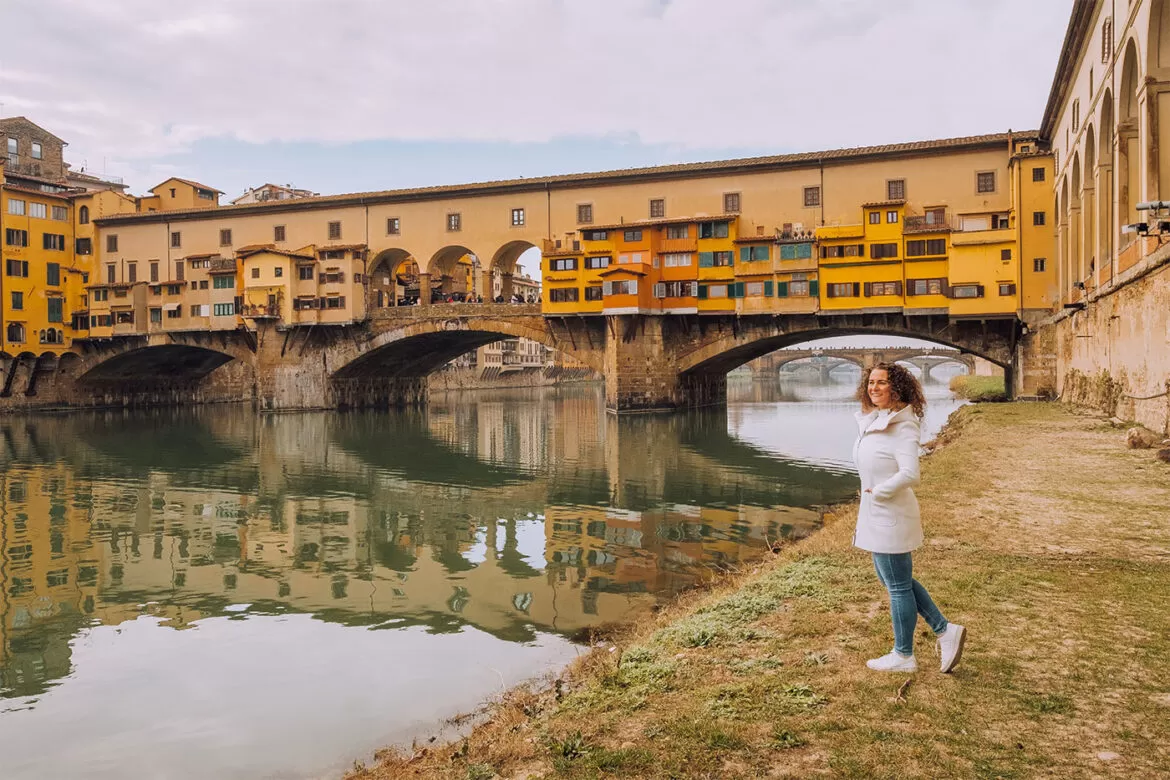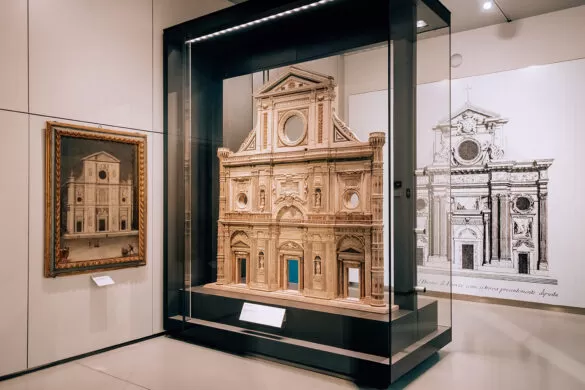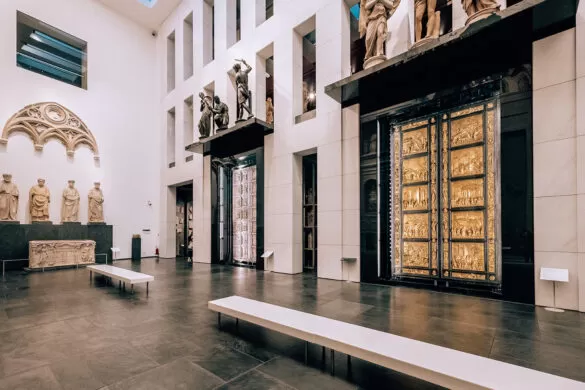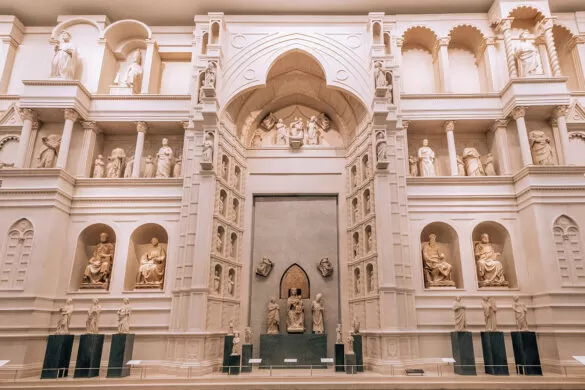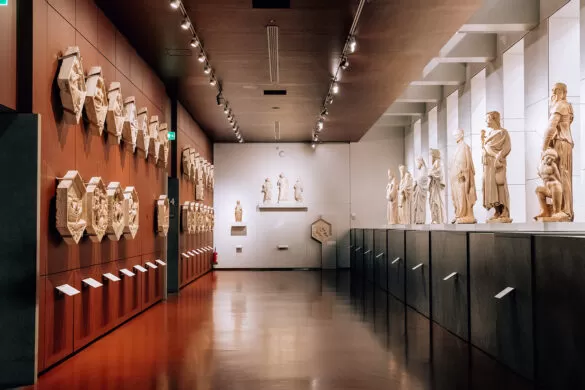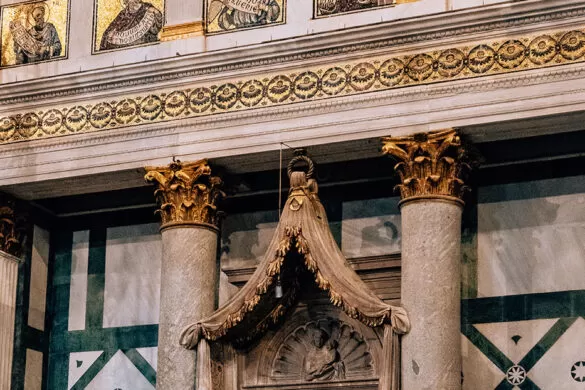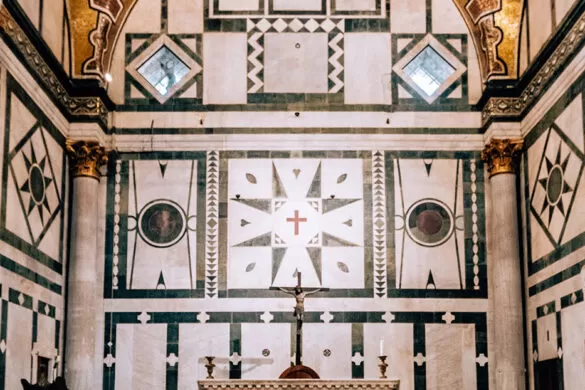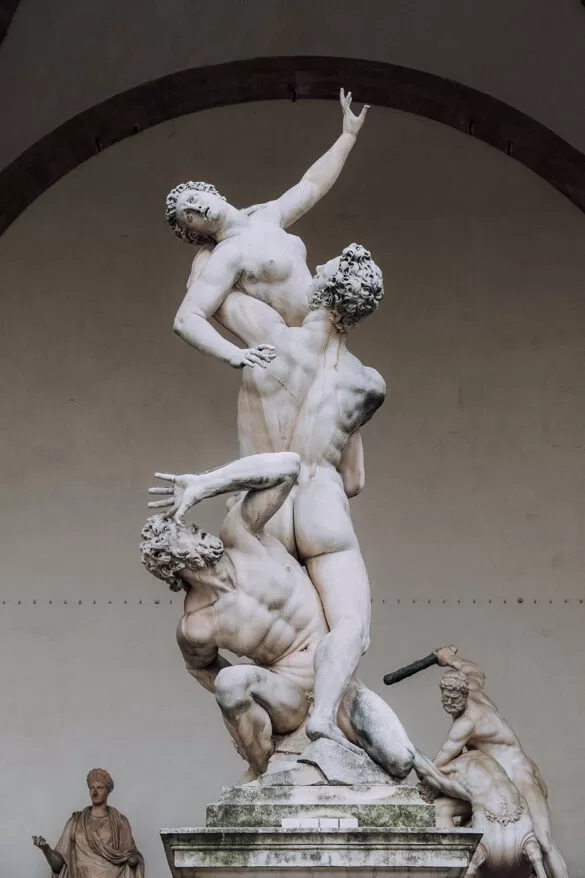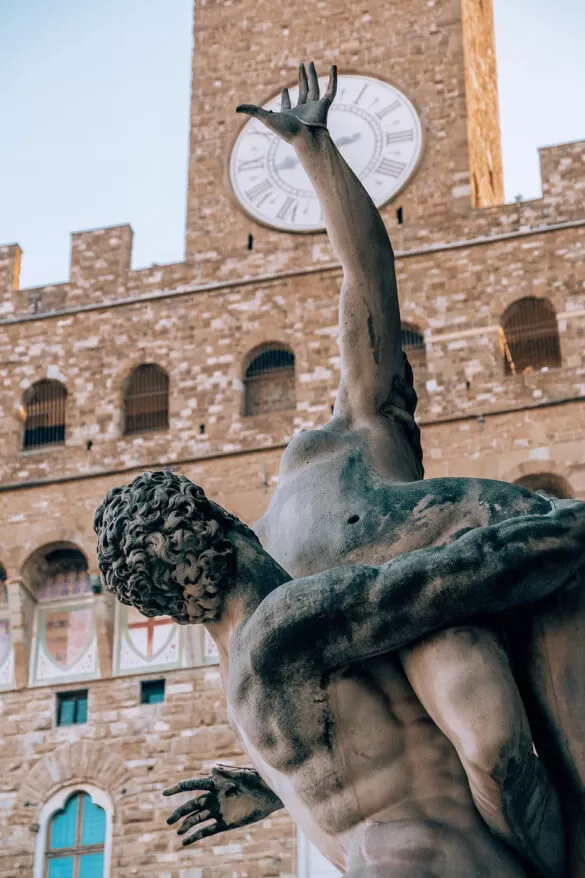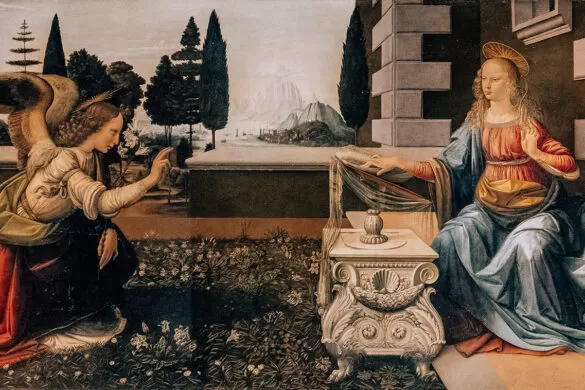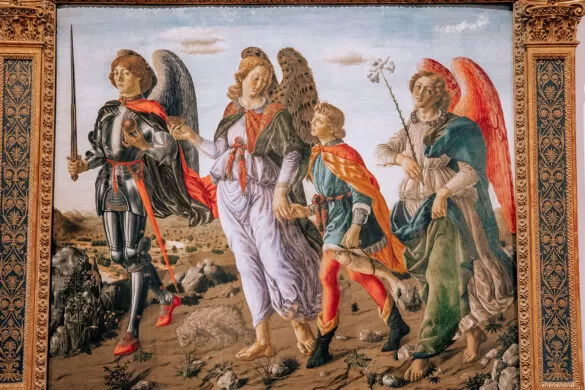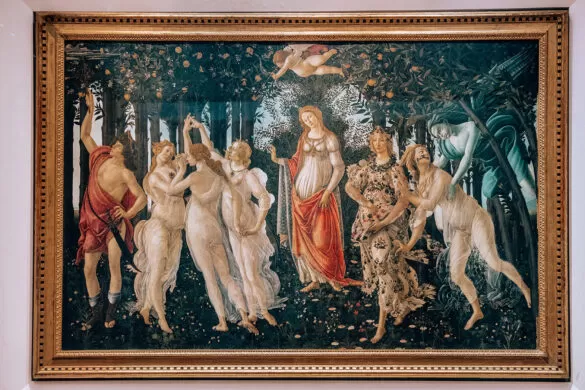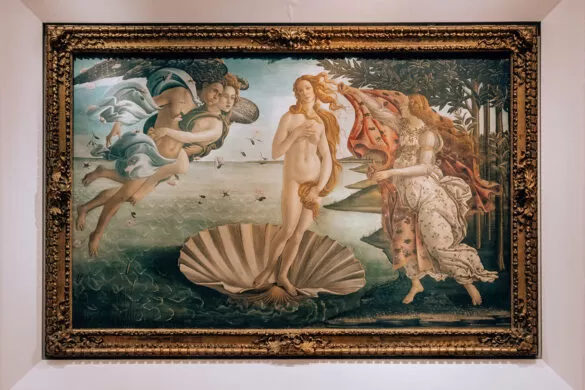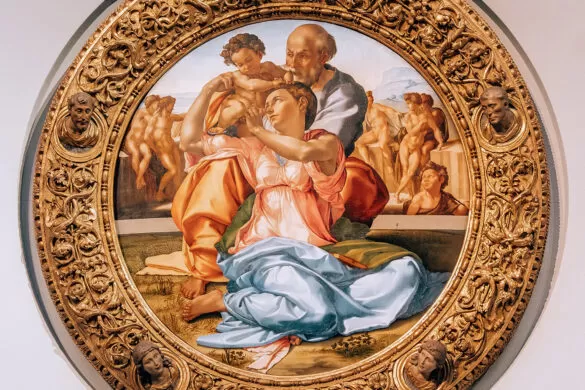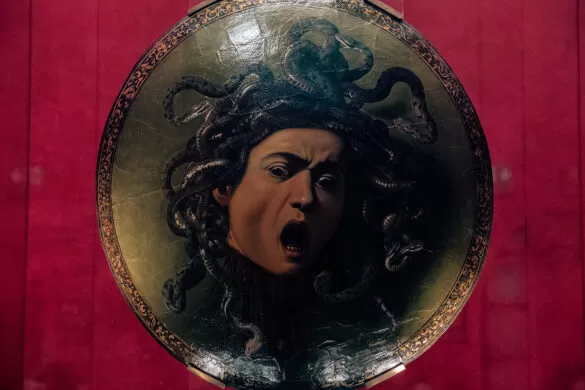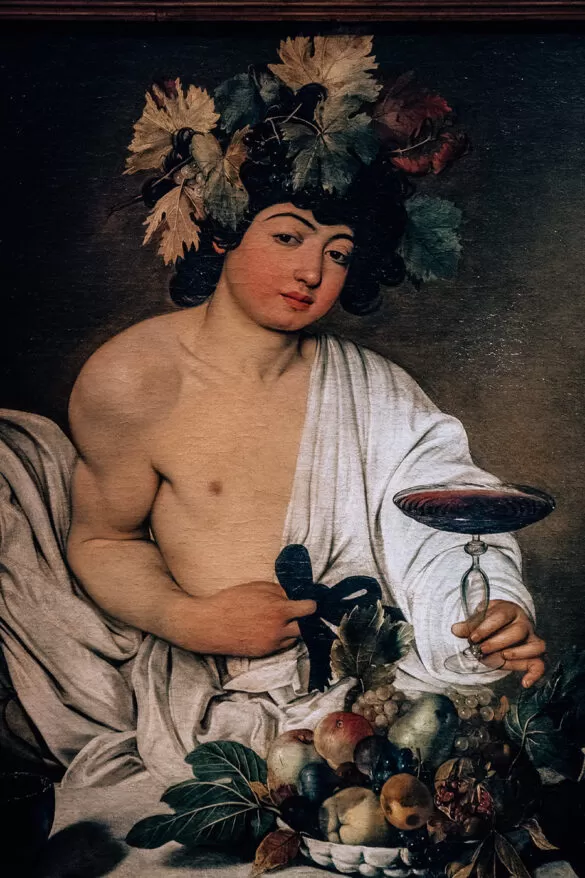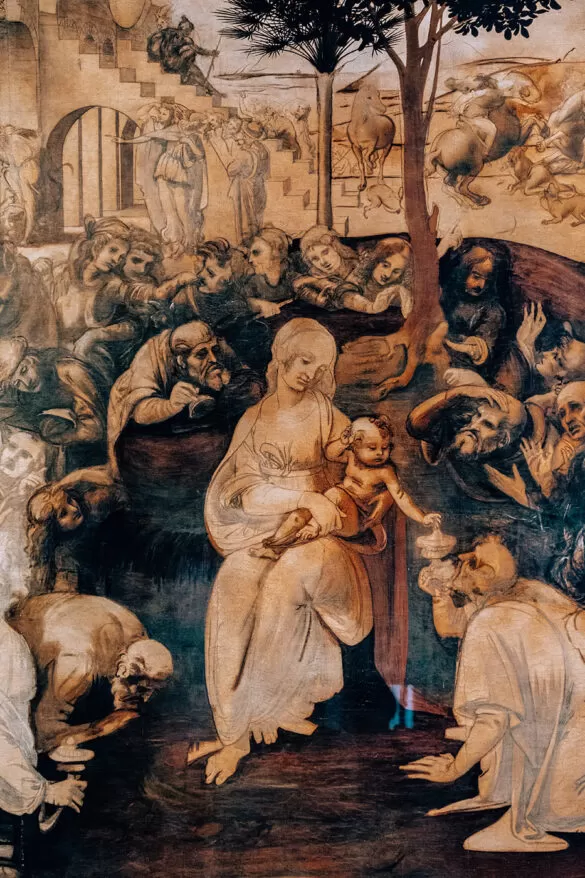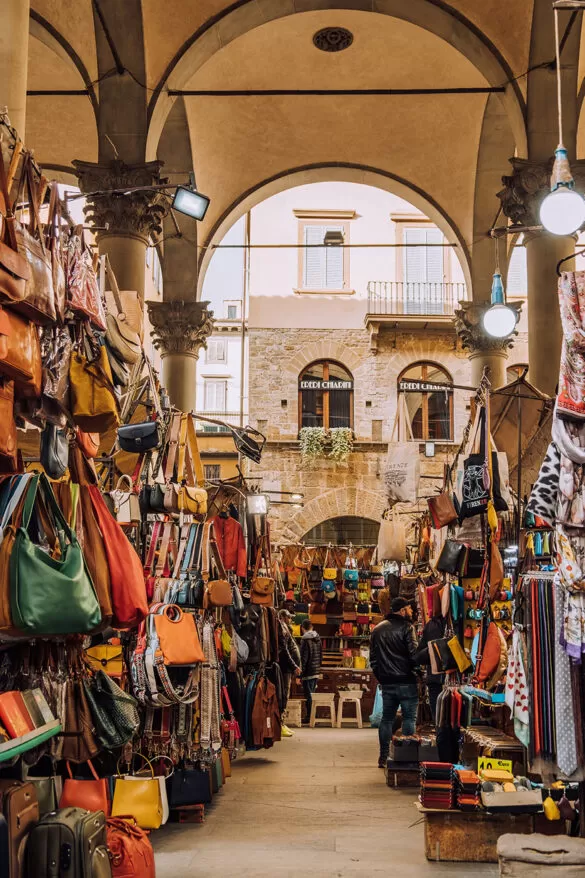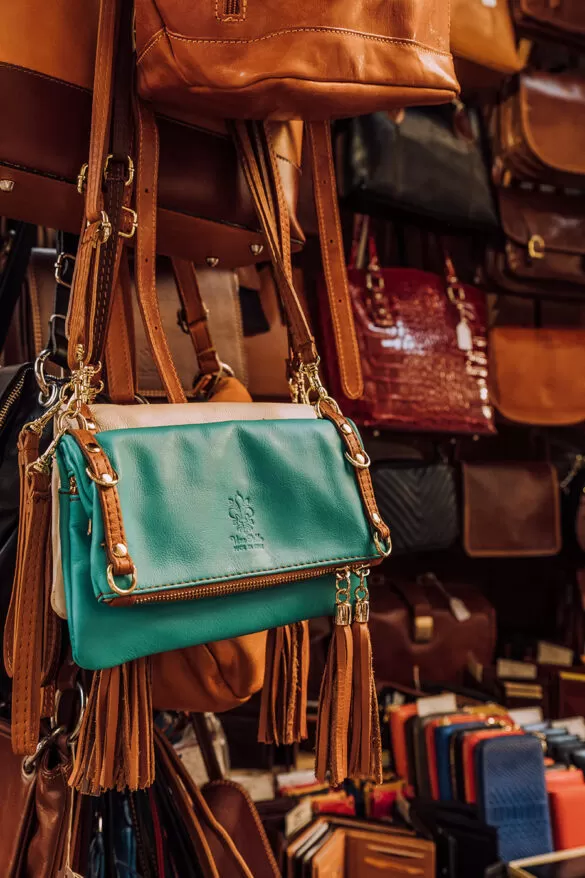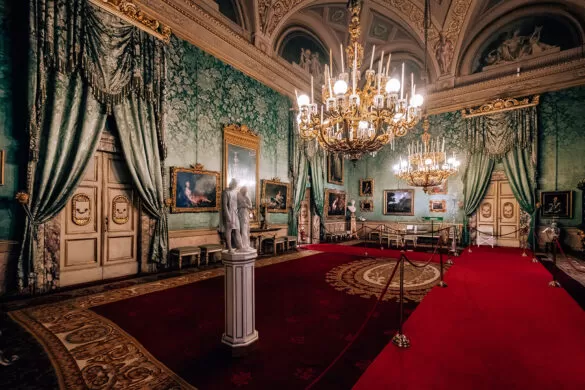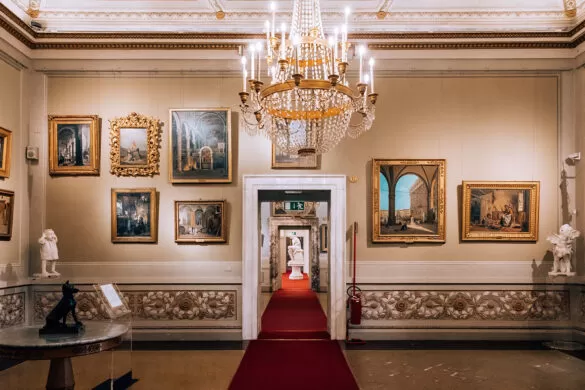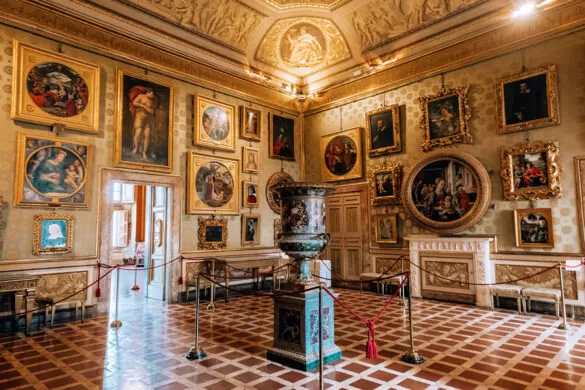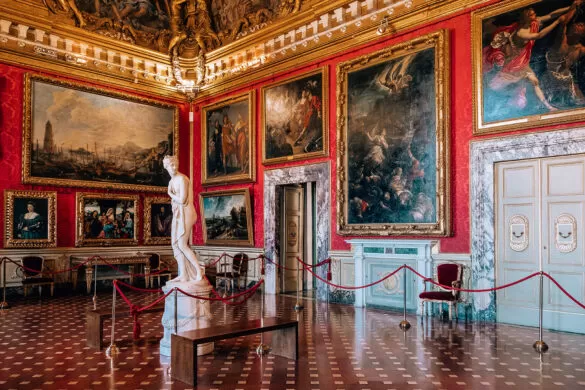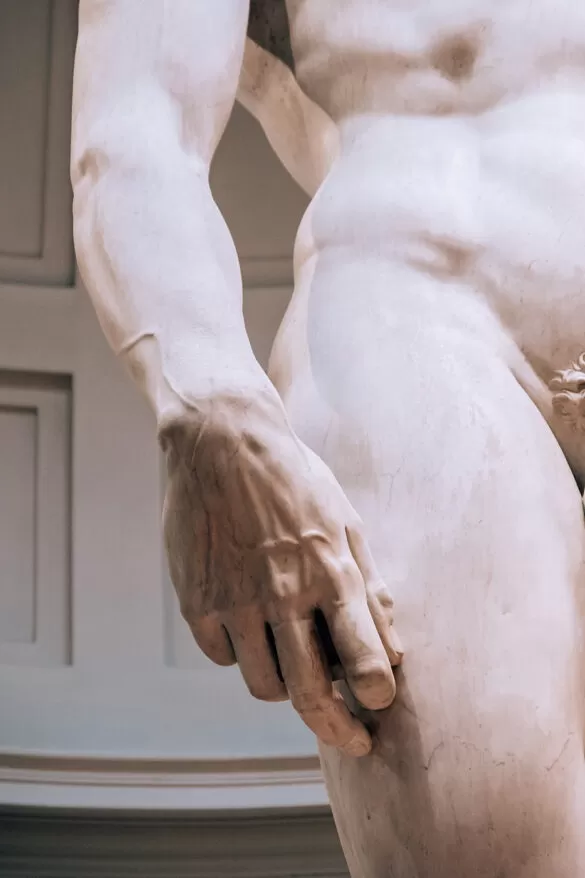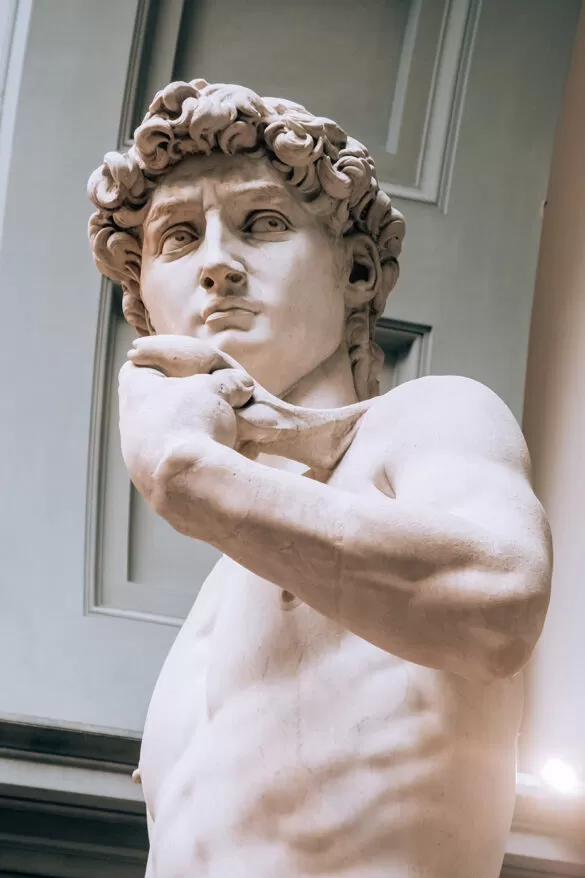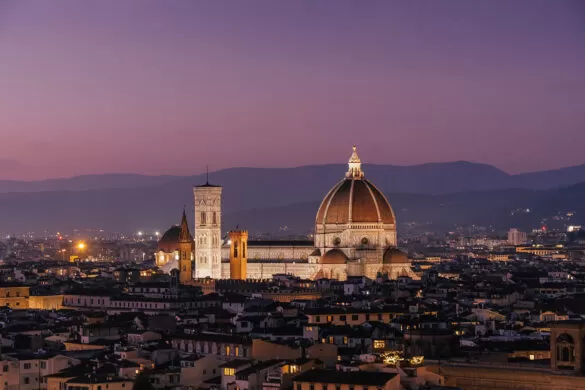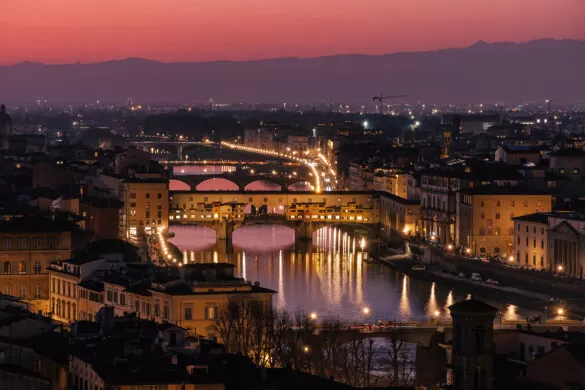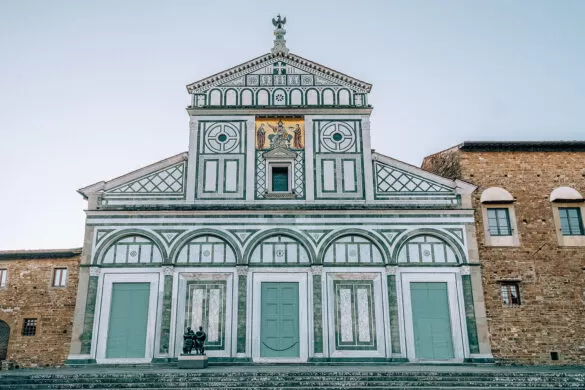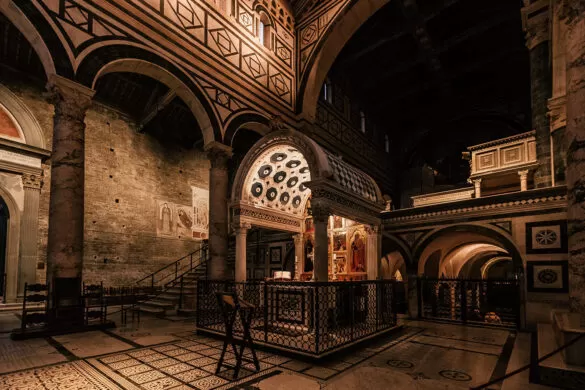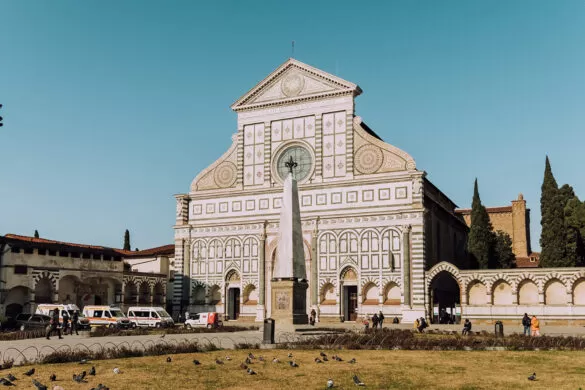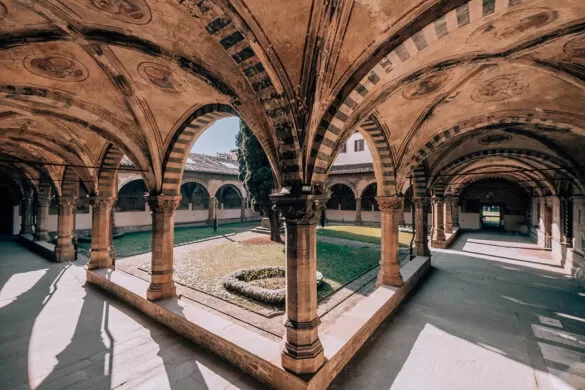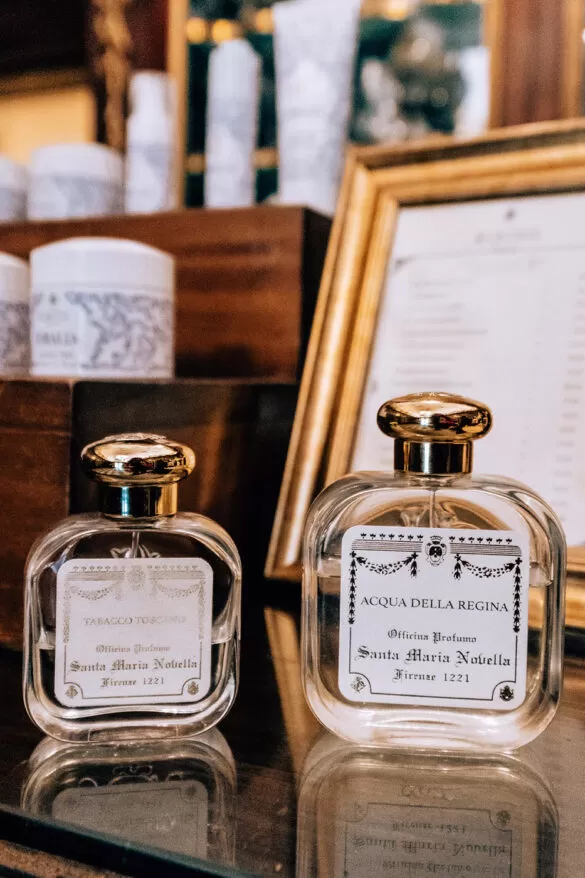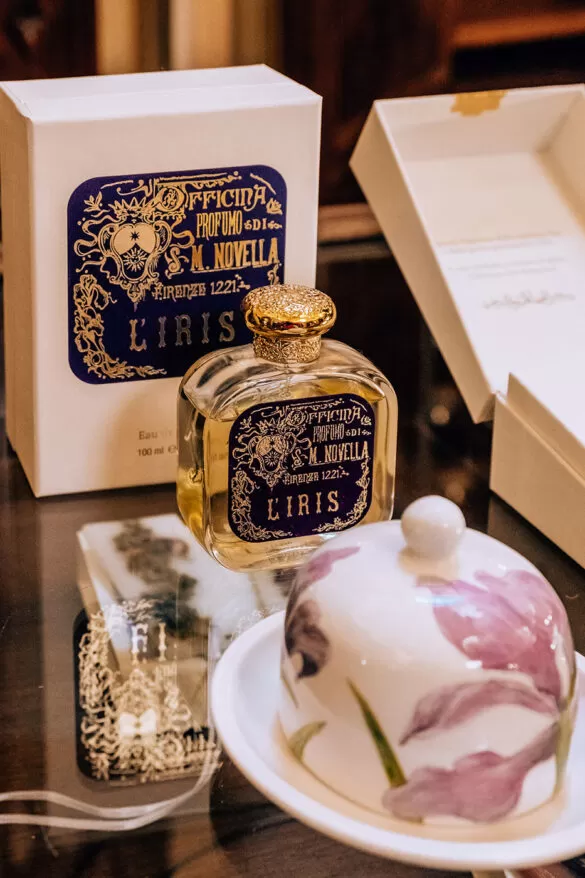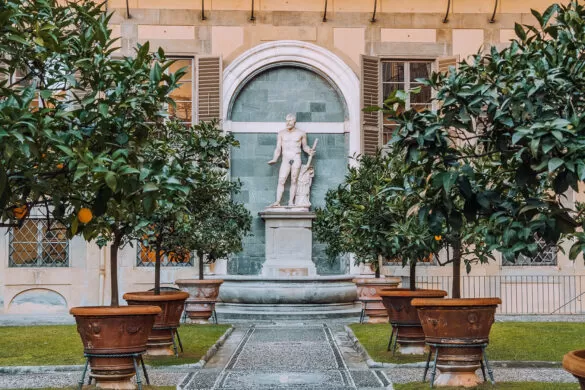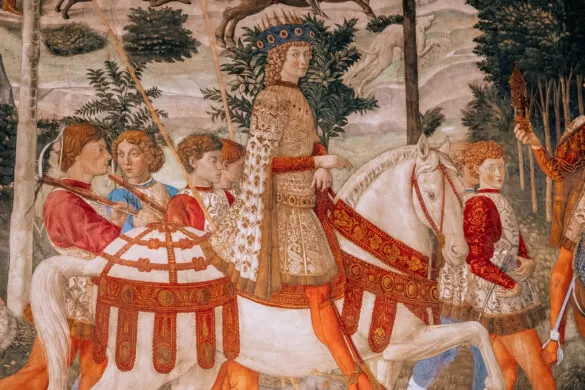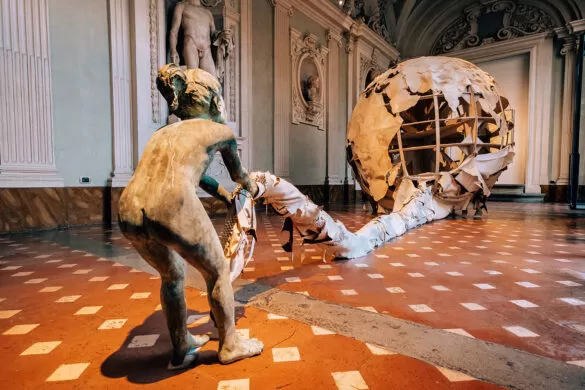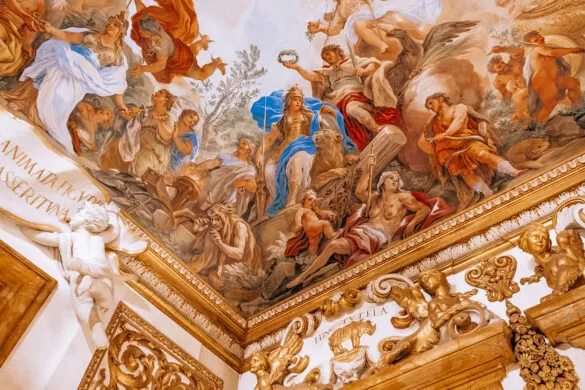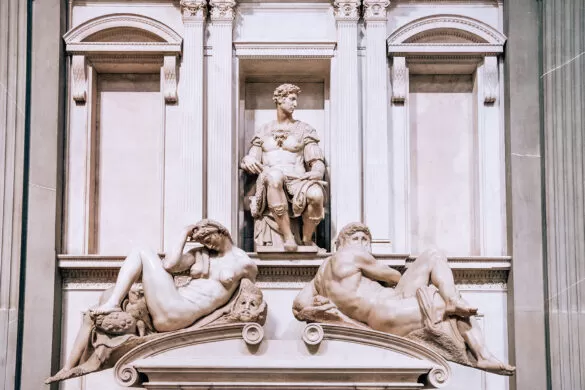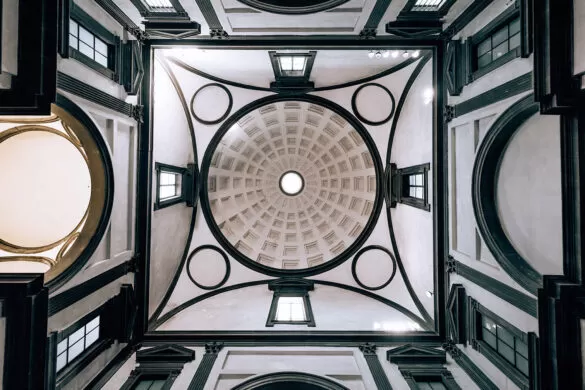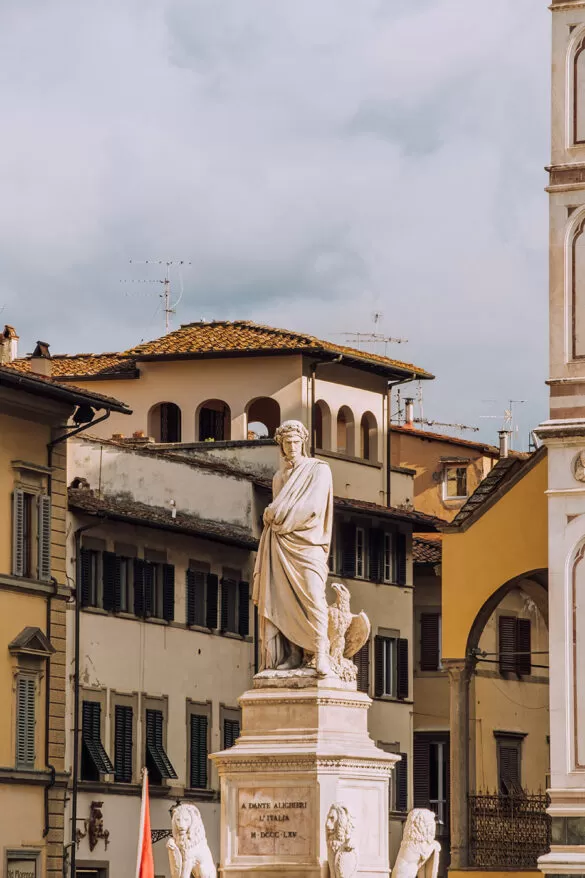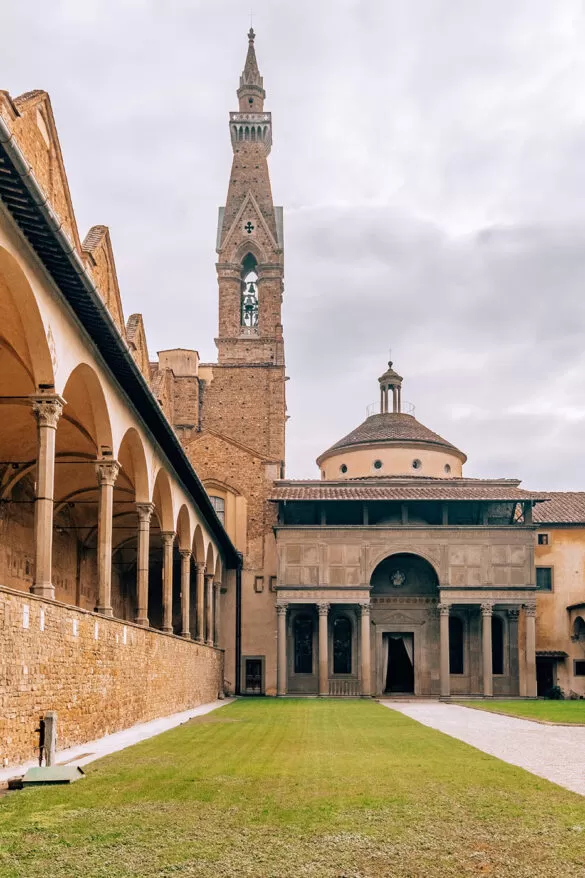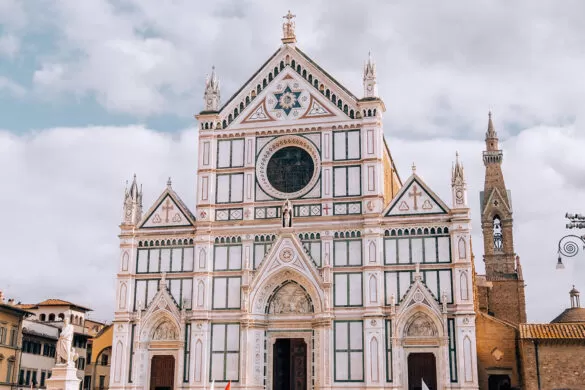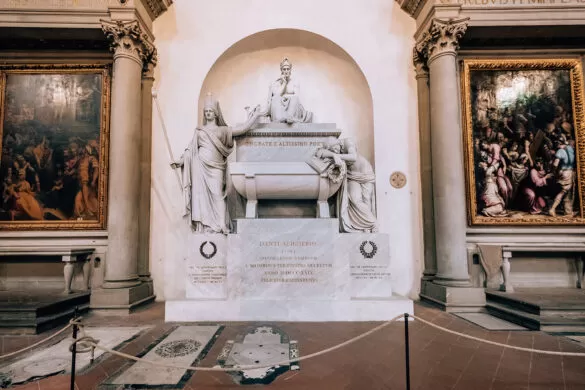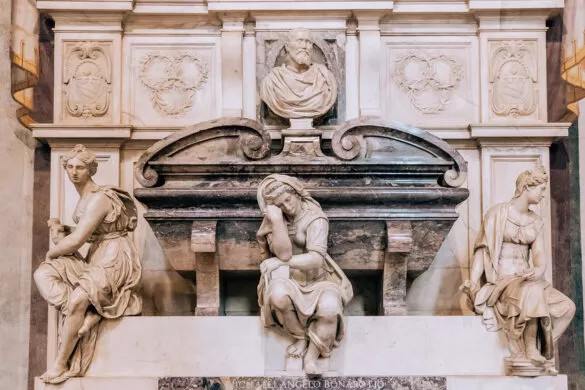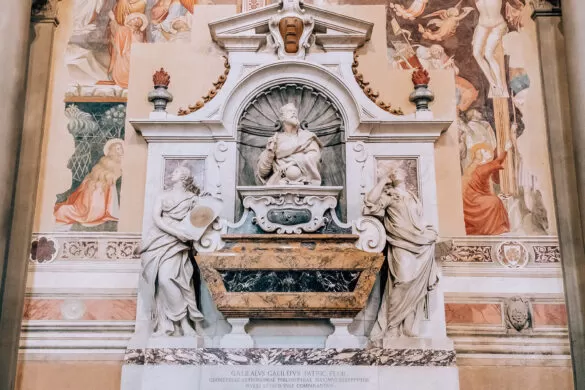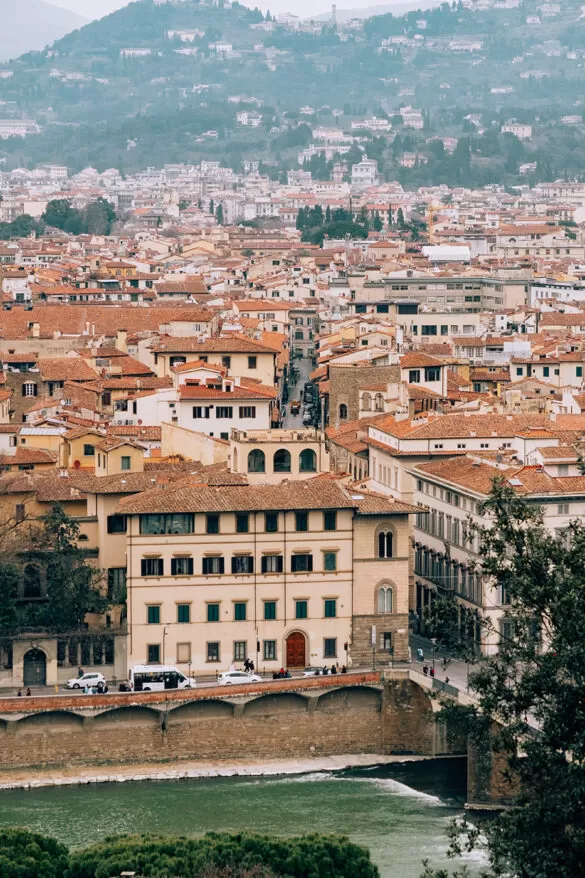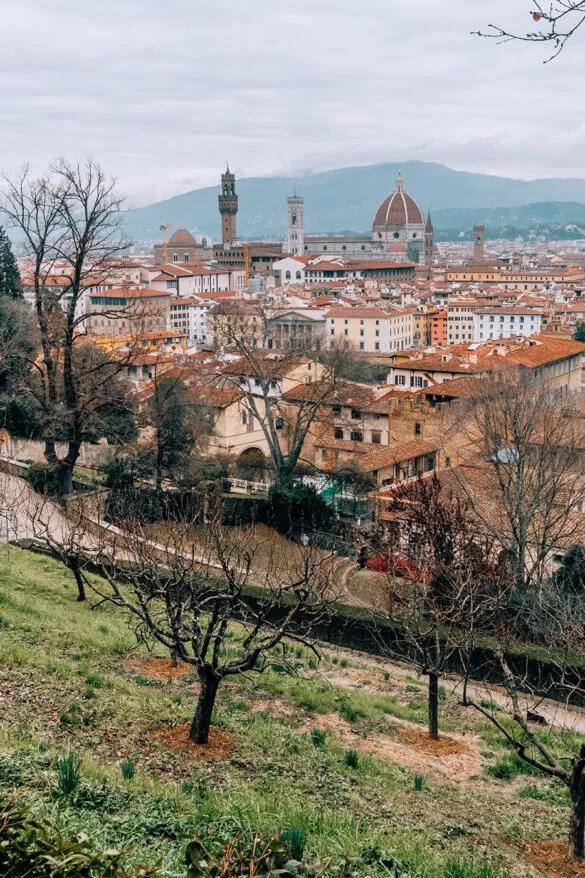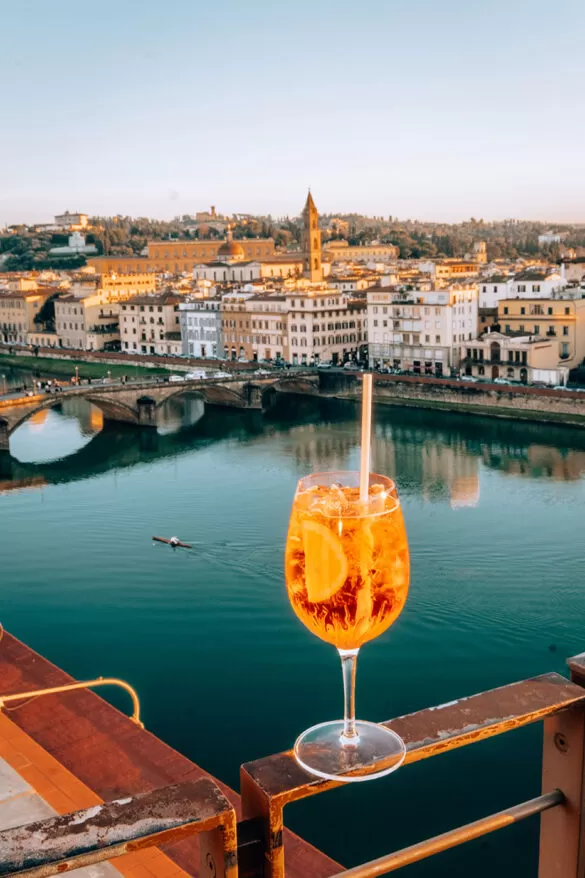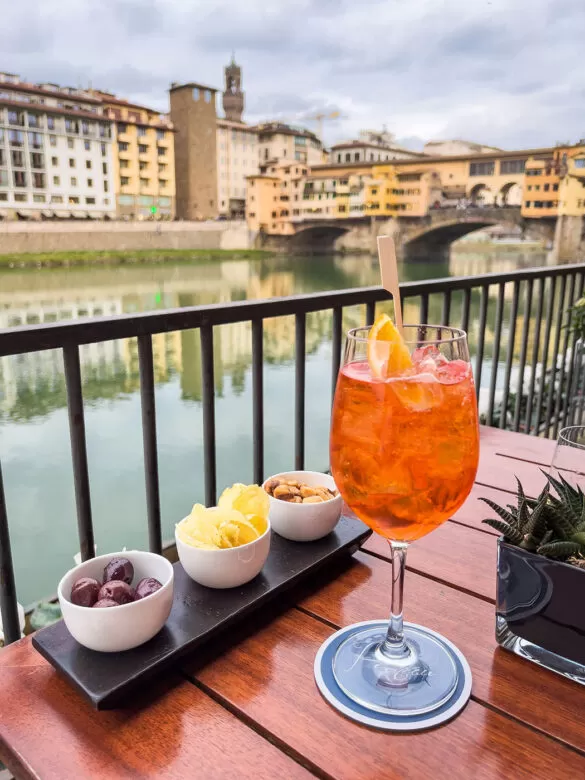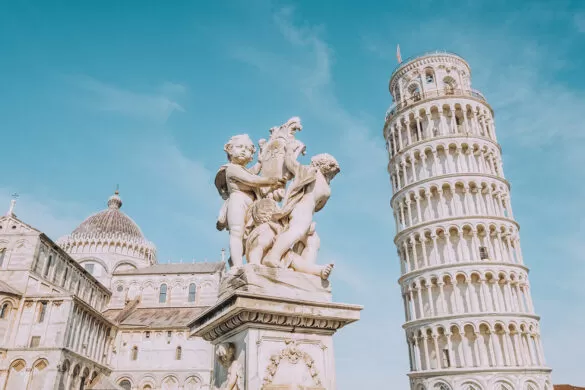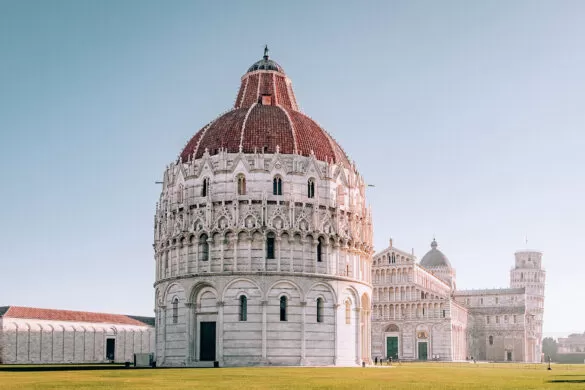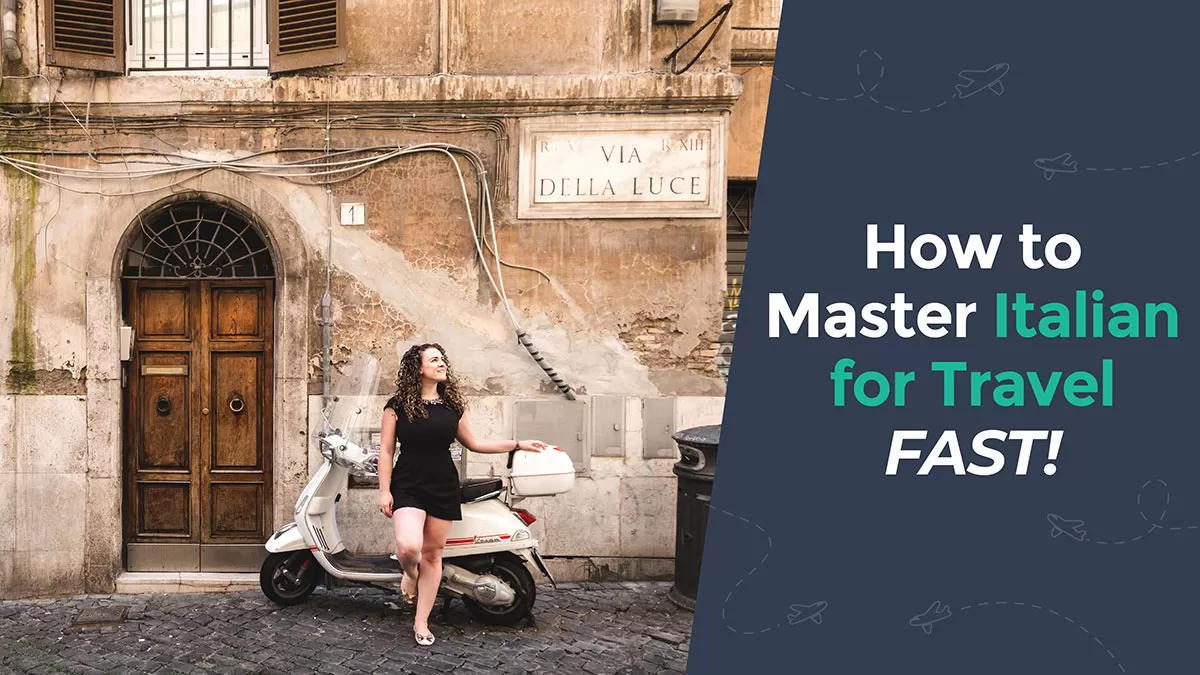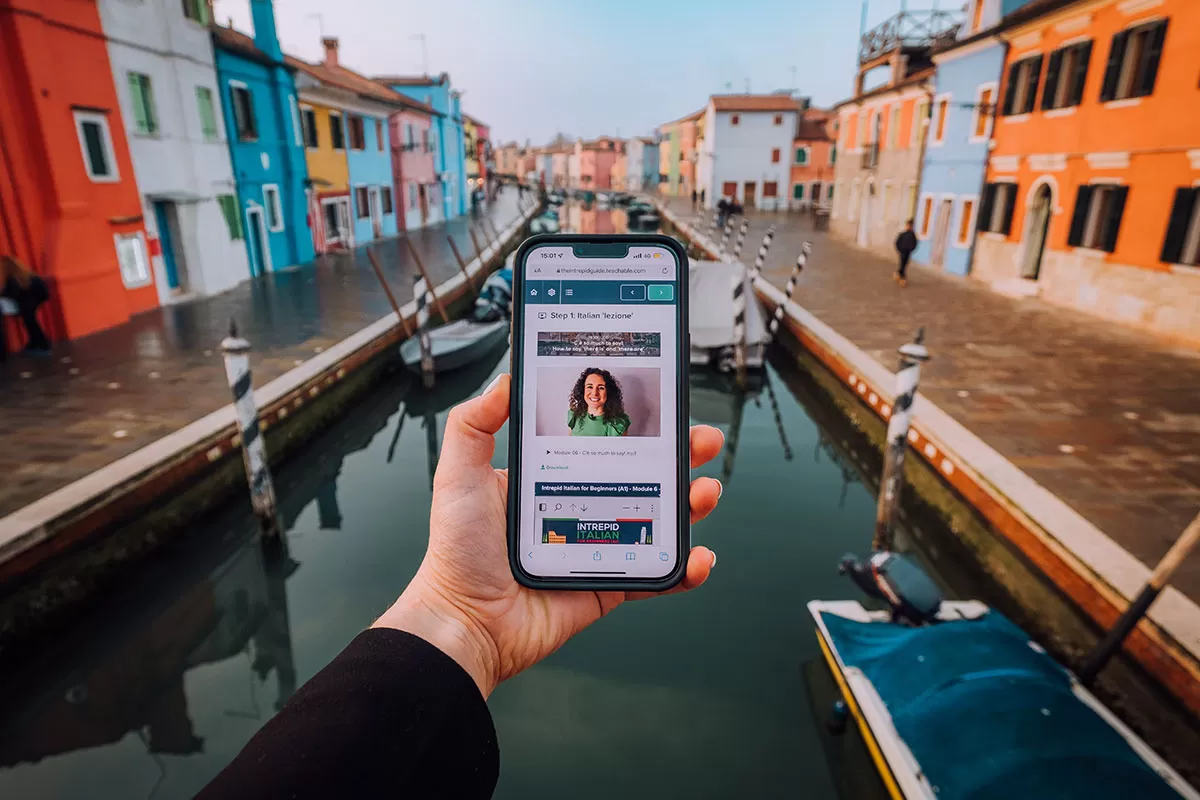Florence not only offers timeless charm, but it’s also the birthplace of gelato and the popular aperitivo Negroni cocktail. The city has undergone a fascinating journey from its Etruscan roots to its flourishing days under Medici rule which left an incredible amount of historical and artistic treasures. It’s no surprise that Florence is such an important destination in Italy.
As the cradle of the Renaissance, the Tuscan capital has profoundly impacted the evolution of architecture, art and culture in Italy and Europe. And such immense heritage means tonnes of great things to add to your Florence bucket list.
When planning your trip, choosing which sights and activities to prioritize may be challenging amid tonnes of iconic sights, hidden gems, and unusual things to do in Florence. To help you plan your next adventure, here’s my guide to the best things to do in Florence, including several top-rated guided tours I’ve cherry-picked that will enhance your visit.
Don’t miss my top Florence tips that will help you avoid common pitfalls and before you book your accommodation, make sure you read my guide to the best neighbourhoods and where to stay in Florence.
Table of contents
Ready to take notes? To put all these locations in context, I’ve included a short history of some of the most important things to know about Florence. Use the links below to jump to the section that interests you.
- A short history of Florence
- Dante Alighieri, Italy’s national hero
- Il giglio fiorentino: The Symbol of Florence
- 33 Best things to do in Florence
Don’t miss my guide to the TOP Things to do in Florence
A short history of Florence
Florence is widely recognized for its contributions during the Renaissance, but that was just one (incredible) chapter in the city’s long and storied past. Established in 59 BC by Julius Caesar, Florence began as a military camp before evolving into a provincial capital of the Roman Empire. The city’s location in the heart of Italy made it a great stopping point between Rome and the north, and the Arno river enabled booming trade, hence the initial name Florentia (literally, “flourishing”).
Then came Charlemagne, who conquered much of Italy by the late 8th century and established a feudal system with imperial noblemen controlling Florence from Lucca. During this time, Florence experienced steady growth and by 1125, it evolved into a thriving independent comune (city-state) ruled by its mercantile and artisan elite.
Florence’s prosperity and impact continued to rise as it became a major hub for textile production and banking. In 1252, the city even established its own gold currency, the florin, which along with the Venetian ducat became one of the main trade currencies throughout Western Europe.
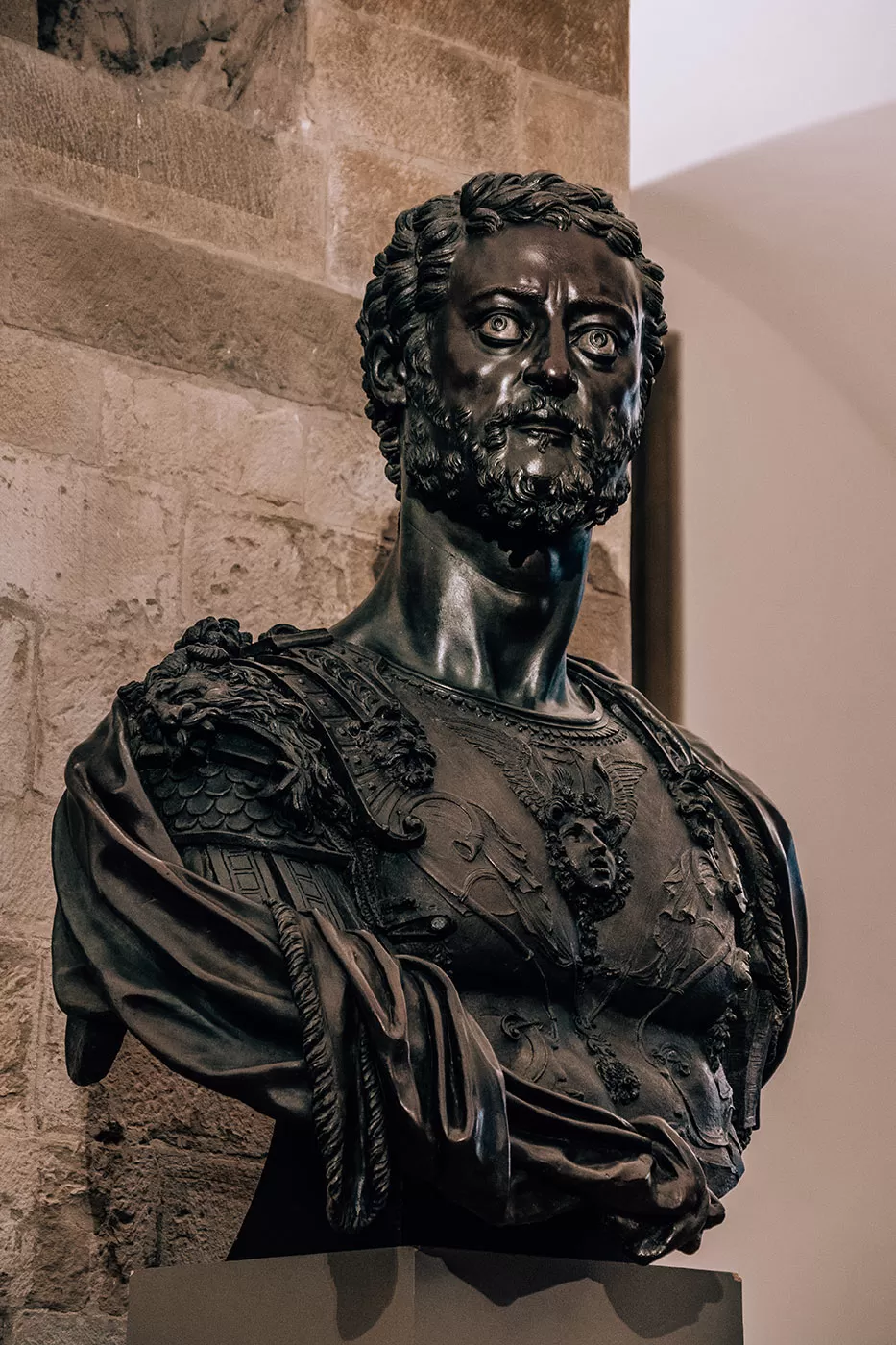
Cosimo I de’ Medici (Bargello Museum)
Towards the late 1300s, the Medici family started taking over the world. They were not of noble birth nor descendants of a royal line, but a group of savvy bankers with a vast network of connections. Under the leadership of Cosimo de’ Medici, the family rose to become the most influential in Florence. Over the next 3 centuries, the Medici ruled over the city, on and off, establishing themselves as a symbol of wealth and power.
The Medici were also big arts supporters, especially Lorenzo The Magnificent, Cosimo’s grandchild. They nurtured the growth of artists who created iconic works that still captivate and amaze us today. Leonardo da Vinci, Michelangelo, Botticelli, Raphael, Donatello, and many others all worked for the Medici, marking a new artistic era known as the Renaissance, representing a turning point in art history.
A sovereign title was granted to the Medici in 1570, but they lost power over time. The line came to an end in 1743 with the death of Anna Maria Luisa, the last member of the family. Florence was then ruled by the Duke of Lorraine, who was married to Maria Theresa of Austria and became Emperor Francis I of Austria.
In 1859, the Lorraines left the city and Florence was annexed to the Kingdom of Sardinia. After the unification of Italy in 1861, it replaced Turin as the capital of Italy in 1865. To prepare for the royals’ arrival at Pitti Palace, the city was modernized, but Florence’s time as the capital was short-lived, as Rome took over in 1871.
Although Florence was no longer the capital of Italy, its rich culture had a significant impact on the growth of the country. Despite the Nazi bombings during WWII, the 1966 flood, and a bomb explosion near the Uffizi in 1993, the historic center of Florence has managed to maintain its beauty and become a UNESCO-listed world treasure.
Dante Alighieri, Italy’s national hero
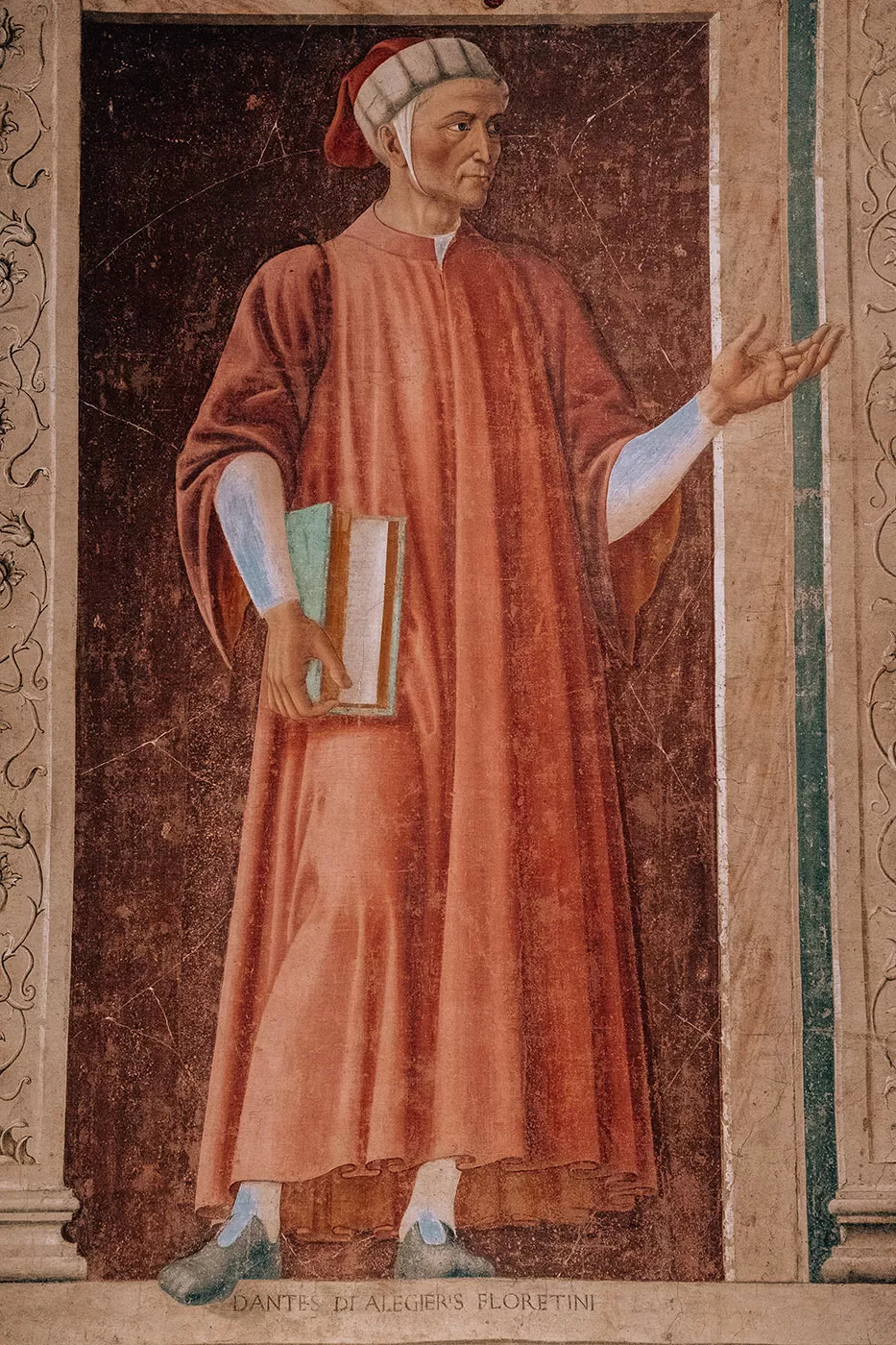 Can a poet who lived 700 years ago still be relevant in the modern world? The answer is yes if that poet fostered cultural and linguistic unity in a country that had separate city-states with their own languages.
Can a poet who lived 700 years ago still be relevant in the modern world? The answer is yes if that poet fostered cultural and linguistic unity in a country that had separate city-states with their own languages.
We’re talking about Dante, the man who transformed the Tuscan dialect into Italy’s national language. Born in 1265 in Florence, Dante was raised in a time of tumultuous conflict between the Guelphs (who supported the Pope) and the Ghibellines (who supported the Holy Roman Emperor). Growing up, he sided with the Guelphs like his father but eventually found himself on the losing side when his faction, the White Guelphs who aimed to reduce the Pope’s influence, was defeated. Thus, he was exiled.
He then resided in different courts and eventually settled in Ravenna, where he died and was buried (the monument in Florence’s Santa Croce is just a memorial).
While in exile, he found the freedom to express his opinions on politics, morality, and language. He wrote the Convivio, a philosophical treatise, the De Vulgari Eloquentia, a literary-linguistic treatise, and the De Monarchia, a political essay. He also produced his masterpiece, the Divine Comedy, which he wrote in the Tuscan dialect instead of Latin, making it a pioneering work in the “vulgar” language. In other words, the language of the people.
The linguist Tullio de Mauro showed that of the 2,000 words that make up basic vocabulary in Italian, 1,600 were already used by Dante. Yet, there were poets who wrote in Italian even before Dante, including Giacomo da Lentini, who invented the sonnet and Guido Faba a very sophisticated prose writer.
Many accused Dante of betraying Latin, but Giovanni Boccaccio defended him stating that Dante wrote: ‘for the sake of more common utility to his fellow citizens and other Italians. Dante knew that if he wrote Latin verse like other poets, he would have only been useful to the literate, but if he wrote in the vulgar tongue he would accomplish something that had never been done before, something that would prevent his work from being misunderstood by the illiterate. Still today, La Divina Commedia continues to resonate with people.
This choice of language may have initially challenged its readers. However, the book’s enormous popularity prompted the Italian literate community to learn or familiarize themselves with the dialect to fully comprehend Dante’s words. In time, the Tuscan dialect became the language of everyday life in Italy. Dante Alighieri made history as the father of the modern Italian language, somehow pointing the way to the political unity that would come centuries later.
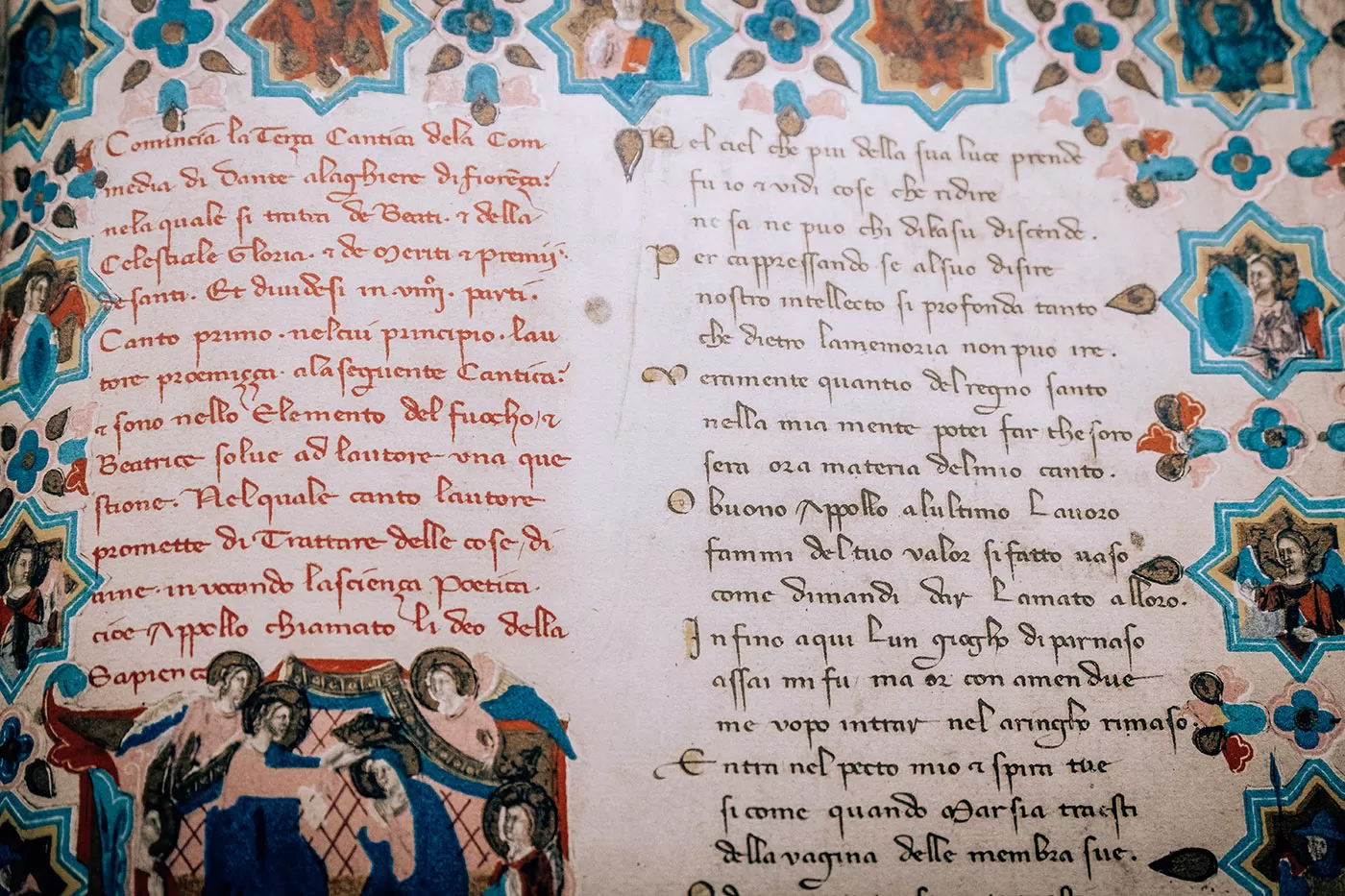
Dante House Museum
Visiting Dante’s House in Florence offers a fantastic opportunity to gain deeper insight into this remarkable artist and interesting tidbits about his life, such as his affection for Beatrice. Despite only meeting her twice, Dante was so deeply fascinated that she became the love of his life – though they only met twice and tied the knot with different partners.
Il giglio fiorentino: The Symbol of Florence
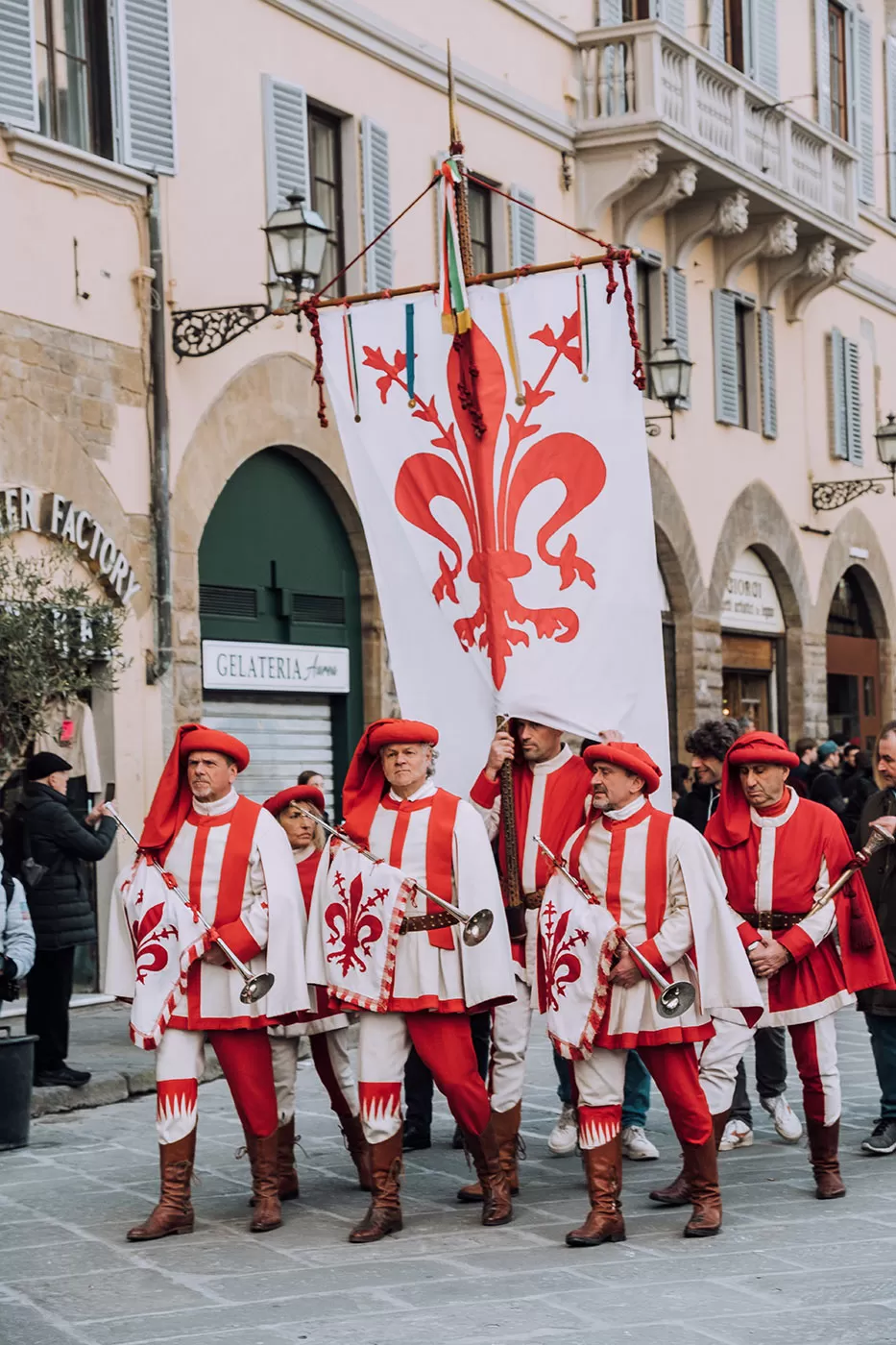
Lily of Florence (Italian: Il Giglio Fiorentino)
The Lily of Florence (Italian: Il Giglio Fiorentino), was the flag of the Republic of Florence between 1250 and 1532. In its original form, the city’s coat of arms was a stylised white lily (Italian: giglio), on a red field. Even during the First Crusade (1095), the Florentines carried their Giglio (lily, fleur-de-lis) as a sign of the city of the flower into battle, but what is called the Lily of Florence is not a lily, it is a spontaneous iris (Italian: giaggiolo, già) that is found in the Arno valley and in the hills around in Florence.
An important side note here is there were two factions, the Guelphs and Ghibellines, who supported the Pope and the Holy Roman Emperor, respectively. These factions existed in the Italian city-states of Central Italy and Northern Italy.
By the 11th century the Florentine Ghibellines faction had adopted a coat of arms bearing a white giglio on a field of red, resulting in the symbol becoming associated with the city. However, in 1250 the Ghibellines were defeated and exiled by their rivals, the Guelphs.
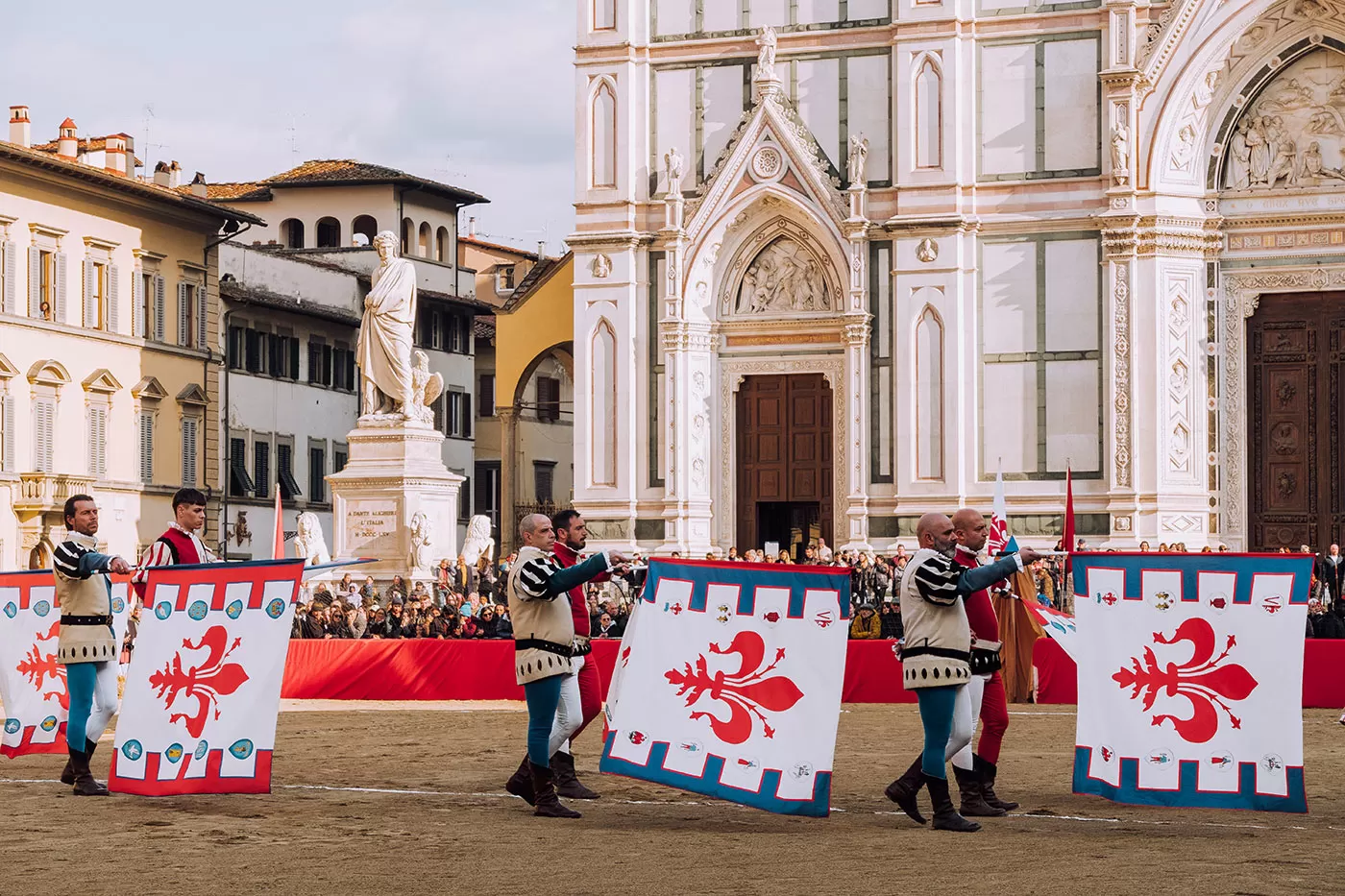 The continued use of the white giglio on a red field by the exiled Ghibellines led to the Guelphs inverting the colours of the city, creating a flag bearing a red giglio on a white background and is still used today. The symbol was then used extensively in the city, being adorned on multiple public buildings whilst the flag was flown atop many others. The coat of arms of Florence has remained constant passing down through the centuries, the history, and successive city governments.
The continued use of the white giglio on a red field by the exiled Ghibellines led to the Guelphs inverting the colours of the city, creating a flag bearing a red giglio on a white background and is still used today. The symbol was then used extensively in the city, being adorned on multiple public buildings whilst the flag was flown atop many others. The coat of arms of Florence has remained constant passing down through the centuries, the history, and successive city governments.
It seems that wherever you look there is il Giglio Fiorentino. The best way to see the beautiful Florentine iris is to visit the Iris garden in May, located near Piazzale Michelangelo.
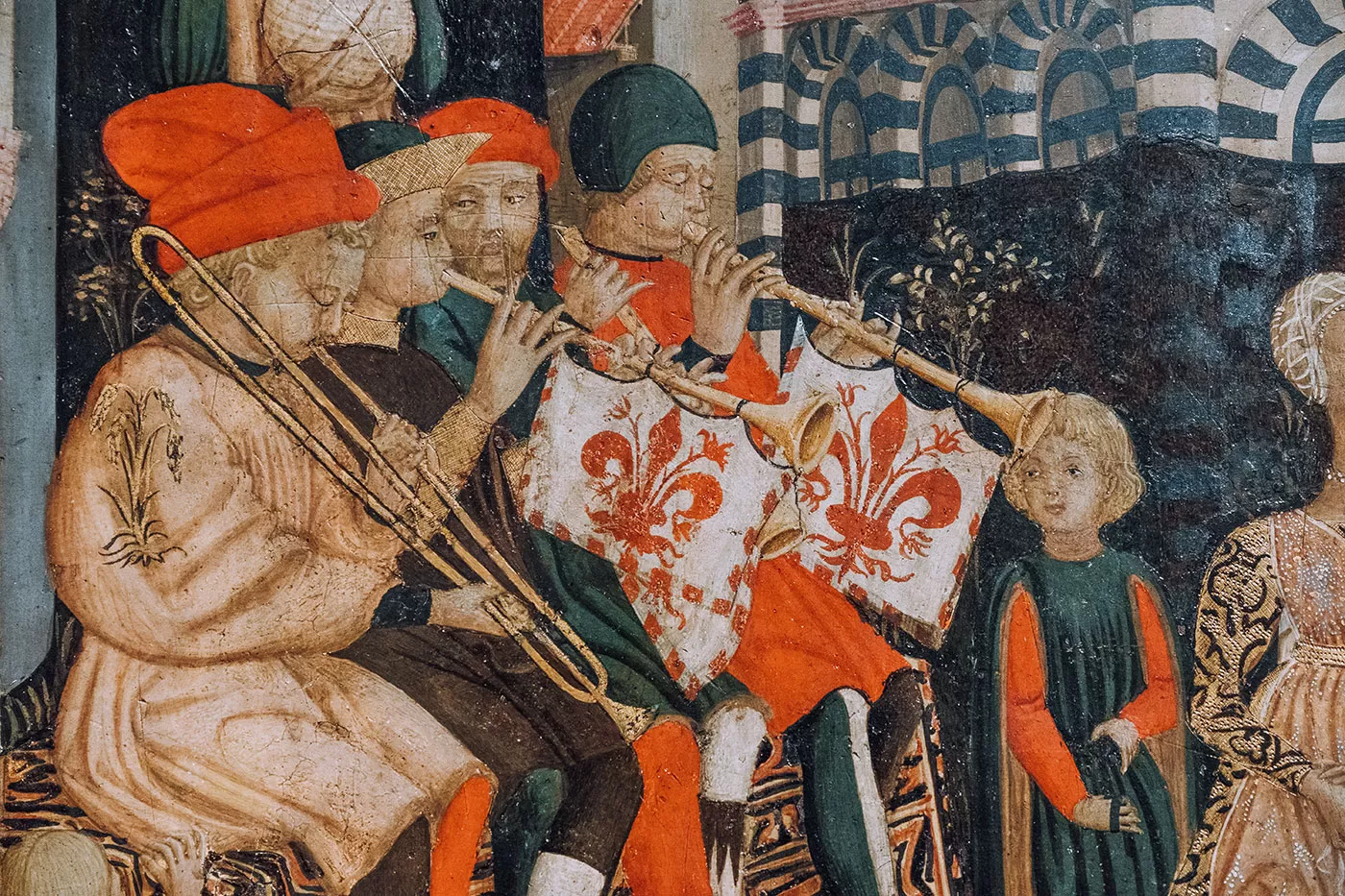
Cassone Adimari (Galleria dell’Accademia)
33 Best things to do in Florence
Listed below are the most unmissable and best things to do in Florence. Chances are, you won’t be able to see them all on your first trip. This is a good thing, so you’ll have an excuse to return! After all, Florence is the type of place you can visit multiple times and discover something new.
1. See the Cathedral of Santa Maria del Fiore and Brunelleschi’s Dome
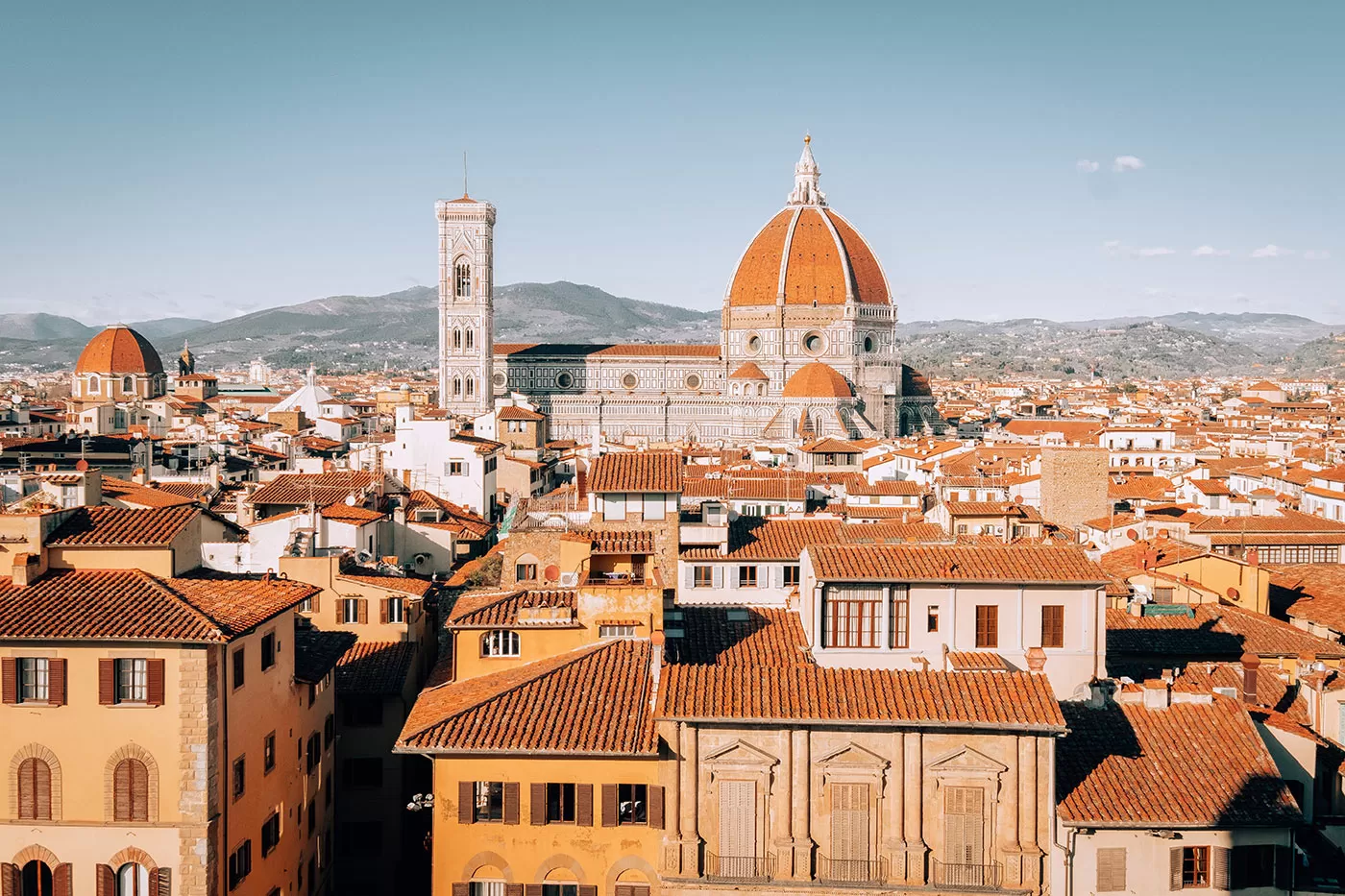
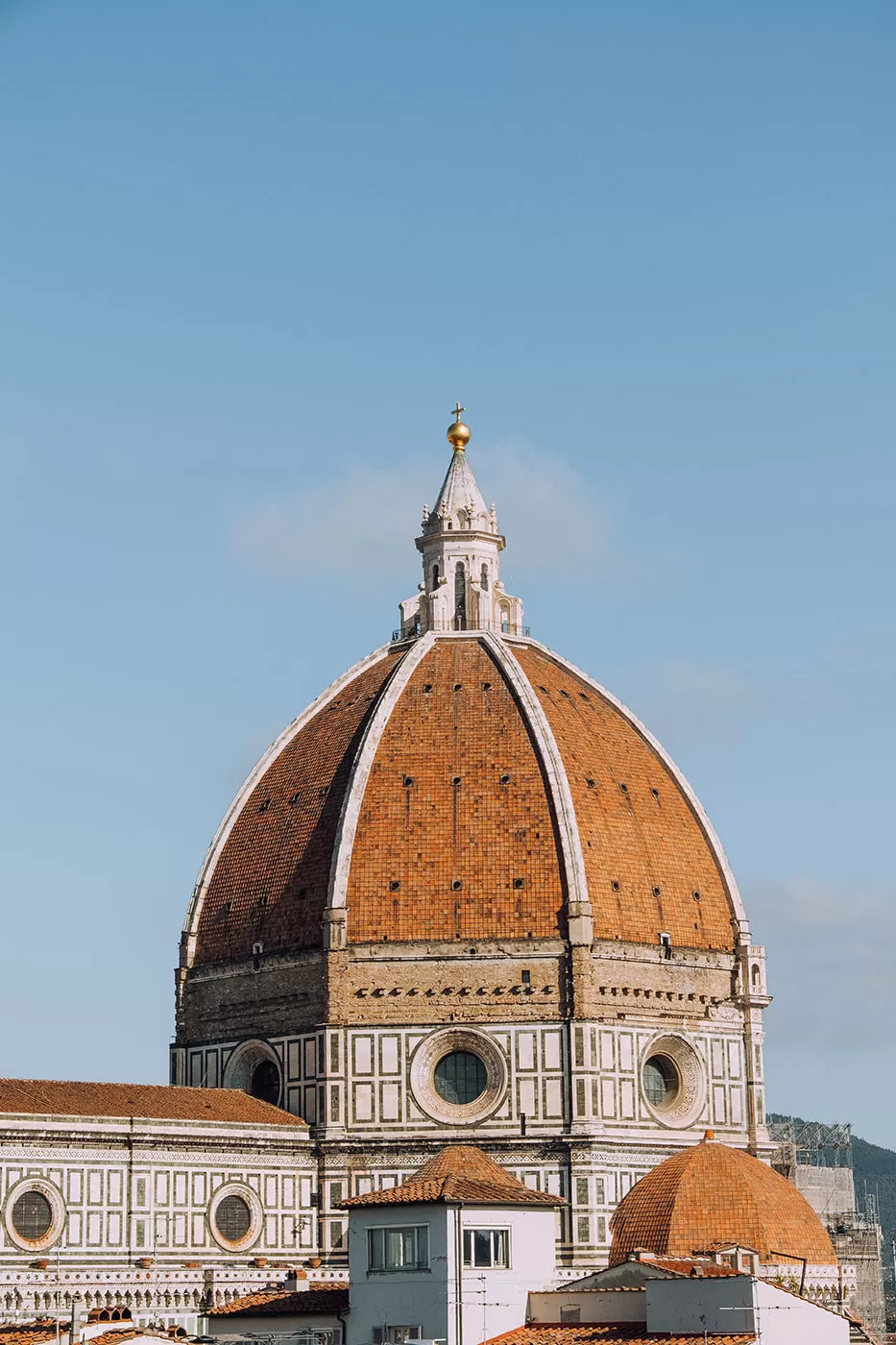 Piazza del Duomo with the imposing Cathedral of Santa Maria del Fiore is often a natural starting point for any trip to Florence. This is the spiritual heart of the city, a place of sheer beauty that’s considered a masterpiece of Gothic art. As strange as it may be in a city known as the cradle of the Renaissance, the reason is quite simple: its construction started in the 1290s, a time when the predominant style was still Gothic. It took about 150 years to complete and it’s huge – almost as wide as an American football field!
Piazza del Duomo with the imposing Cathedral of Santa Maria del Fiore is often a natural starting point for any trip to Florence. This is the spiritual heart of the city, a place of sheer beauty that’s considered a masterpiece of Gothic art. As strange as it may be in a city known as the cradle of the Renaissance, the reason is quite simple: its construction started in the 1290s, a time when the predominant style was still Gothic. It took about 150 years to complete and it’s huge – almost as wide as an American football field!
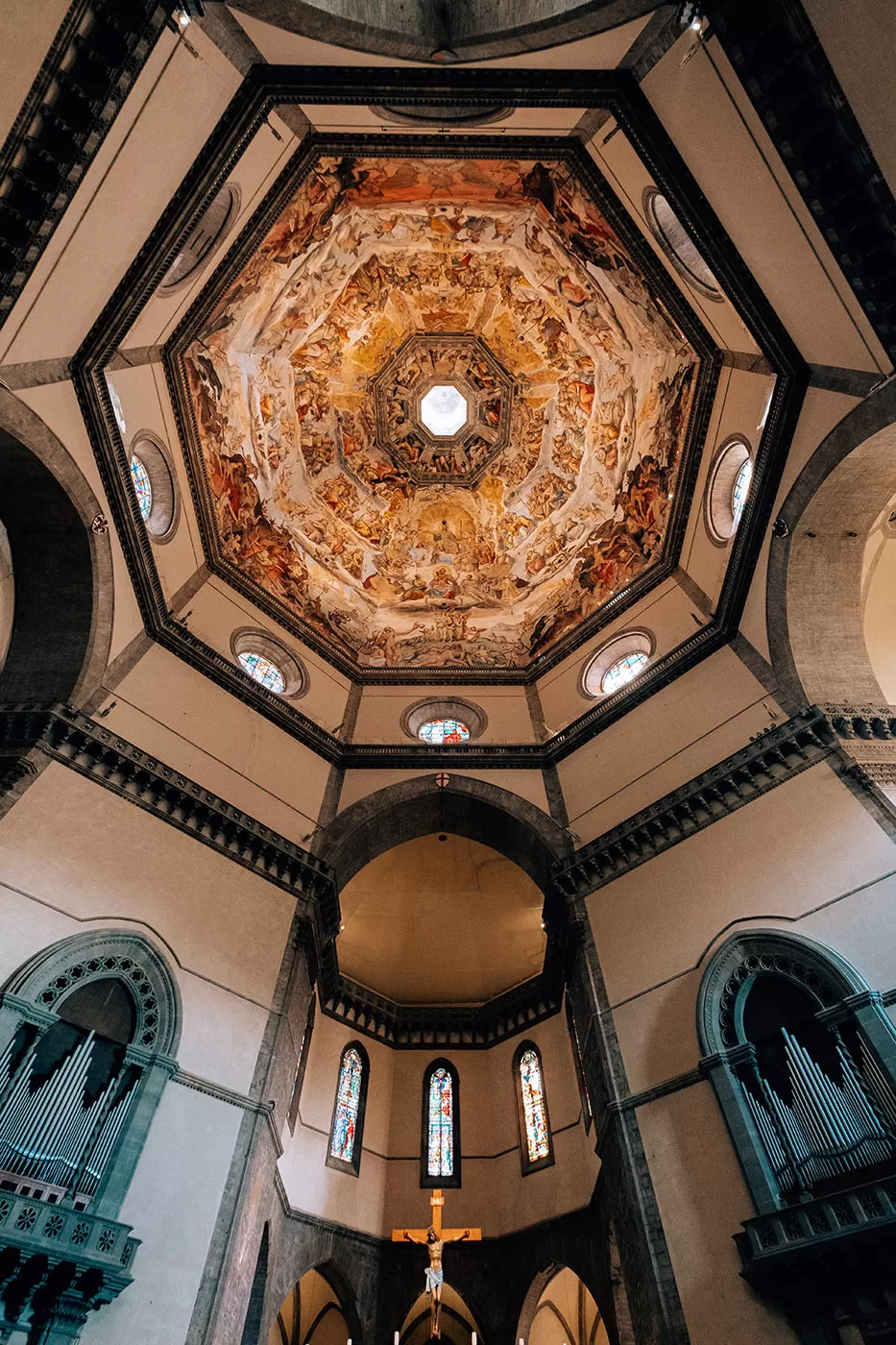
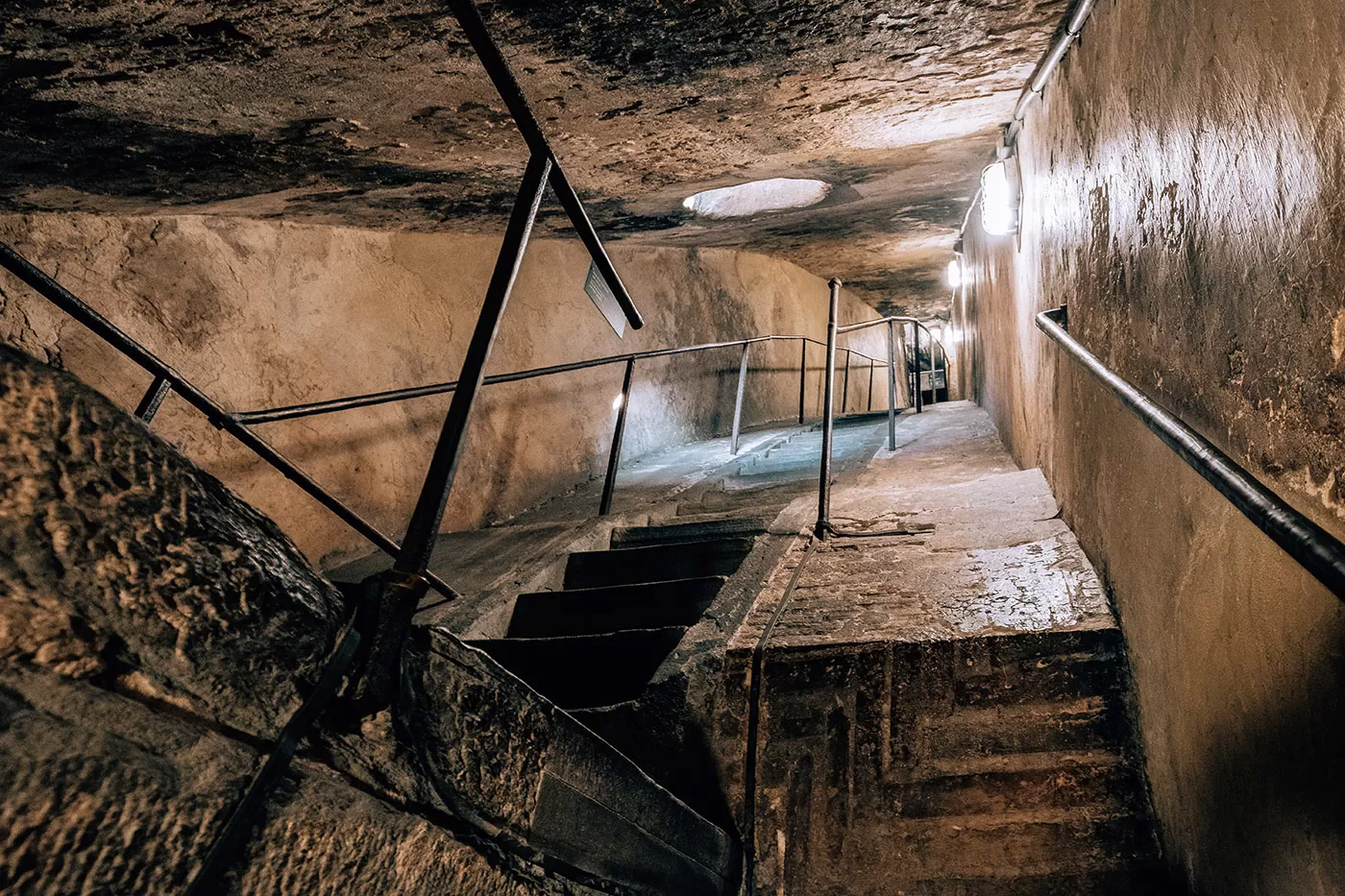
Staircase up to the Dome
The dome, instead, was the object of fierce competition between two stars of the time, Lorenzo Ghiberti and Filippo Brunelleschi. The latter got the job and made history by creating the largest masonry dome ever built. The facade is made up of green, red, and white marble, while the interior, though rather simple in comparison, preserves important works of art. You can also climb to the top of the dome, but prepare yourself for its 463 steps. The cathedral is part of a much larger complex that also includes the Baptistry, Giotto’s bell tower, and the Opera del Duomo museum that preserves precious artworks by Michelangelo, Donatello, Brunelleschi, Ghiberti and more.
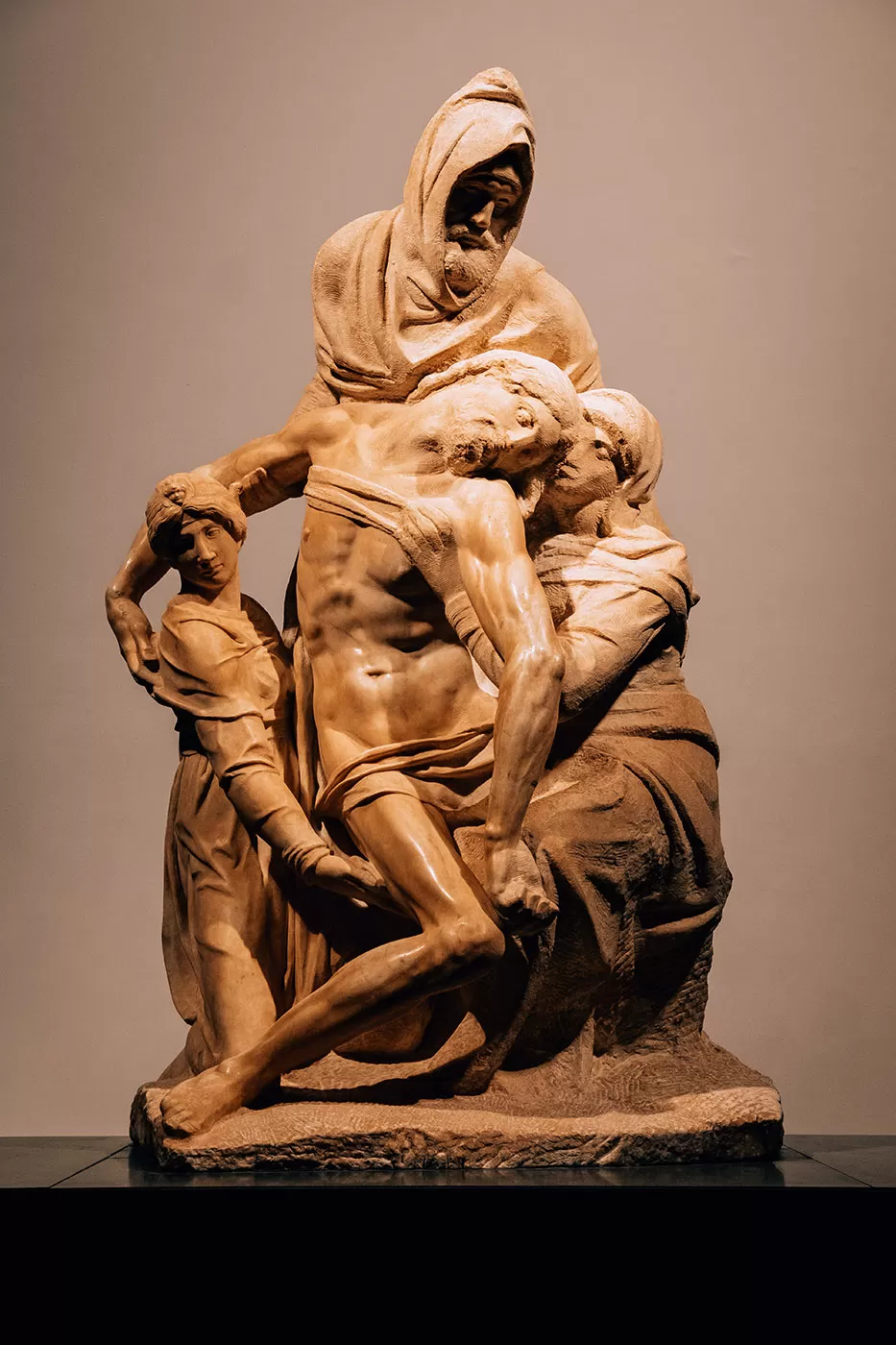
Pieta by Michelangelo (Museo dell’opera del Duomo)
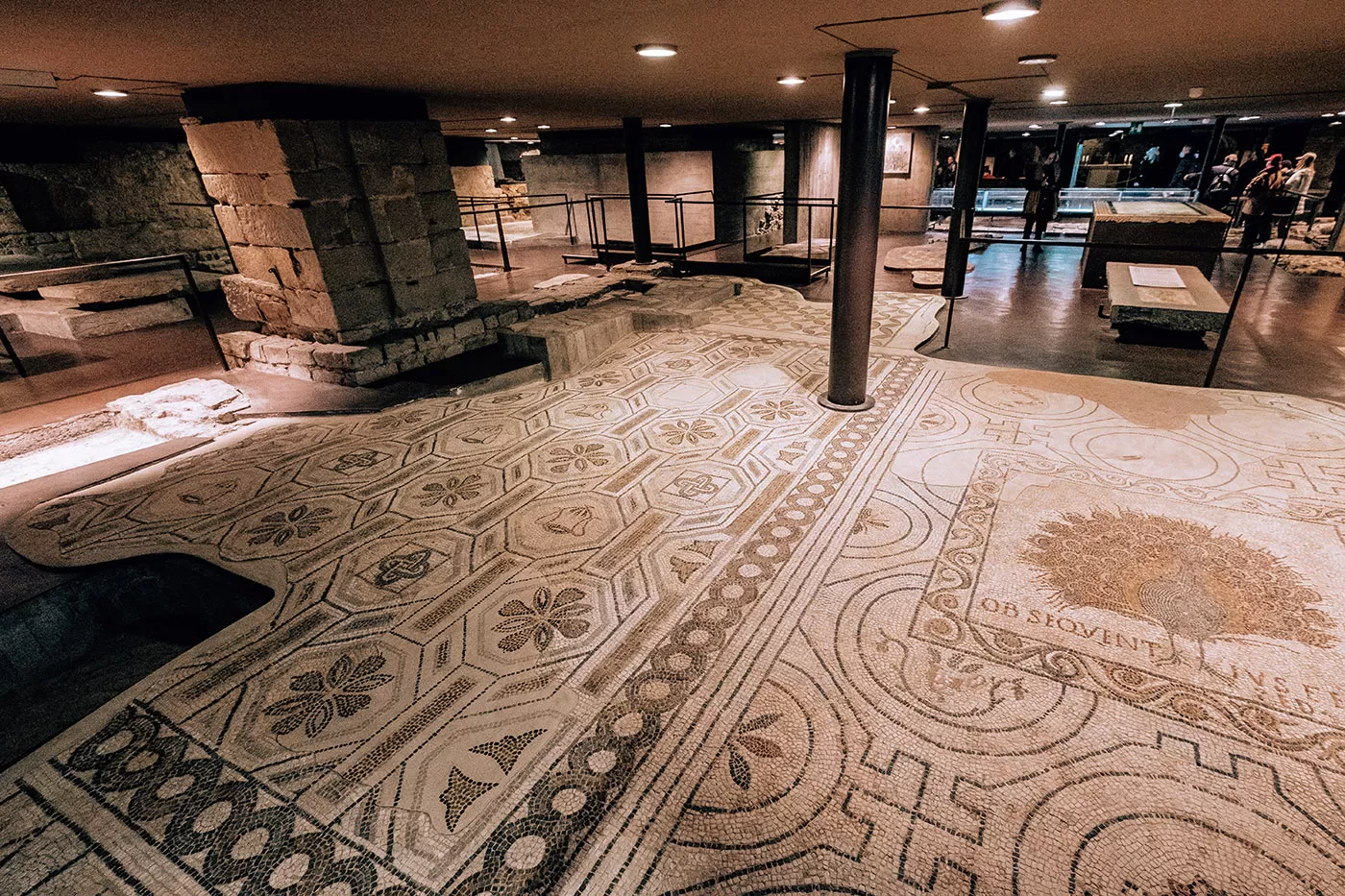
Mosaic floors at Santa Reparata Crypt
How to visit:
- Get your tickets here
- Guided tour: Skip-the-line with this tour of the Duomo and Dome access. For an expert led experience that includes the Baptistry, Dome, and Duomo Museum, join this tour.
- Bonus tip: What most people don’t know is that you can also visit the private terraces of the Duomo rooftop (before heading to the top of the dome), but only by joining a private skywalk guided tour here.
2. Take in the views from Giotto’s bell tower
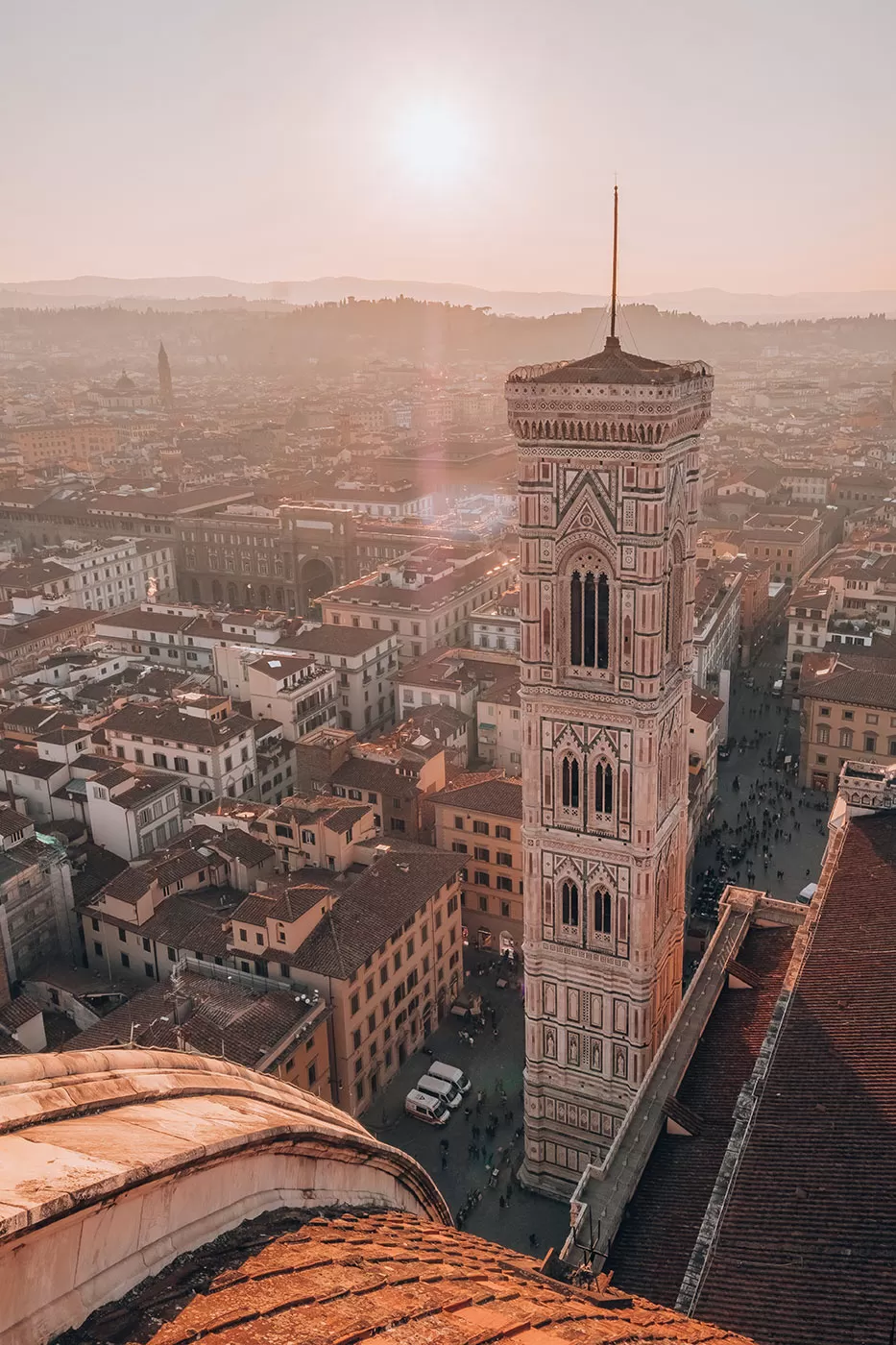
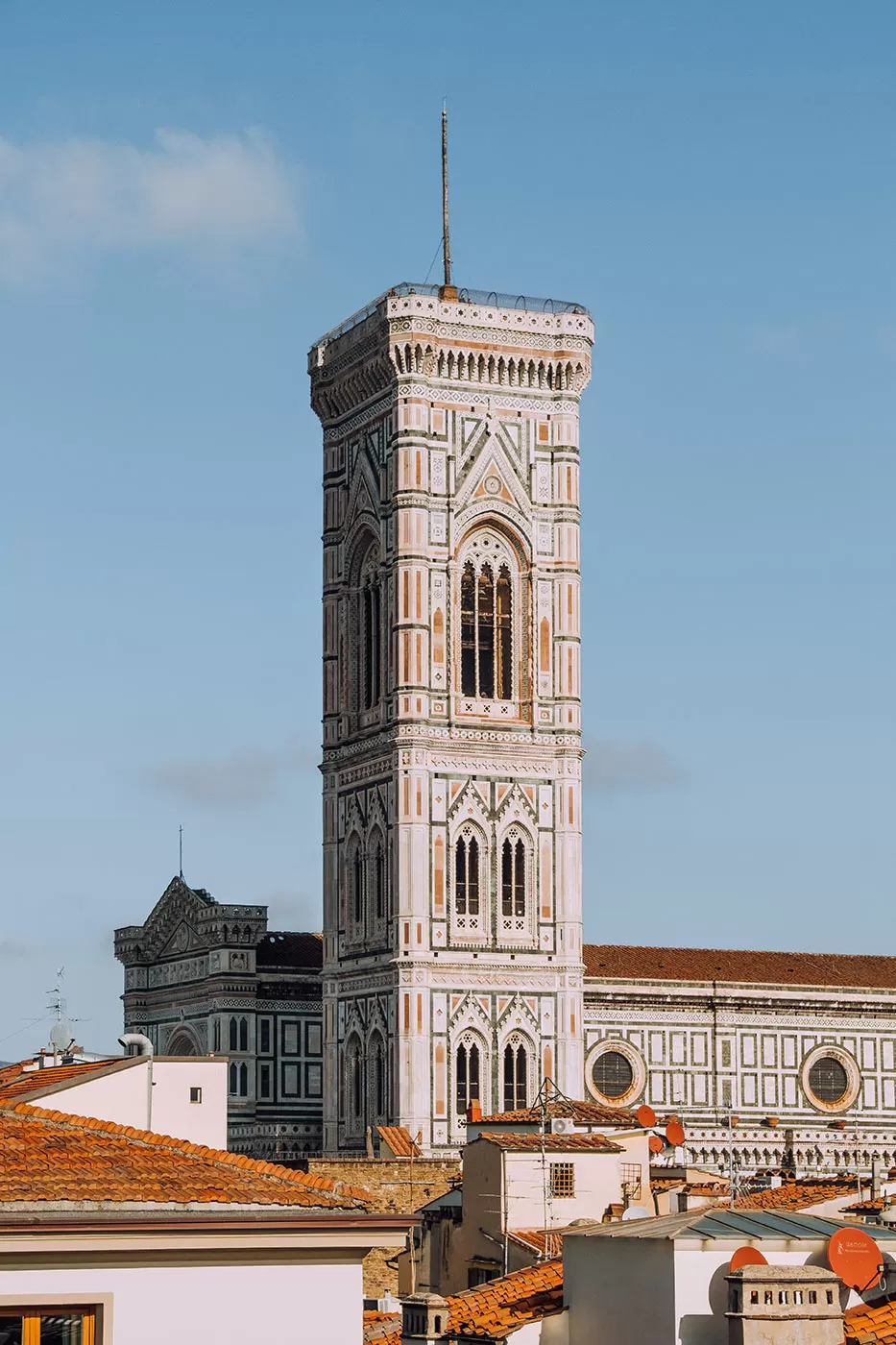 Standing 84.7 meters tall, the cathedral’s bell tower was designed by Giotto, who may be best known for his paintings but was actually an accomplished architect too. The project began in 1334 but Giotto died three years later and the completion of his work was taken on by Andrea Pisano and later Francesco Talenti, who added the stunning rooftop terrace that provides terrific views today. Outside the bell tower, you’ll see the same red, green, and white marble as the cathedral, along with sculptures that pay homage to the crafts and industries that helped the city thrive. It takes 414 steps to reach the rooftop, but you can take your time along the way. Obviously, people with vertigo or claustrophobia shouldn’t do it.
Standing 84.7 meters tall, the cathedral’s bell tower was designed by Giotto, who may be best known for his paintings but was actually an accomplished architect too. The project began in 1334 but Giotto died three years later and the completion of his work was taken on by Andrea Pisano and later Francesco Talenti, who added the stunning rooftop terrace that provides terrific views today. Outside the bell tower, you’ll see the same red, green, and white marble as the cathedral, along with sculptures that pay homage to the crafts and industries that helped the city thrive. It takes 414 steps to reach the rooftop, but you can take your time along the way. Obviously, people with vertigo or claustrophobia shouldn’t do it.
How to visit:
- Get your tickets here
- Guided tour: On this tour, you’ll go up Giotto’s bell tower and see the Opera del Duomo museum for a deep dive into the cathedral’s history
3. Visit St John’s Baptistery
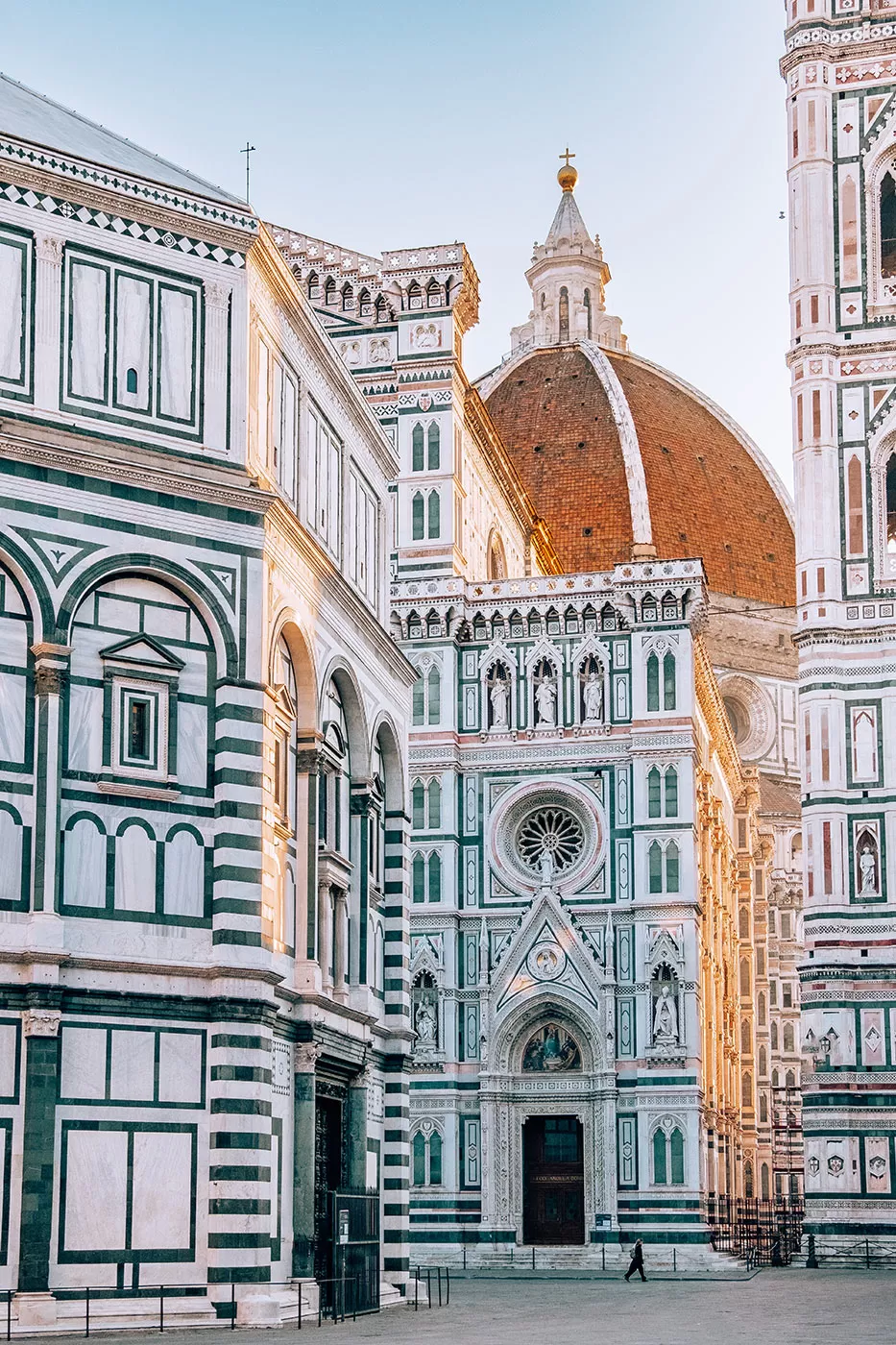
Right in front of the Cathedral, St. John’s Baptistry is the most ancient building in Piazza Duomo and one of the oldest churches in town. It’s named after the city’s patron saint and was used to baptize Christians, a rite of acceptance into both the Christian faith and Florentine society. The baptistry boasts a fascinating octagonal structure covered in white Carrara and green Prato marble. The eastern gilded bronze door, dubbed the “Gates of Paradise” by Michelangelo, is the building’s true jewel. It was designed by sculptor Lorenzo Ghiberti and features intricate sculptural panels depicting scenes from the Old Testament – though what we see today is actually a replica since the original sits in the Museum of the Duomo located behind the cathedral. Inside the baptistry are beautiful mosaics with scenes from the Last Judgement and St. John’s life.
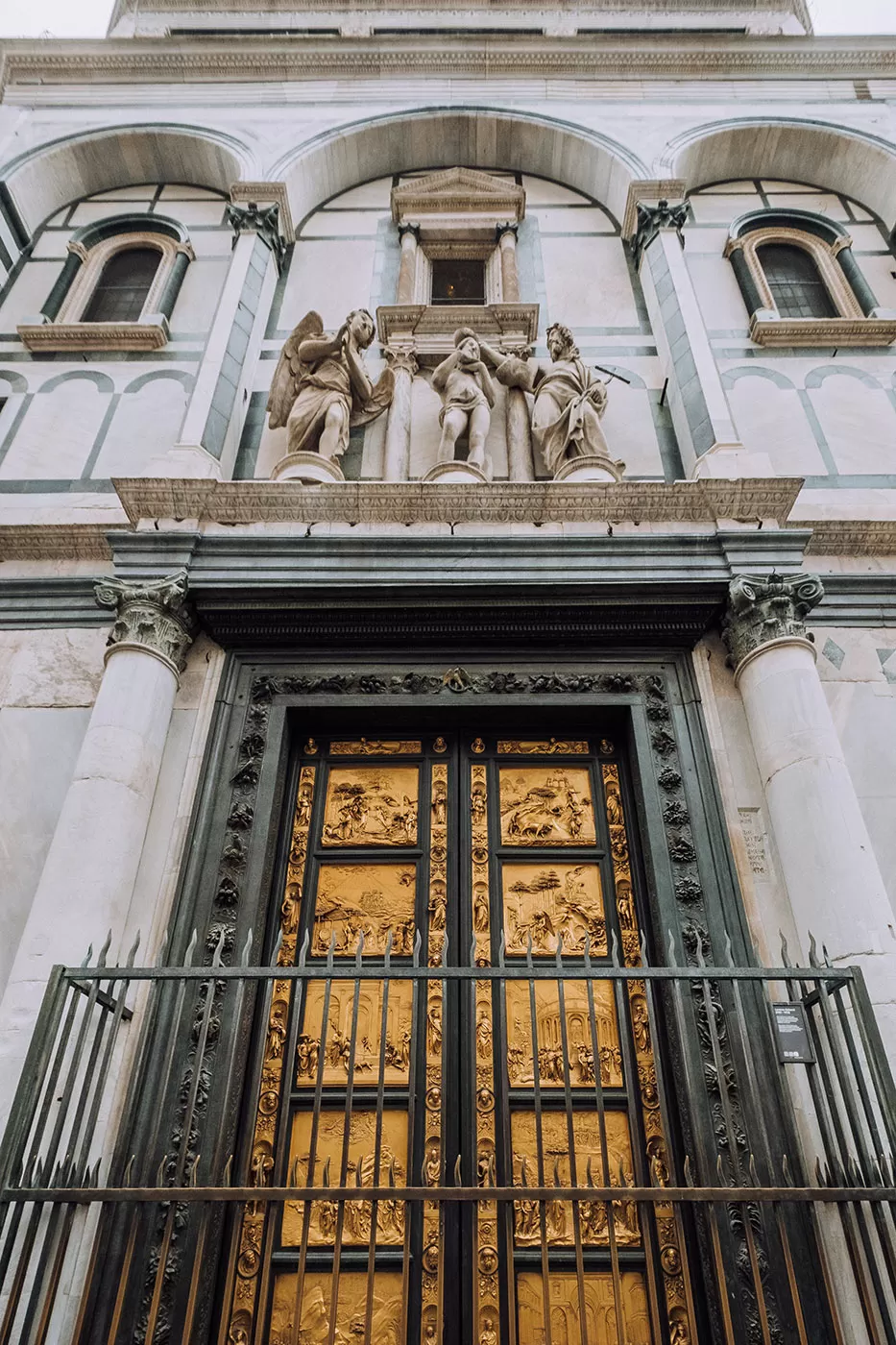
How to visit:
- Get your tickets here
- Guided tour ideas: For an in-depth exploration, this tour includes the Baptistery, the Cathedral, and the Opera del Duomo Museum. This self-guided audio tour gives you skip-the-line access to both the Baptistry and Opera Duomo Museum, plus an audio tour you can listen to on your phone.
4. Soak up the beauty of Piazza della Signoria
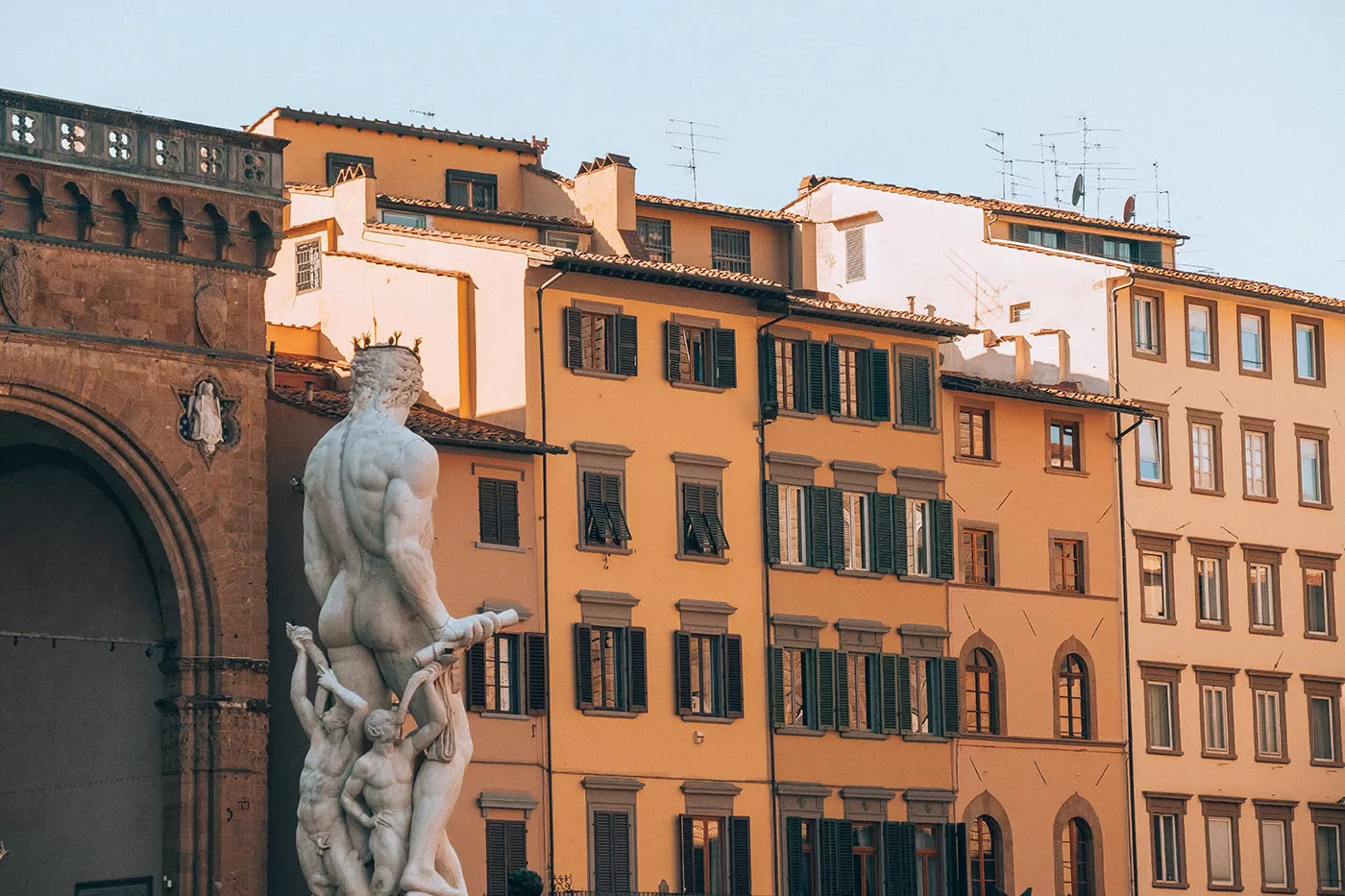 Within 10 minutes of Piazza Duomo, Piazza della Signoria is a magnificent square that’s played a big part in the city’s history and culture. It’s been the city’s hub of political and social life for many centuries, witnessing important events such as the Medici’s triumphant return in 1530 and the notorious Bonfire of the Vanities orchestrated by Savonarola, who was later burned for heresy in the same square in 1498. An impressive array of sculptures with political connotations adorn this piazza, which is visually dominated by the grand and austere facade of Palazzo Vecchio. For example, Giambologna’s equestrian statue of Duke Cosimo I de’ Medici shows the man who brought Tuscany under Medici control, while Ammannati’s
Within 10 minutes of Piazza Duomo, Piazza della Signoria is a magnificent square that’s played a big part in the city’s history and culture. It’s been the city’s hub of political and social life for many centuries, witnessing important events such as the Medici’s triumphant return in 1530 and the notorious Bonfire of the Vanities orchestrated by Savonarola, who was later burned for heresy in the same square in 1498. An impressive array of sculptures with political connotations adorn this piazza, which is visually dominated by the grand and austere facade of Palazzo Vecchio. For example, Giambologna’s equestrian statue of Duke Cosimo I de’ Medici shows the man who brought Tuscany under Medici control, while Ammannati’s 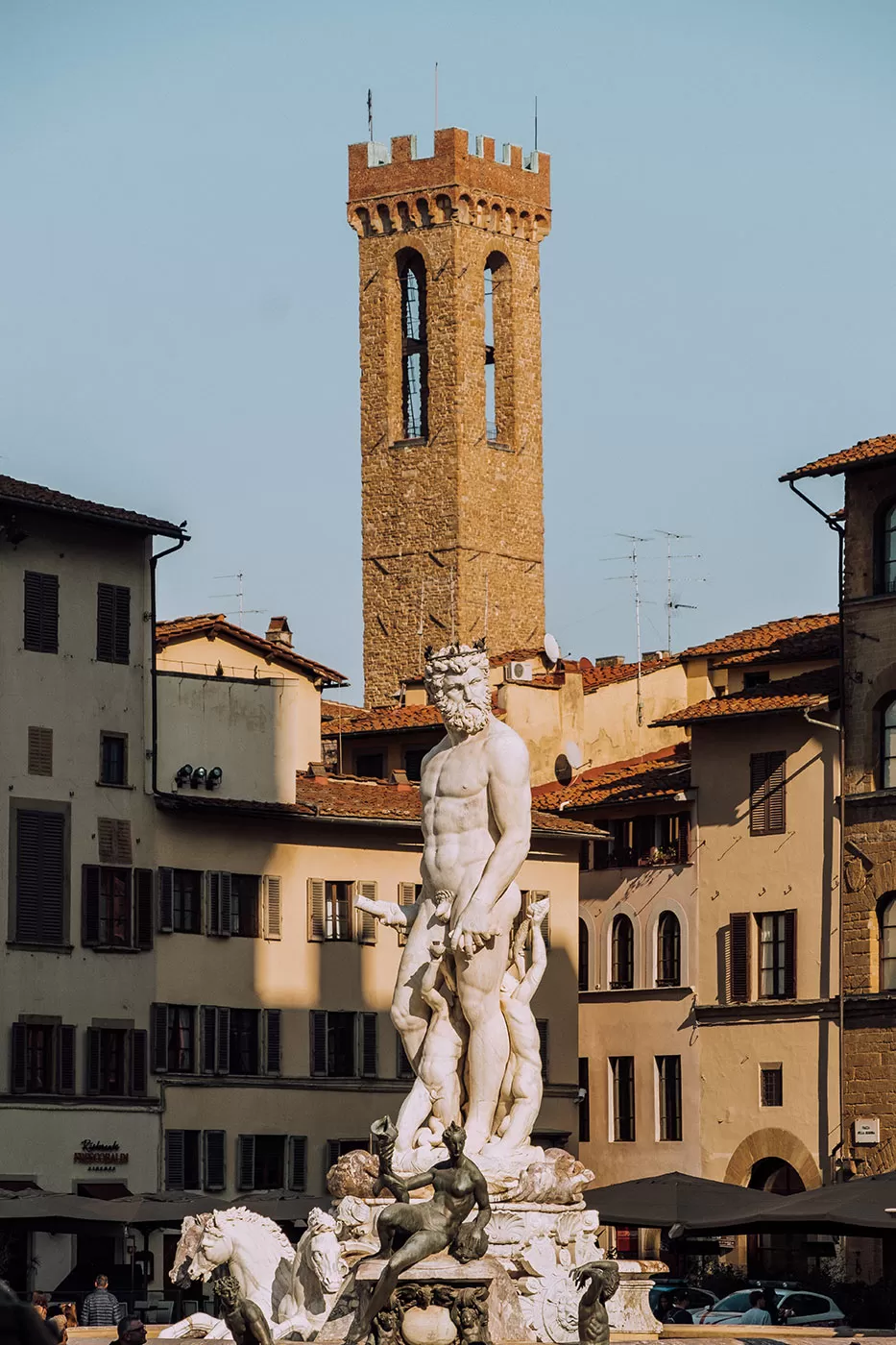 tune fountain celebrates the Duchy’s maritime achievements. You’ll find a lot to explore here, but before diving into each piece, take a moment to soak in the atmosphere and appreciate the grandeur of the square.
tune fountain celebrates the Duchy’s maritime achievements. You’ll find a lot to explore here, but before diving into each piece, take a moment to soak in the atmosphere and appreciate the grandeur of the square.
Piazza della Signoria, is the name of the nucleus of the government in the 1400s and Palazzo Vecchio is the government building. Its construction started in 1299, the peak of the economic boom in the 1200s, and was the first real government building in Florence. Between 1250 and 1532, the Florentine government called the Signoria of Florence was quite big with lots of counsels. Its nine members, the Priori (Priors), were chosen from the ranks of the guilds of the city and were the nucleus of the government.
While they were in charge, they lived in the Palazzo and had no contact with the outside world. This was to prevent corruption. What’s interesting is that they were only in charge for 2 months at a time and then a new election took place. This was to avoid any corruption.
How to visit:
- Free entrance
- Guided tour ideas: This private tour of Piazza della Signoria and Palazzo Vecchio is perfect for those who prefer a personalized experience. If you’re traveling with children, this 1-hour tour takes them on a journey through the piazza using fascinating mythological tales
5. Visit Palazzo Vecchio and Arnolfo Tower
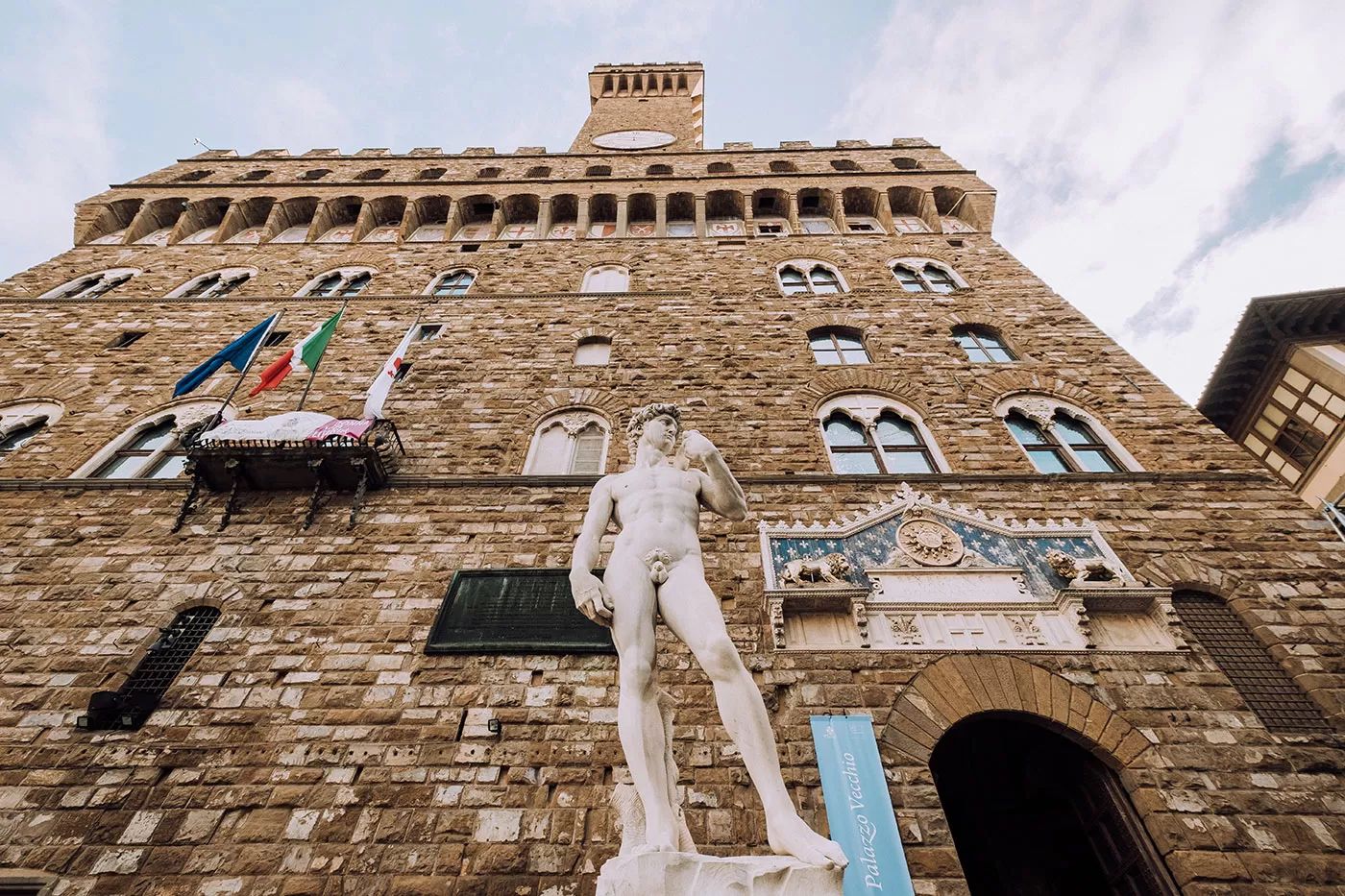
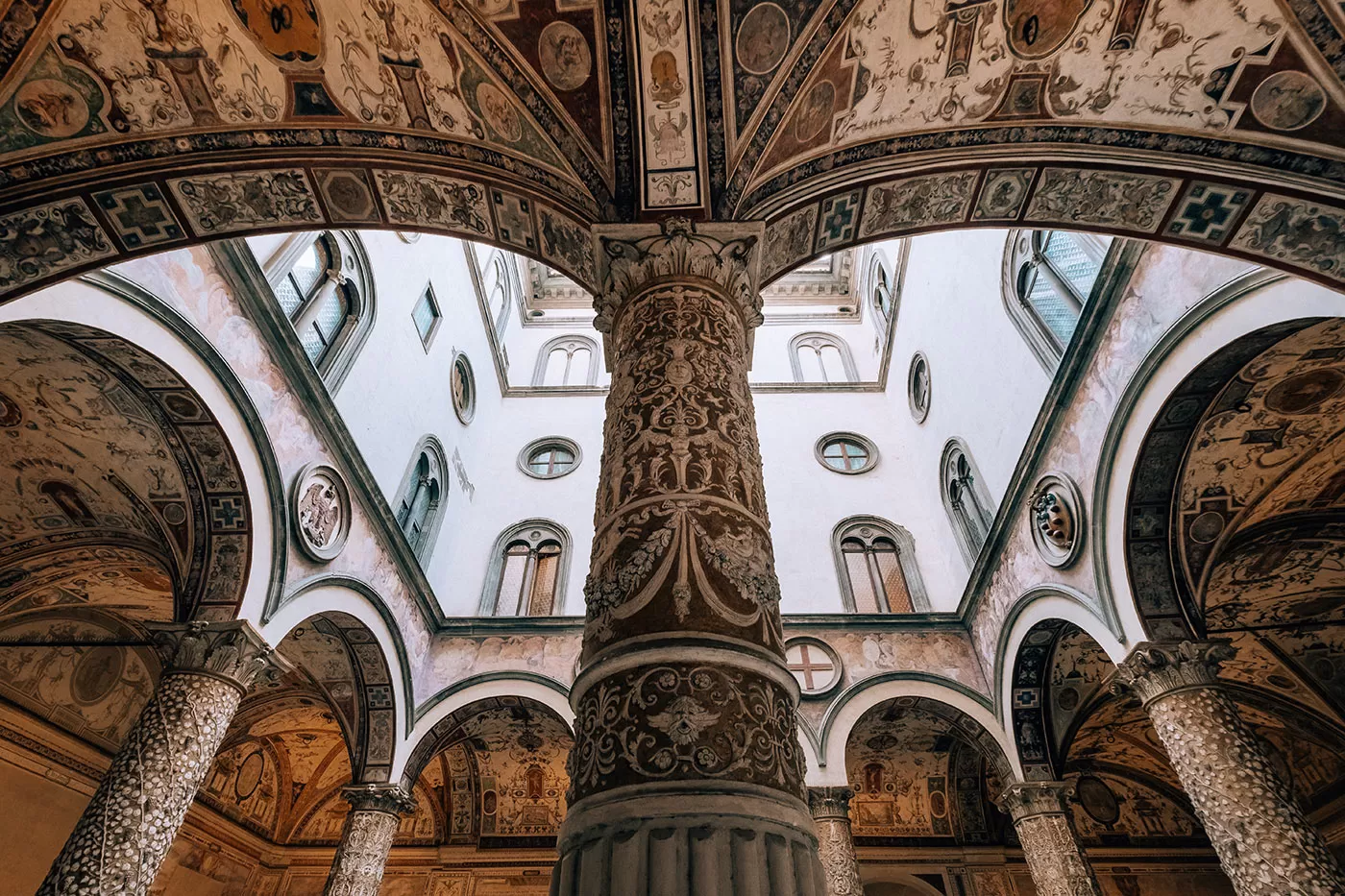 Since its founding, Palazzo Vecchio has been home to the local government. Art and history have been indissolubly bound for centuries in this grand building, which encloses Roman ruins, a Medieval fortress, and amazing Renaissance art under the same roof. Designed by Arnolfo di Cambio in the late 13th century, the palace stands on the ruins of the ancient theater (which you can explore underground) and has no external decorations to convey power. There’s also a 95-meter-tall tower – the Arnolfo Tower – that offers spectacular views (be prepared to climb 416 steps, though). Much of what you’ll see inside is the result of renovations carried out when Cosimo I de’ Medici and his wife Eleonora of Toledo moved their residence here in the mid-16th century.
Since its founding, Palazzo Vecchio has been home to the local government. Art and history have been indissolubly bound for centuries in this grand building, which encloses Roman ruins, a Medieval fortress, and amazing Renaissance art under the same roof. Designed by Arnolfo di Cambio in the late 13th century, the palace stands on the ruins of the ancient theater (which you can explore underground) and has no external decorations to convey power. There’s also a 95-meter-tall tower – the Arnolfo Tower – that offers spectacular views (be prepared to climb 416 steps, though). Much of what you’ll see inside is the result of renovations carried out when Cosimo I de’ Medici and his wife Eleonora of Toledo moved their residence here in the mid-16th century.

View of Duomo from Arnolfo Tower
Everything changed again in the 1400s when the Medici establish themselves and start pulling strings under the table so to speak. Palazzo Vecchio looks like a fortress and the reason is that at the time the city was divided into clans and each family would fight each other for power so it was essential that the government was protected and safe inside the fortress.
Palazzo Vecchio became Cosimo I de’ Medici’s home and was completely refurbished to welcome him. By then Cosimo I de’ Medici realised that he could use art for political propaganda. So, in the 1560s, he commissioned the Fountain of Neptune, the first public fountain in Florence. If you look closely, you’ll see the striking resemblance between the faces of Neptune and the statue of Cosimo I right standing right next to it!
Palazzo Vecchio remained Cosimo I’s residence until he moved to Palazzo Pitti, when it was then called ‘Palazzo Vecchio’ (Old Palace). Before then it was called Palazzo della Signoria after the government. Today, it is now the town hall where the mayor sits.
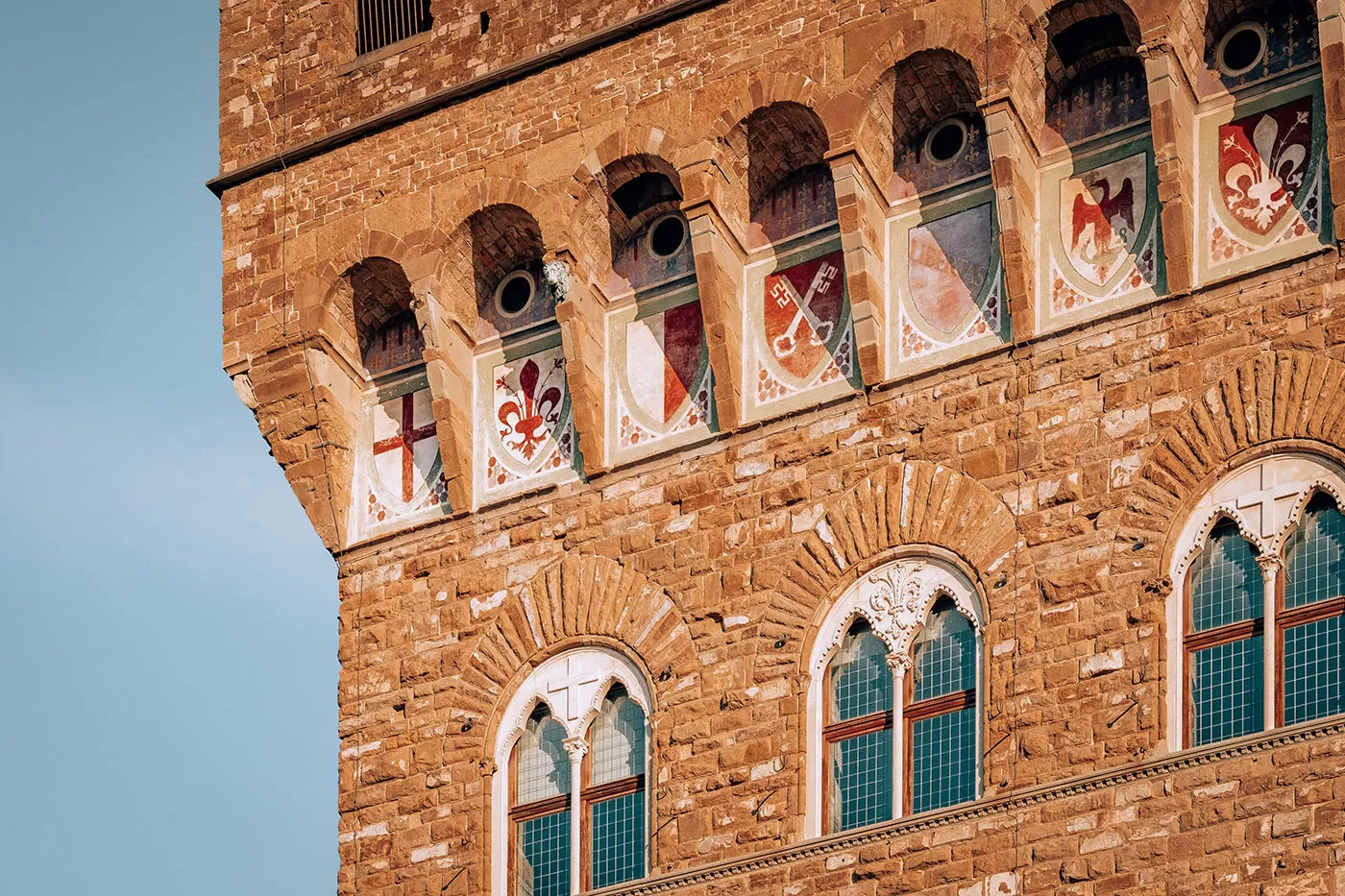
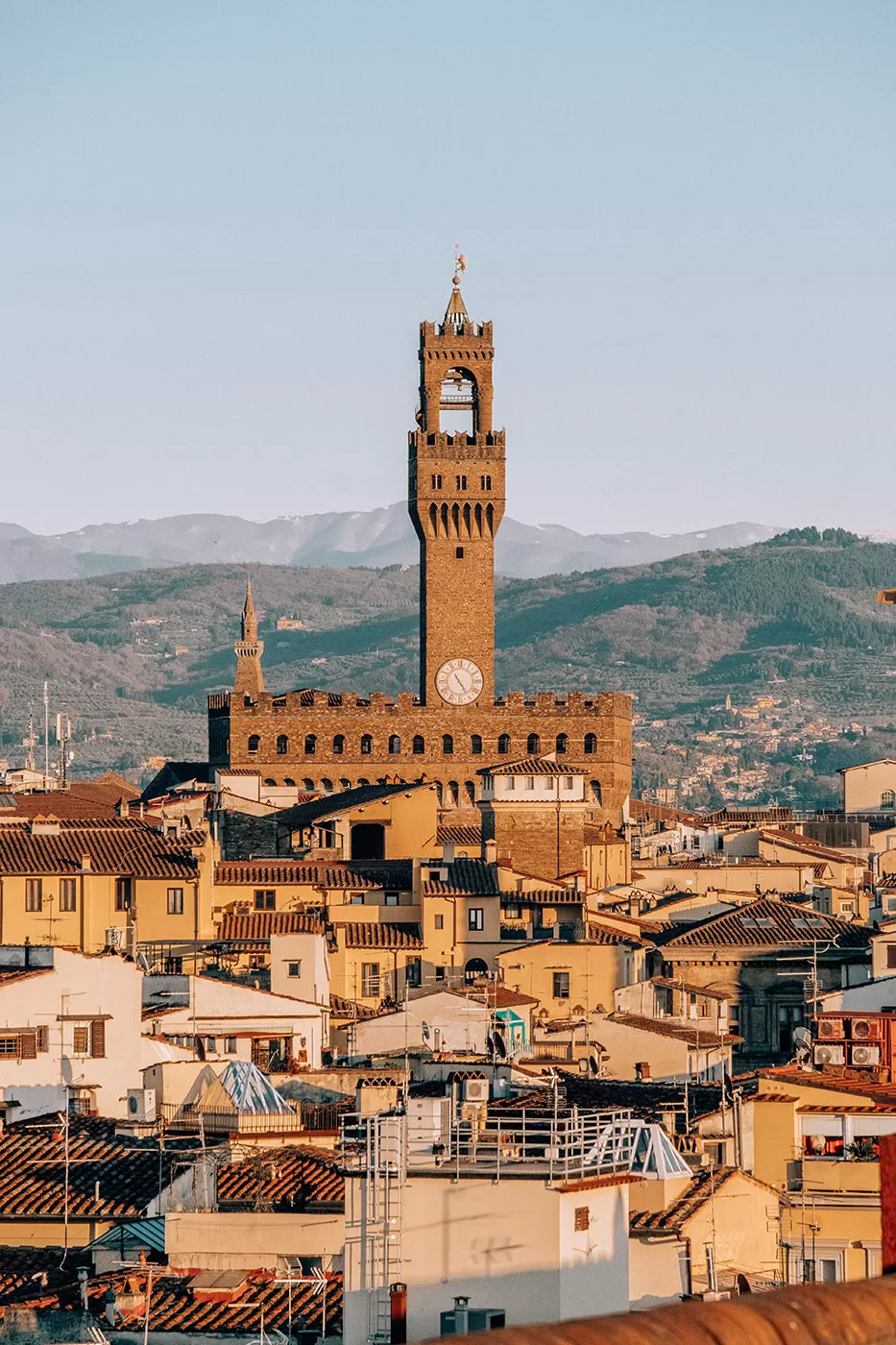
How to visit:
- Get your tickets here
- Guided tour ideas: As part of this tour of Palazzo Vecchio, you can learn about the palace’s history and see its masterpieces. This tour leads to hidden passageways and areas that are usually inaccessible to the public, perfect for those who are more curious. There are some specialized tours to keep the little ones entertained here.
6. Marvel at the fascinating Loggia dei Lanzi
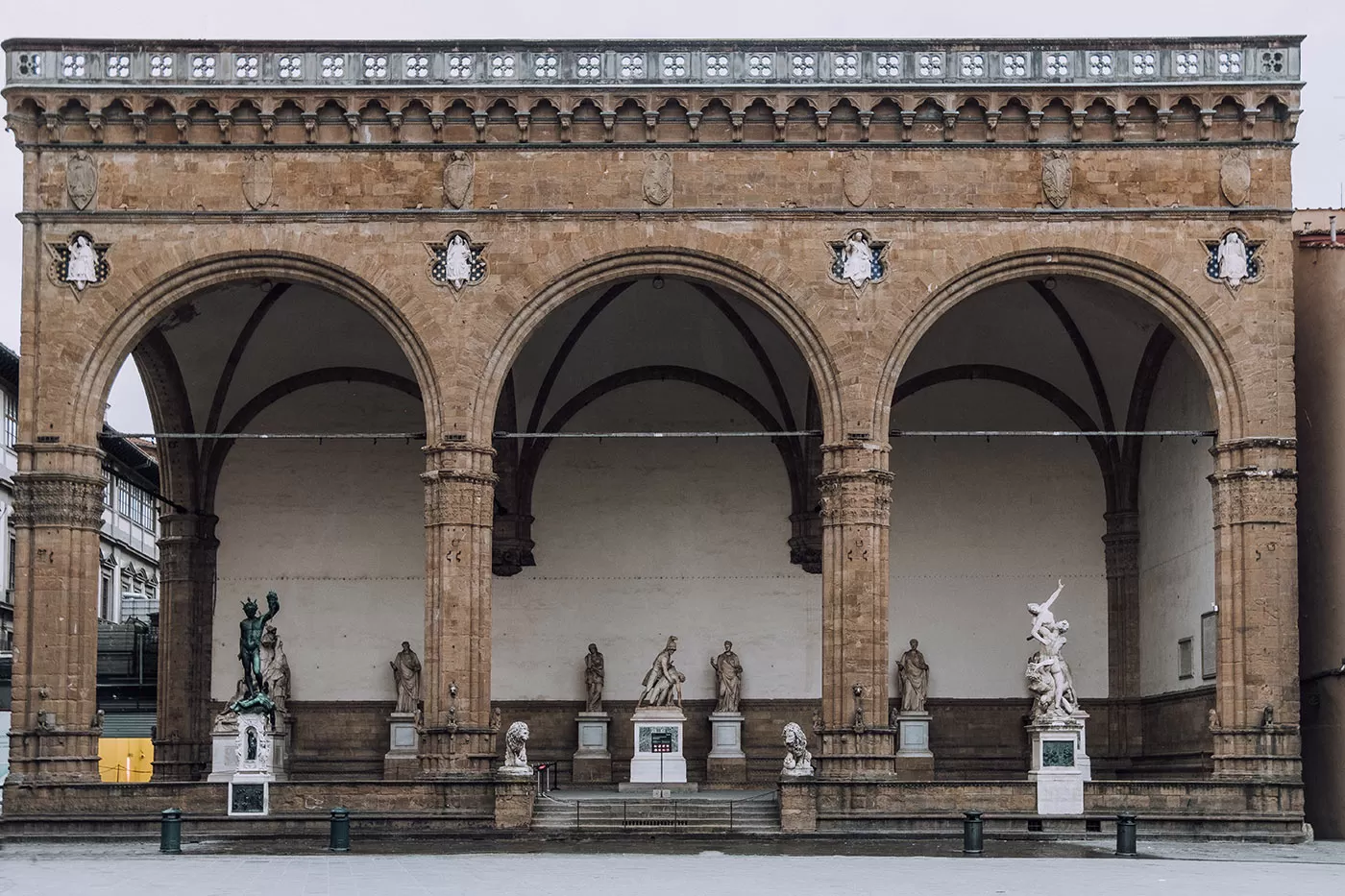
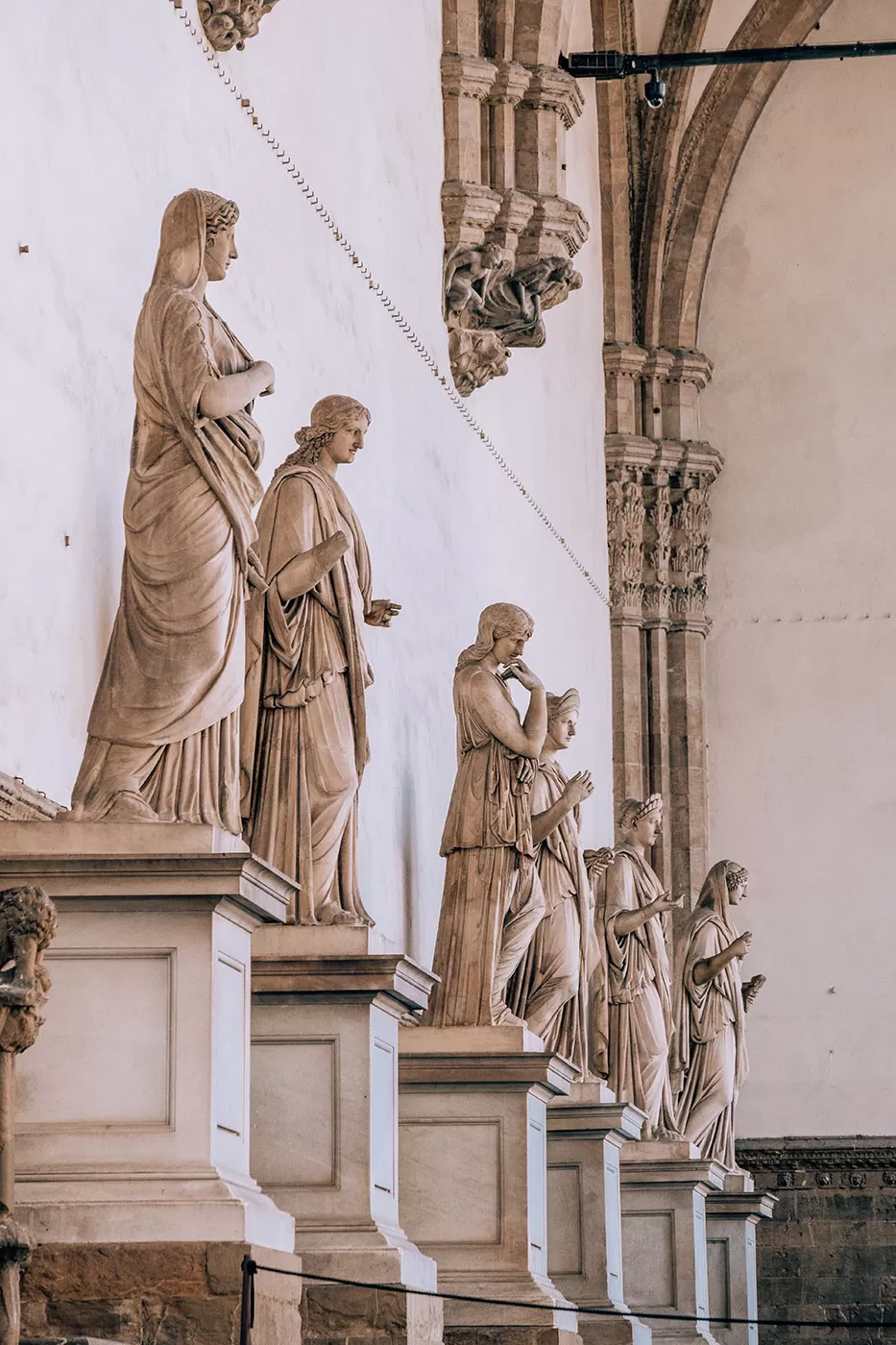 Adjacent to Palazzo Vecchio, the Loggia dei Lanzi is a covered portico that serves as a beautiful open-air sculpture gallery. The term loggia, means a roofed galley used as an open-air room. It was built in the 14th century to host public assemblies and official ceremonies. You can still see the original seating which runs around the wall. When Cosimo I de’ moved into the Palazzo, his bodyguards were stationed here.
Adjacent to Palazzo Vecchio, the Loggia dei Lanzi is a covered portico that serves as a beautiful open-air sculpture gallery. The term loggia, means a roofed galley used as an open-air room. It was built in the 14th century to host public assemblies and official ceremonies. You can still see the original seating which runs around the wall. When Cosimo I de’ moved into the Palazzo, his bodyguards were stationed here.
The name ‘Lanzi’ in the name Loggia dei Lanzi comes from Lanzichenecchi, the German mercenary soldiers who guarded the Medici. Sort of like who the Swiss-Gaurd protects the Pope in the Vatican!
During the 16th century, the Medici used this space to exhibit a series of sculptures that were not just beautiful but also represented a political message. Among them, there’s Cellini’s muscular Perseus holding Medusa’s head and Giambologna’s spiraling Rape of Proserpina (Rape of the Sabine Woman).
Perseus
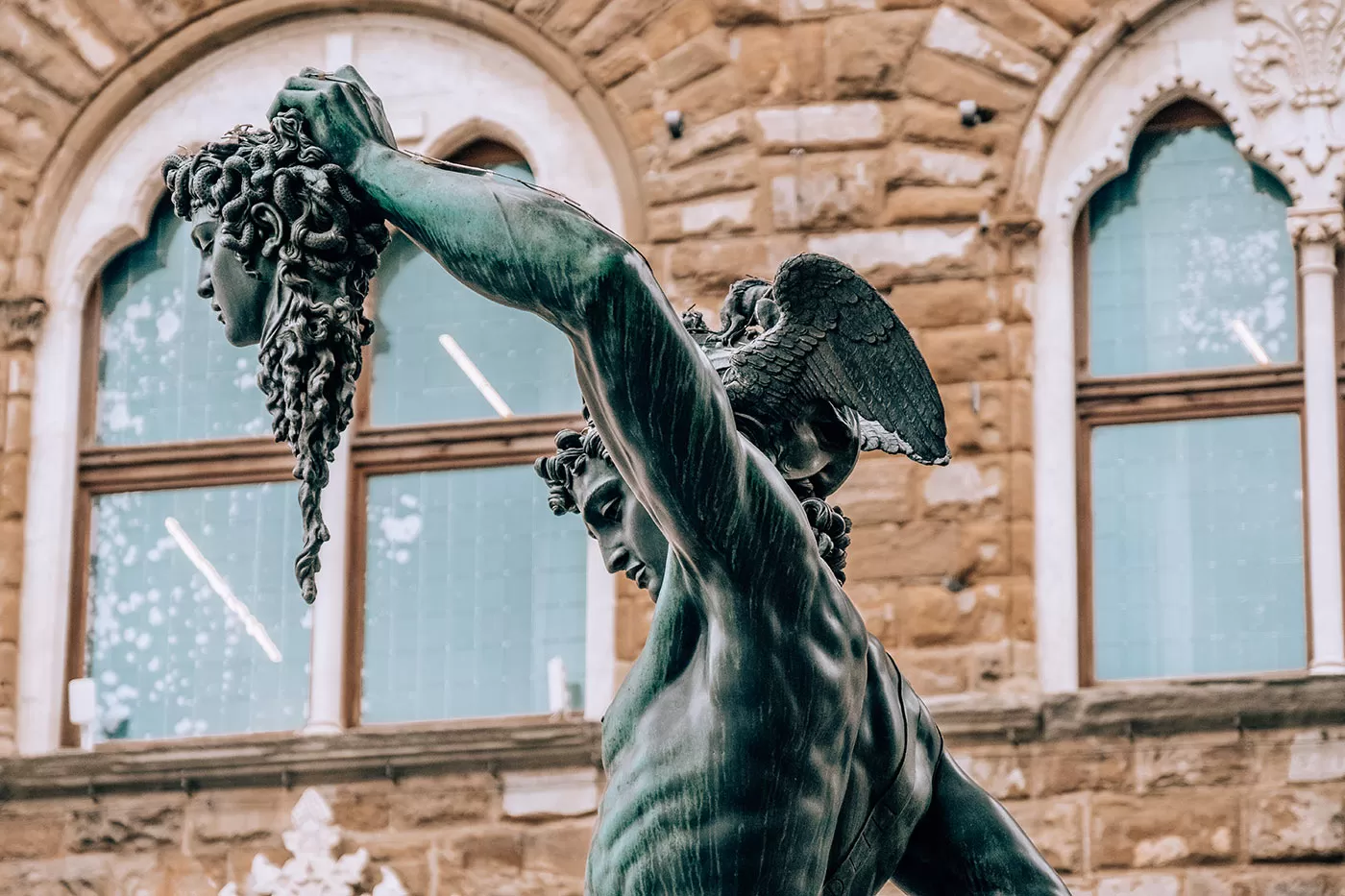 The original bronze statue of Perseus which was made in one single cast has stood here since it was made between 1545–1554 by Benvenuto Cellini. He was a great sculptor and goldsmith who also made jewelley for Cosimo I’s wife, Eleonora of toledo.
The original bronze statue of Perseus which was made in one single cast has stood here since it was made between 1545–1554 by Benvenuto Cellini. He was a great sculptor and goldsmith who also made jewelley for Cosimo I’s wife, Eleonora of toledo.
According to Greek mythology, Perseus beheaded Medusa as she slept before returning to Seriphus to rescue his mother by turning Polydectes (polydectees) and his supporters to stone at the sight of Medusa’s head. This statue, located outside Cosimo I’s home, served as a warning to the Florentines – This is what happens to my enemies.
Make sure you walk around to the back of the statue and look out for the self-portrait of the artist himself, that’s Cellini’s face you see!
The Rape of the Sabines
The other impressive statue is the Rape of Proserpina (or Rape of the Sabine Woman) by Flemish sculptor and architect Giambologna, who very unconventionally for the time, commissioned himself to sculpt this masterpiece as a way to draw attention to his talent and obtain work. Well, it worked! Completed between 1579 and 1583, Cosimo I de’ Medici saw it, loved it, bought it and placed it here.
What makes the sculpture so special is that it doesn’t have a front or back like other statues of the time, but it invites you to walk around it for a 360-degree experience where you see the bodies in movement spiraling upward.
Michelangelo was the first to experiment with and sculpt the human form in various twists, movements, and poses, finishing the statue of David 80 years earlier, Giambologna achieved widespread fame in his lifetime, and this work is widely considered his masterpiece.
7. Visit one of the world’s most incredible art collections at the Uffizi Gallery
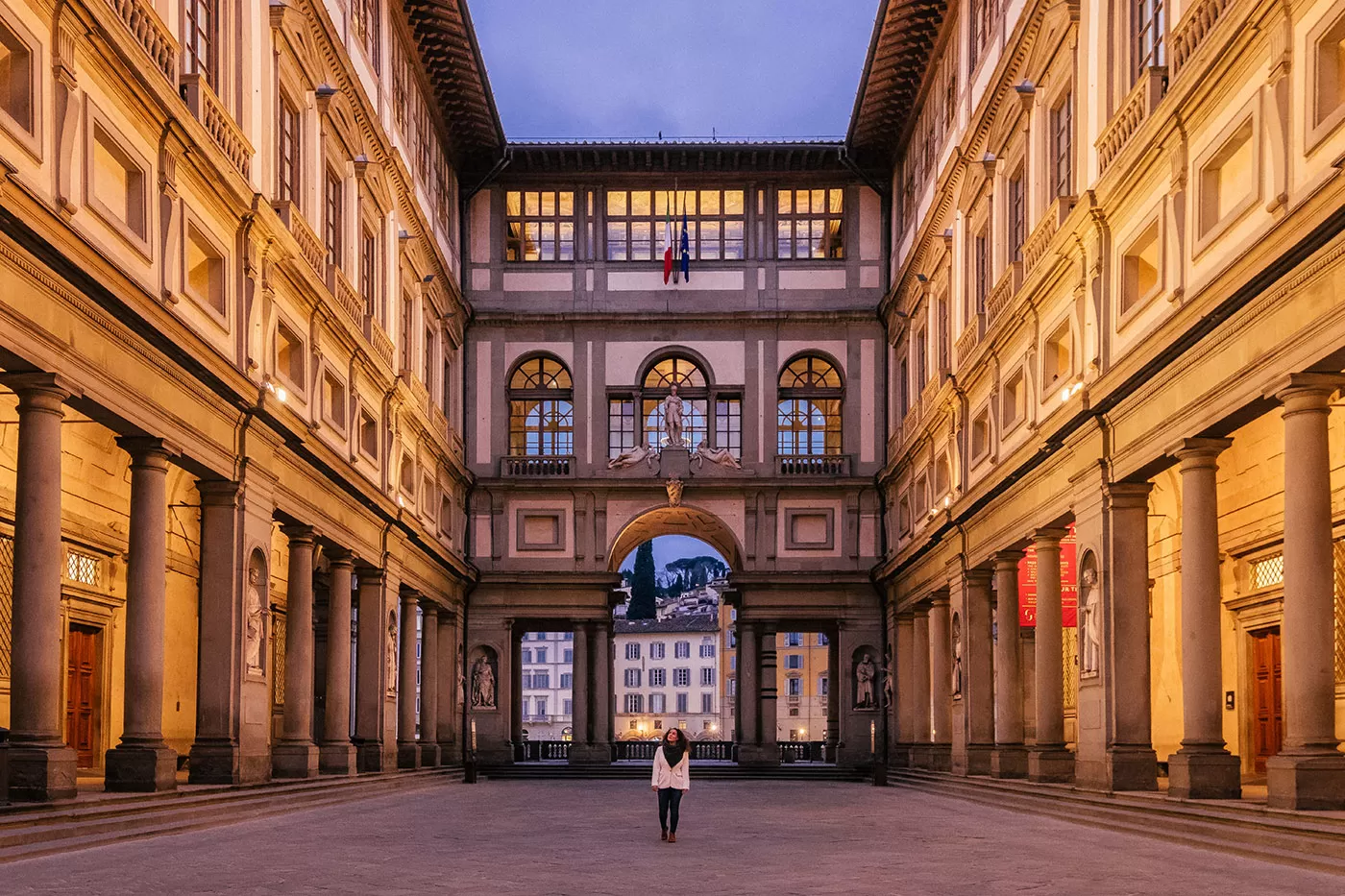
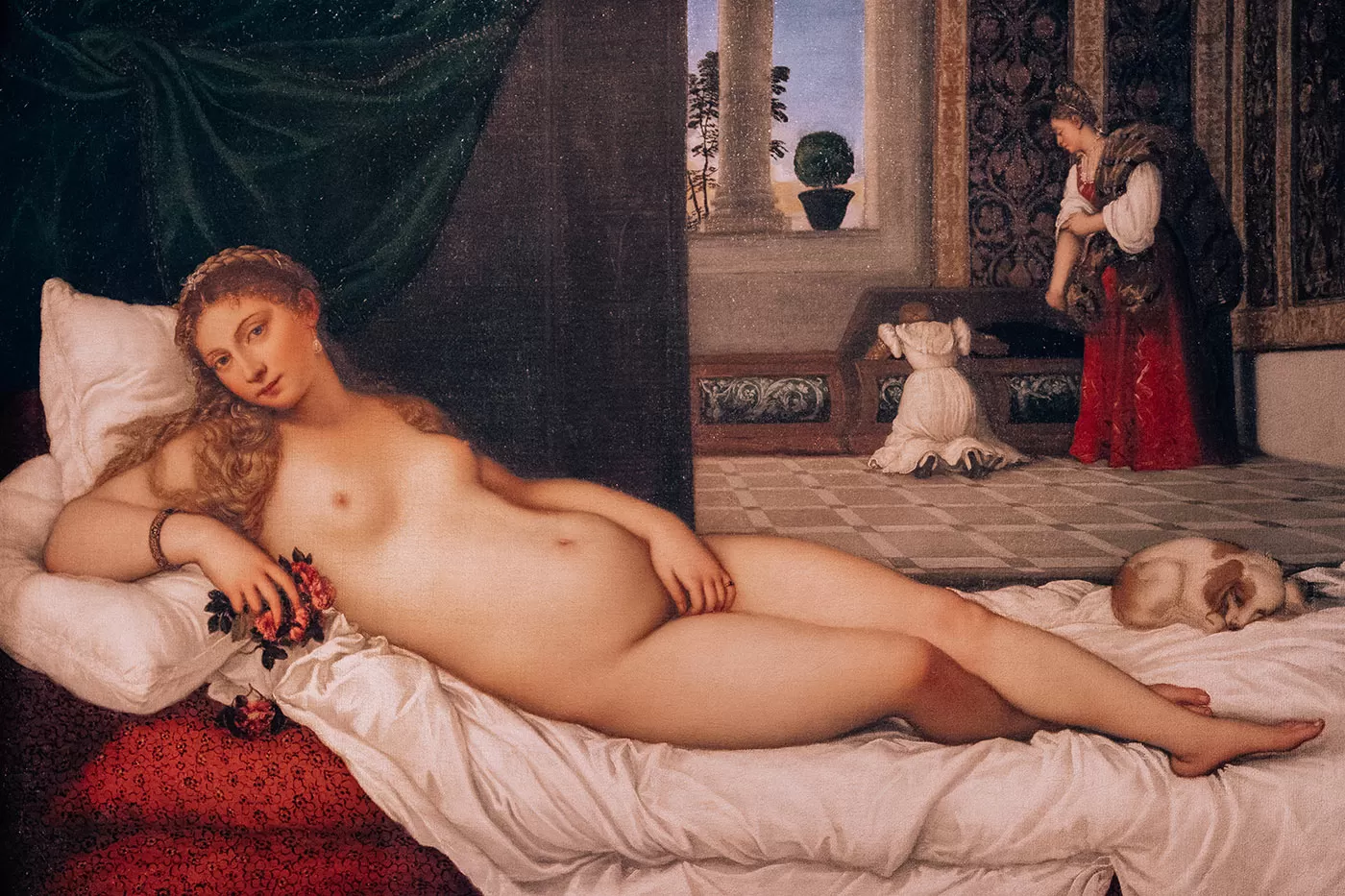
Venus of Urbino byTitian
Behind the Loggia dei Lanzi is the elegant edifice designed by Giorgio Vasari in 1560 for the city’s legal and administrative offices. Five years later, on the occasion of Francesco I’s marriage to Joan of Austria, an elevated passageway was requested between the Uffizi and Pitti Palace (the famous Vasari Corridor) so the family would be safe from assaults in the streets below. In 1574, Francesco I had the top floor converted to display the Medici’s treasures, and that’s how one of the world’s most precious museums was born. Open to the public since 1769, today it has a vast collection of sculptures and paintings from the Middle Ages to the Modern Age. Here are just a few must-sees:
- Filippo Lippi’s sweet Madonna and Child with Angels
- Botticelli’s magnificent Primavera and Birth of Venus
- Leonardo’s Annunciation, where the biblical scene is depicted outdoors, rather than in a closed place as per tradition
- Michelangelo’s Tondo Doni, where the artist depicted a strong and muscular female figure
- Caravaggio’s Medusa, which was commissioned by the Medici’s agent in Rome to symbolize their courage in defeating their enemies (it was said that Medusa could turn people to stone just by looking at them)
How to visit:
- Get your tickets here
- Guided tour ideas:
- With this tour, you get priority access and an expert guide who will show you everything you need to see in 1h30m
- If it’s your first time in Florence, you will enjoy this guided tour that combines the visit to the Uffizi with a guided walk in the historic centre.
- With this tour, designed for children , you’ll go on a treasure hunt one masterpiece at a time
8. Take a moment to marvel at the Arno River – The lifeline of Florence
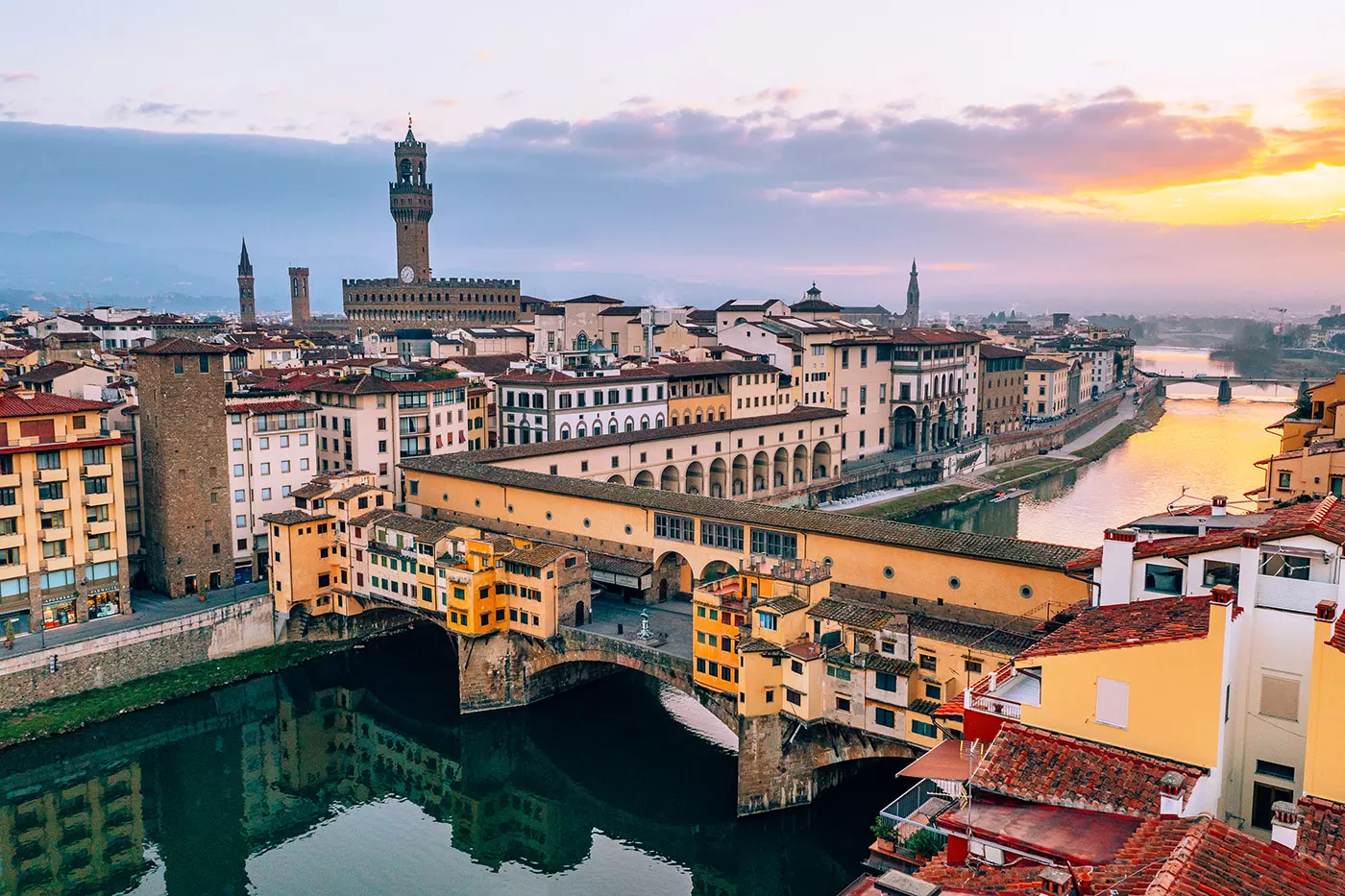 The oldest part of Florence is the Arno River – one of the most important rivers in central Italy and Tuscany’s most vital natural source. This 241-kilometre-long river originates from Mount Falterona in the Casentino area in the Apennine mountains and flows right through Florence to Pisa before emptying into the Ligurian Sea, an arm of the Mediterranean Sea.
The oldest part of Florence is the Arno River – one of the most important rivers in central Italy and Tuscany’s most vital natural source. This 241-kilometre-long river originates from Mount Falterona in the Casentino area in the Apennine mountains and flows right through Florence to Pisa before emptying into the Ligurian Sea, an arm of the Mediterranean Sea.
The Arno River might’ve been the reason why the Romans decided to create a settlement here in 59 BC. The Arno became extremely important to Florence’s economy in the Middle Ages when the city started to really develop in the year 1,000 thanks to its wool fabric production.
The Florentines were especially good at dying and working with wool fabric which needed a lot of water. Water for the water mills, for transport and exporting their goods around the world, including Europe, Africa, and the Middle East via its connection to the Mediterranean Sea.
The Florentines were very good businessmen and bankers too and by the 1200s the city experienced a huge economic boom, becoming one of the financial centers of Europe alongside London, Paris, and Barcelona. Rome and Milan weren’t as yet well established at this stage.
9. Feast your eyes on Ponte Vecchio
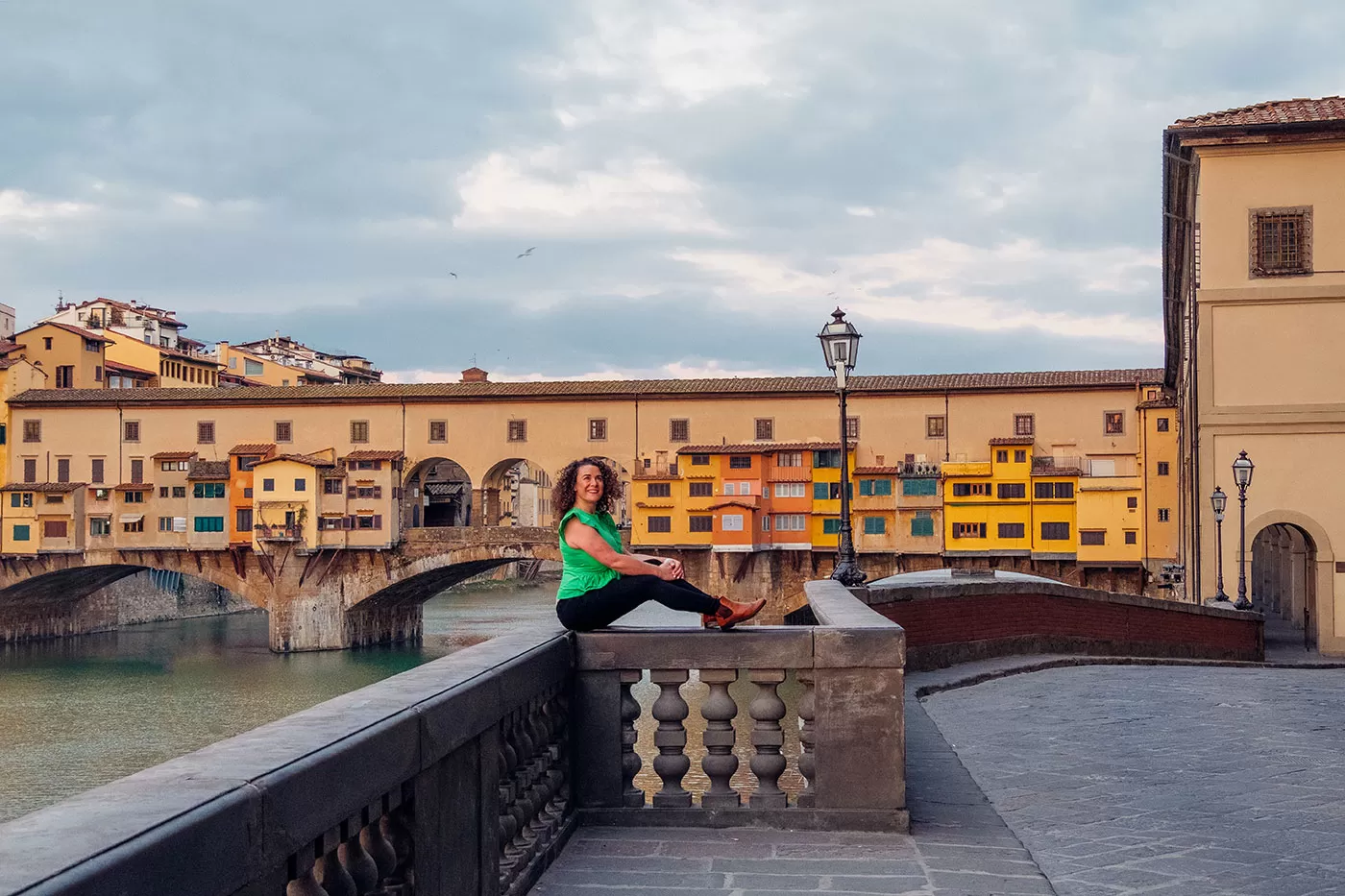
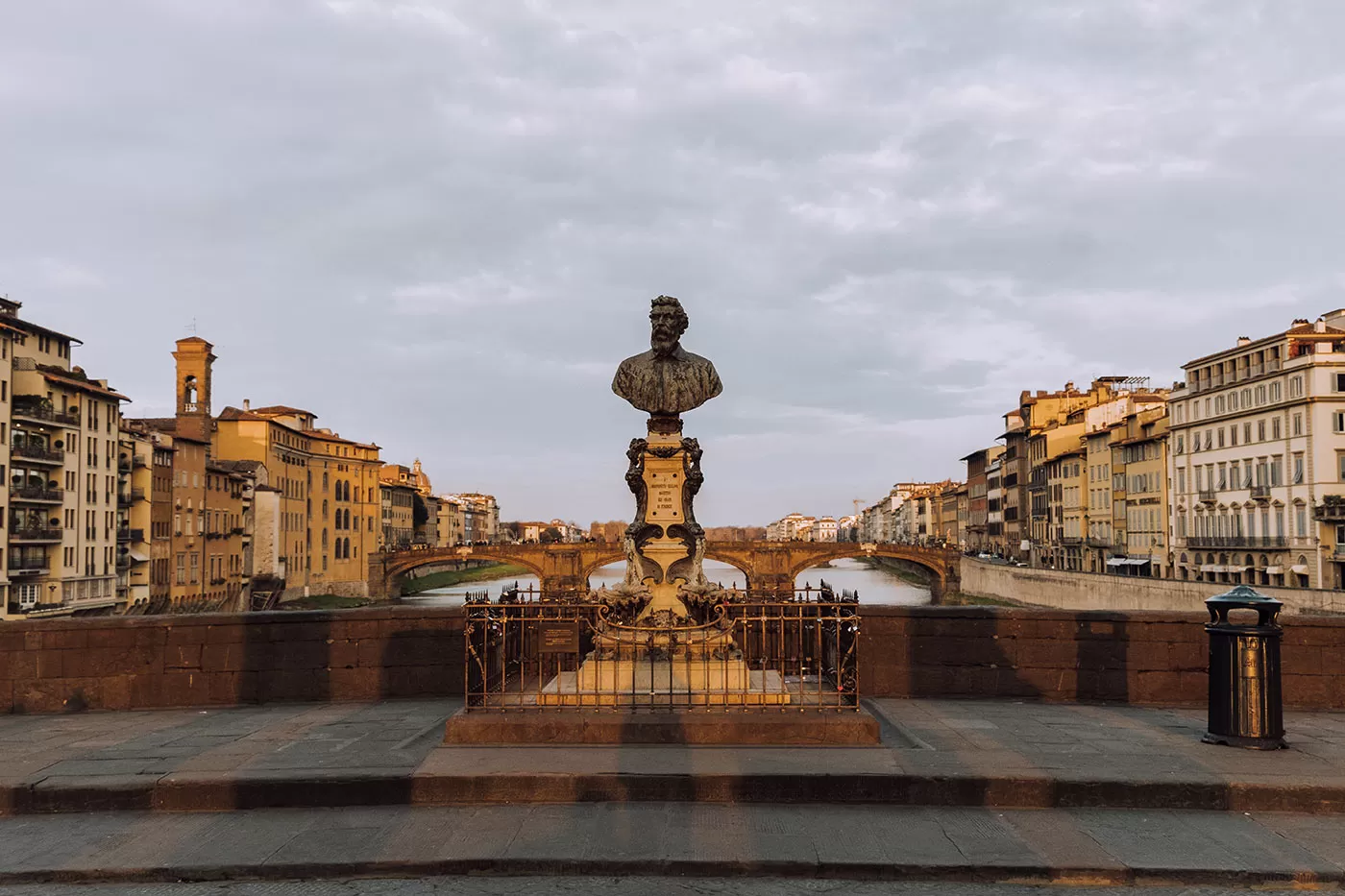
Bust of Celini on Ponte Vecchio
The Uffizi courtyard leads directly to Ponte Vecchio, the ancient bridge that joins the city centre with the Oltrarno district. The Ponte Vecchio (meaning, ‘Old bridge’) and stands where a Roman bridge of ancient Florentia once stood. Is was also the only bridge that wasn’t blown up by the Nazis in World War II to slow down the Allies coming up North from Sicily. Instead, they chose to raise the surrounding streets to the ground, completely flattening the area. Later the area was rebuilt using as much of the original medieval sandstone as they could mix with new materials, which is why the streets are a patchwork of blended designs.
The current bridge was finished in 1350 after a flood in 1333 destroyed its predecessor. Soon after the bridge was built, the government of Florence rented the shops built on it to the Guild of Butchers to recoup the money. An ideal spot for the butchers who could throw their waste into the river. The bridge also features houses on it which was normal for the middle ages but now these are only used as storage for the shops below.
At the time Cosimo I was living in the medieval fortress, Palazzo Vecchio, while working in the gli Uffizi, which translates to ‘offices’ . His wife decided they need a bigger house and gardens and bought the Pitti Palace located on the opposite side of the river.
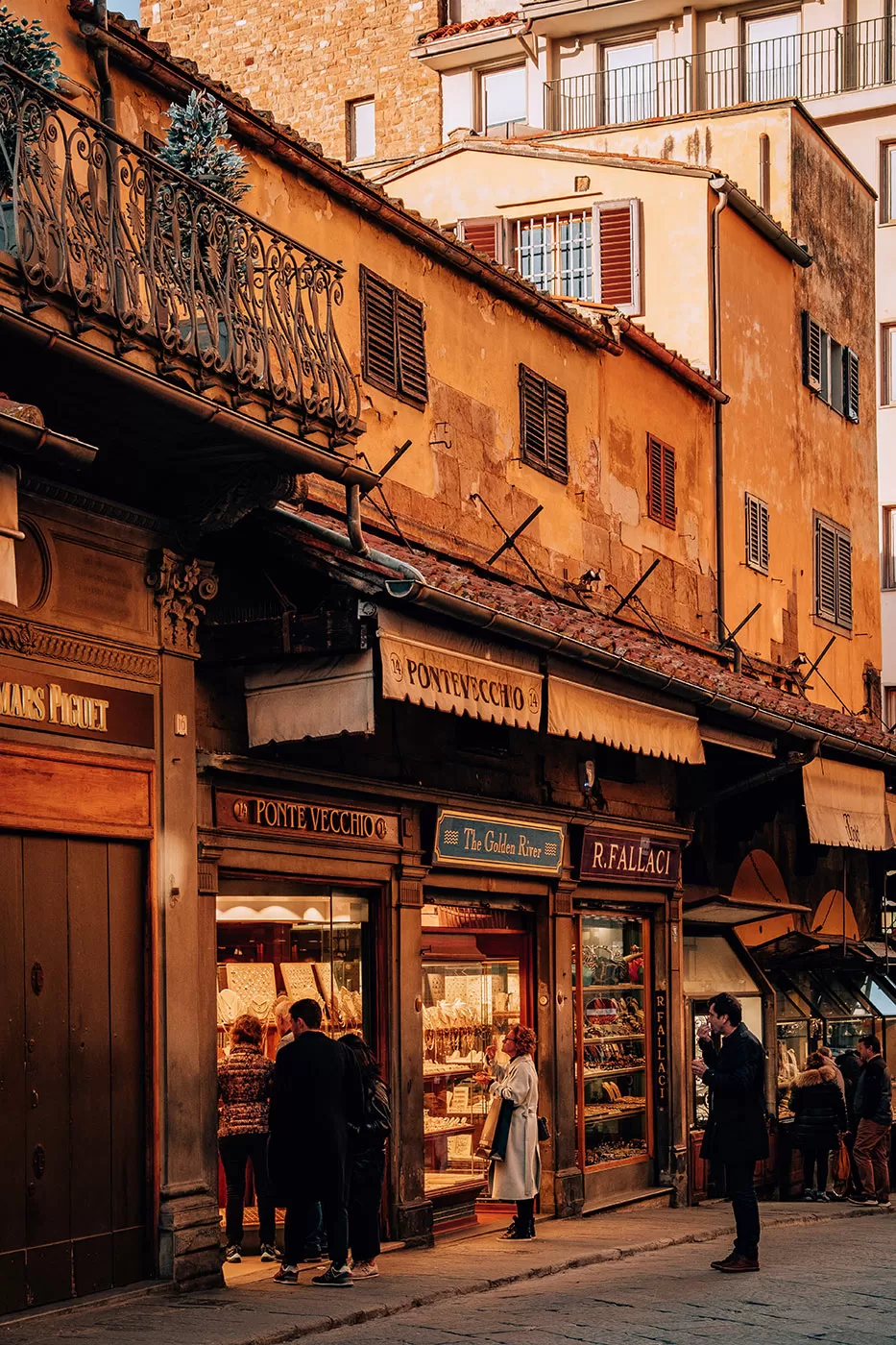 So that the Duke could travel easily between his home and office, Palazzo Vecchio, gli Uffizi and the Pitti Palace, in 1565 Cosimo I de’ Medici commissioned Giorgio Vasari to build the Vasari Corridor. This hidden skywalk is a covered overhead passageway that’s located directly above the shops on the Ponte Vecchio.
So that the Duke could travel easily between his home and office, Palazzo Vecchio, gli Uffizi and the Pitti Palace, in 1565 Cosimo I de’ Medici commissioned Giorgio Vasari to build the Vasari Corridor. This hidden skywalk is a covered overhead passageway that’s located directly above the shops on the Ponte Vecchio.
The butcher’s residence on Ponte Vecchio lasted until 1593 when the Medici decided the new occupants should be goldsmiths – more appropriate for the ruling family – and far less smelly. Still today, only goldsmiths are allowed to set up shop on the bridge.
The picturesque wooden shuttered shops and Vasari Corridor make this bridge a unique landmark in Florence – so much so that the Germans spared it when they blew up all the other bridges in 1944 to slow the allied advance.
Tip: the Santa Trinità bridge is the best place to take pictures of Ponte Vecchio
10. Ensure your return to Florence by rubbing Il Porcellino at Mercato Nuovo
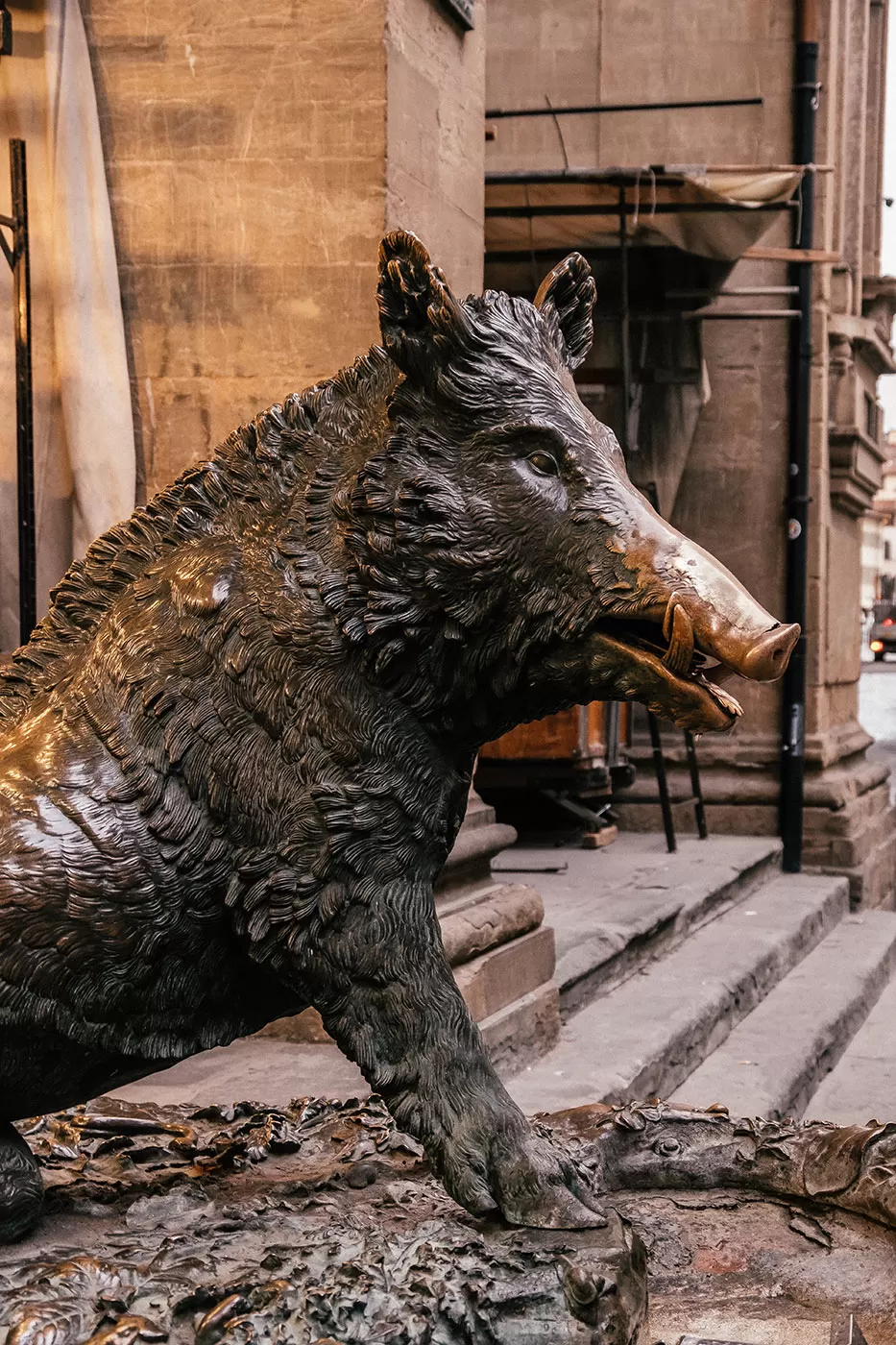 Mercato Nuovo was a marketplace built for Cosimo I in the mid-1500s to sell luxury items produced in his workshops. Silk, tapestries, and gold were all sold here. Today, it’s a leather market selling everything from jackets, bags, and key chains to sunglasses cases.
Mercato Nuovo was a marketplace built for Cosimo I in the mid-1500s to sell luxury items produced in his workshops. Silk, tapestries, and gold were all sold here. Today, it’s a leather market selling everything from jackets, bags, and key chains to sunglasses cases.
The star of the market is Il Porcellino (Italian for “piglet”) the local Florentine nickname for the bronze fountain of a boar located here. Based on a copy of a Hellenistic marble statue kept in the Uffizi Galleries, it was sculpted and cast by Baroque master Pietro Tacca in 1633, after a spring water source was found here.
The fountain mostly served a practical function, as well as a decorative one, as it supplied water to the merchants who traded in the market, who at the time specialised in buying and selling fine fabrics such as silk, brocades, and woolen cloths.
As tradition goes, visitors are invited to rest a coin on the tongue inside the boar’s gaping jaws. When you let it fall, it should slip through the underlying grating securing your return to Florence. Then rubbing the boar’s snout will bring you good luck. This tradition is said to stem from merchants at the time who would hold the snout as they drank from the boar’s mouth because drinking the water from this fountain was safer than drinking from the Arno where butchers and the like were throwing all their waste.
Like most precious objects in the city, the present statue is a modern copy that was replaced in 2008, while Tacca’s bronze is sheltered in the Museo Stefano Bardini in Palazzo Mozzi.
Tip: Visit early morning to avoid the crowds and queuing up for your turn.
11. Visit the Pitti Palace
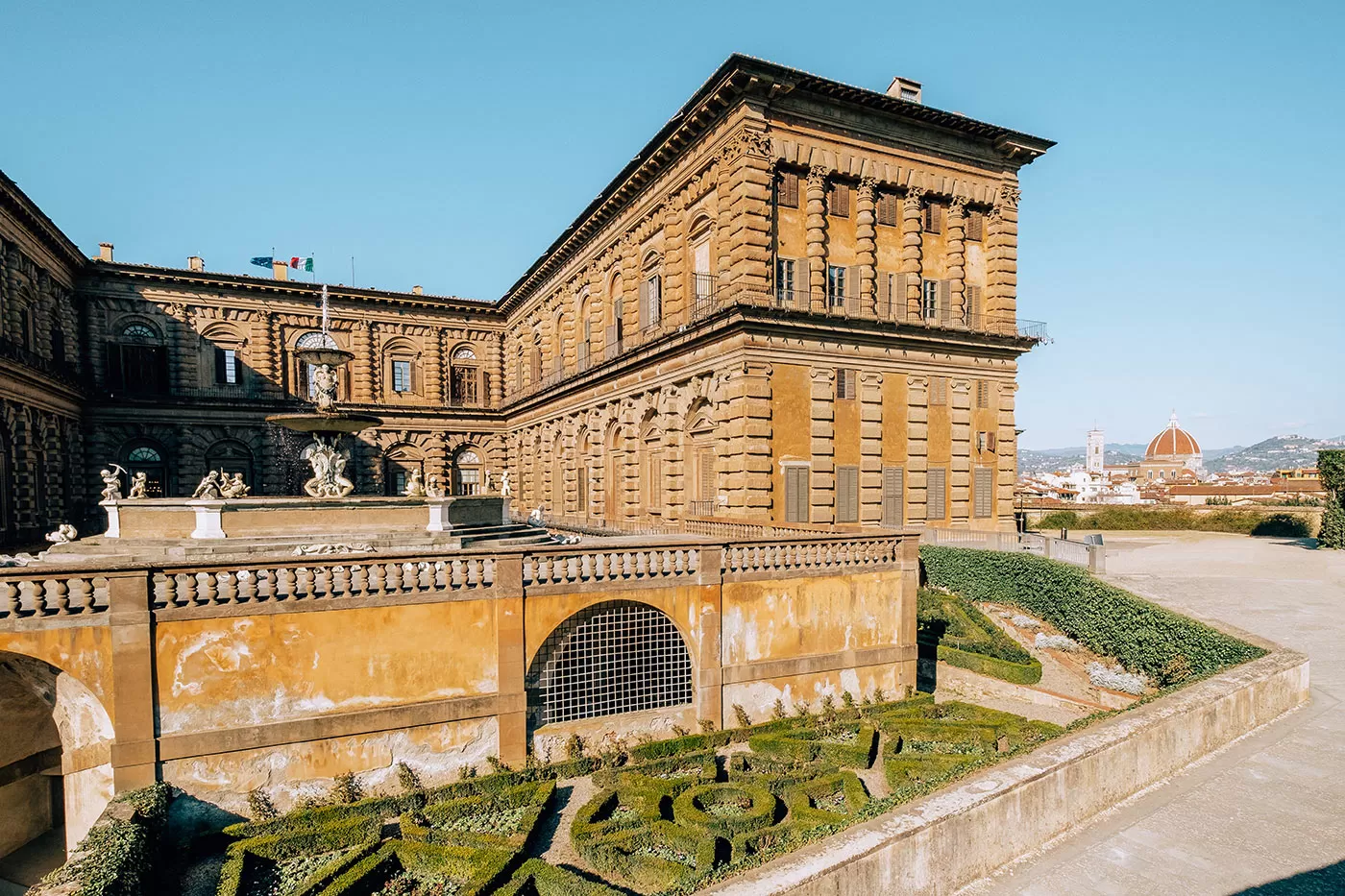
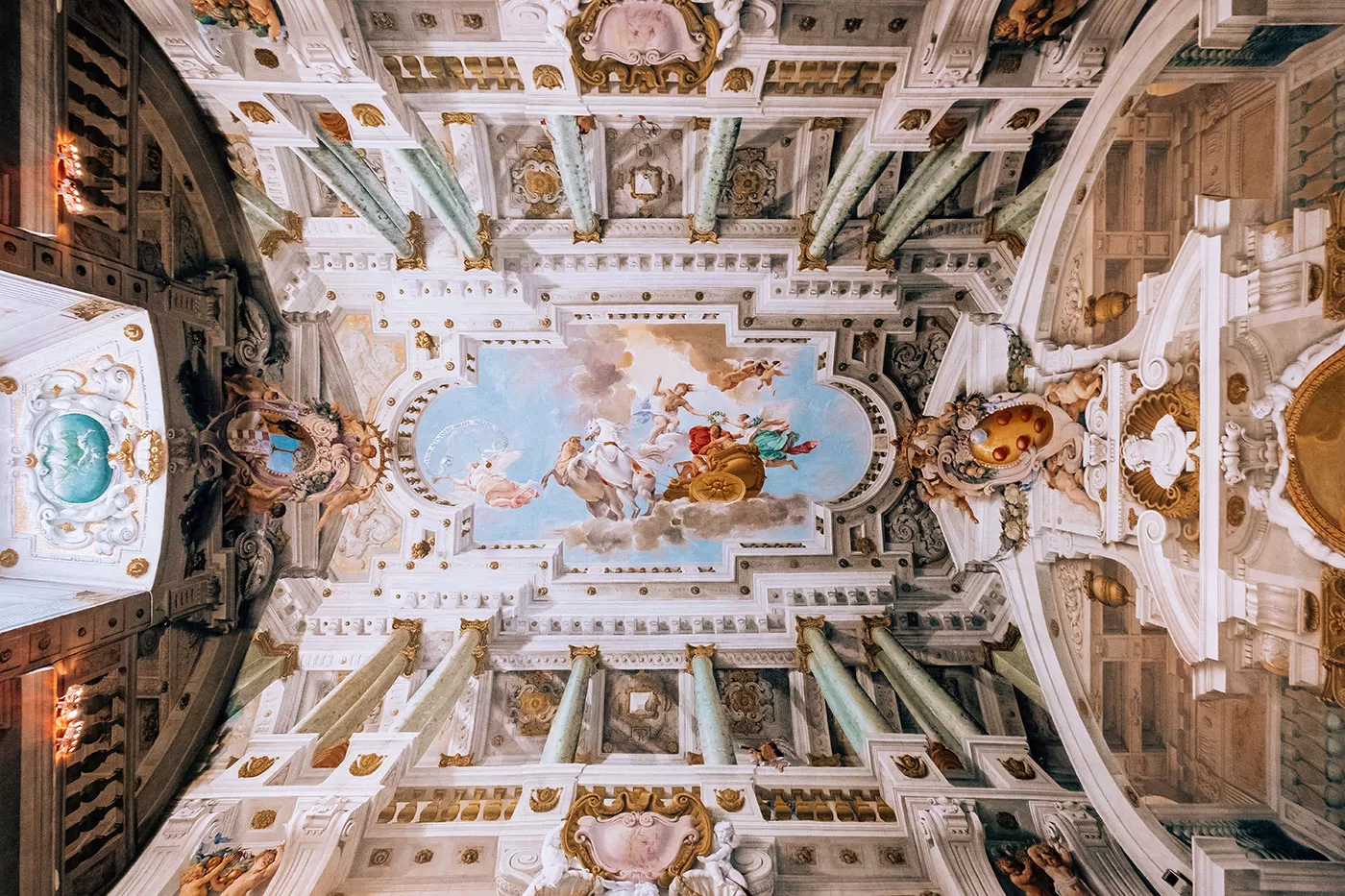 Pitti Palace is the largest of the Florentine palaces and is a testament to the power of its previous occupants, which included the Medici, Napoleon, and the former King of Italy, Vittorio Emanuele II, who stayed here when Florence was the capital of the newly united Italian state. Brunelleschi designed the palace for the Florentine merchant Luca Pitti (after whom the palace is named) based on a rejected plan for Palazzo Medici-Riccardi. Today, Palazzo Pitti houses a diverse collection of world-class art, including paintings, sculptures, textiles, and decorative arts from the Renaissance to modern times. Some of the most notable pieces can be found in the Palatine Gallery and include works by artists such as Titian, Raphael, and Caravaggio.
Pitti Palace is the largest of the Florentine palaces and is a testament to the power of its previous occupants, which included the Medici, Napoleon, and the former King of Italy, Vittorio Emanuele II, who stayed here when Florence was the capital of the newly united Italian state. Brunelleschi designed the palace for the Florentine merchant Luca Pitti (after whom the palace is named) based on a rejected plan for Palazzo Medici-Riccardi. Today, Palazzo Pitti houses a diverse collection of world-class art, including paintings, sculptures, textiles, and decorative arts from the Renaissance to modern times. Some of the most notable pieces can be found in the Palatine Gallery and include works by artists such as Titian, Raphael, and Caravaggio.
How to visit:
- Get your tickets here
- Guided tour idea: Combining the Pitti Palace and Palatine Gallery, this tour will show you all the jewels in the Pittle Palace complex while recounting the history of the Medici family.
12. Take a stroll in the magical Boboli Gardens
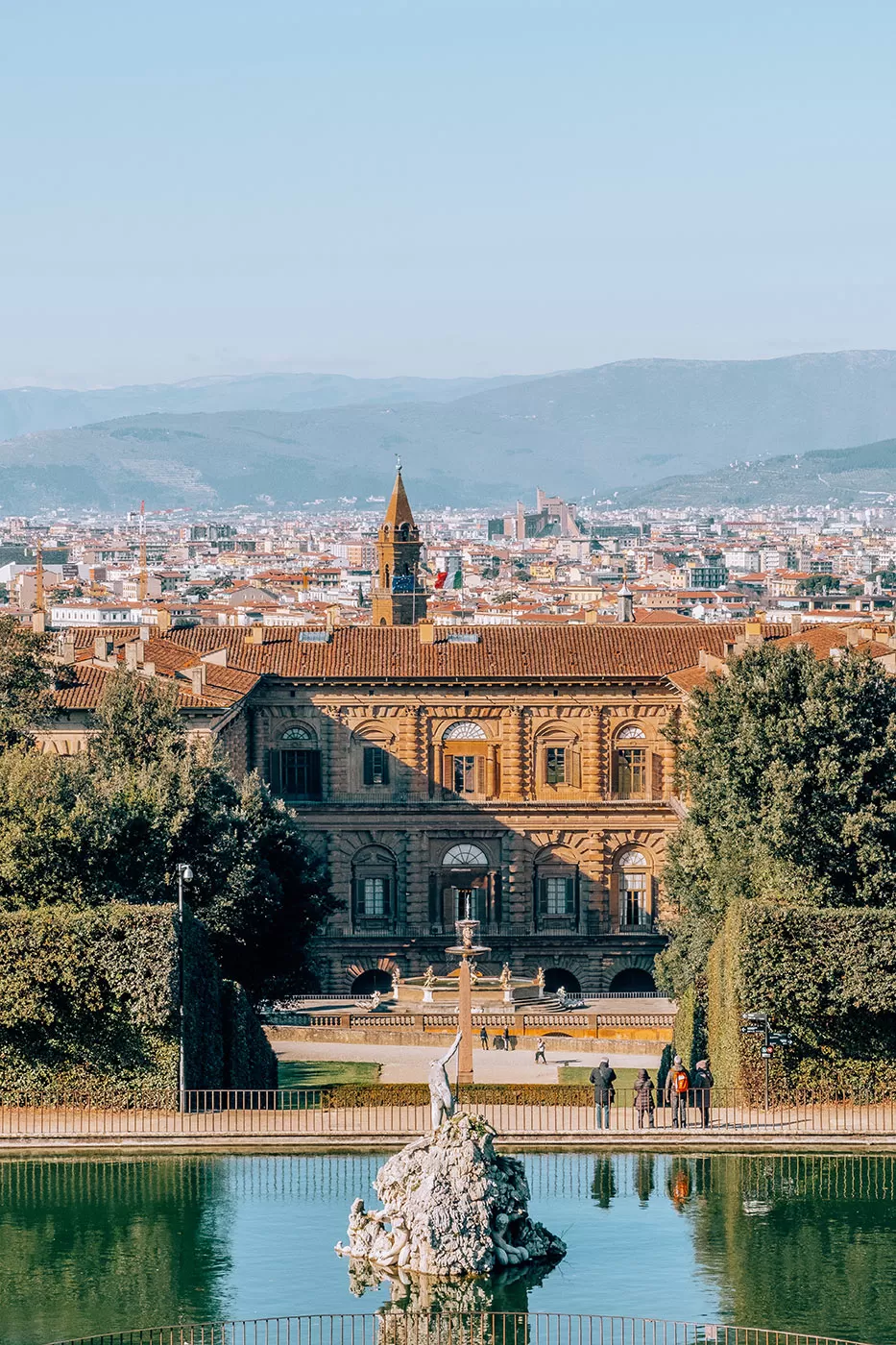 The Boboli Gardens is the gorgeous park at Palazzo Pitti. They were commissioned by the Medici (who else!), who hired the most talented architects and gardeners of the time and created the Italian garden style that would inspire many European courts. The result was 45,000 acres of green expanse with a variety of unique and captivating landscapes that make it look like an outdoor museum. There are sculptures, fountains, grottos, and paths everywhere. And from the gardens’ highest points, you can see the whole city. You might want to take a guided tour of the Boboli Gardens since they’re so big and require a lot of walking.
The Boboli Gardens is the gorgeous park at Palazzo Pitti. They were commissioned by the Medici (who else!), who hired the most talented architects and gardeners of the time and created the Italian garden style that would inspire many European courts. The result was 45,000 acres of green expanse with a variety of unique and captivating landscapes that make it look like an outdoor museum. There are sculptures, fountains, grottos, and paths everywhere. And from the gardens’ highest points, you can see the whole city. You might want to take a guided tour of the Boboli Gardens since they’re so big and require a lot of walking.
How to visit:
- Get your tickets here
- Guided tour ideas: This1-hour guided tour covers everything you need to know about the royal gardens. Alternativel, both the Boboli Gardens and Pitti Palace’s Palatine Gallery are included in this tour.
13. See Michelangelo’s famous David
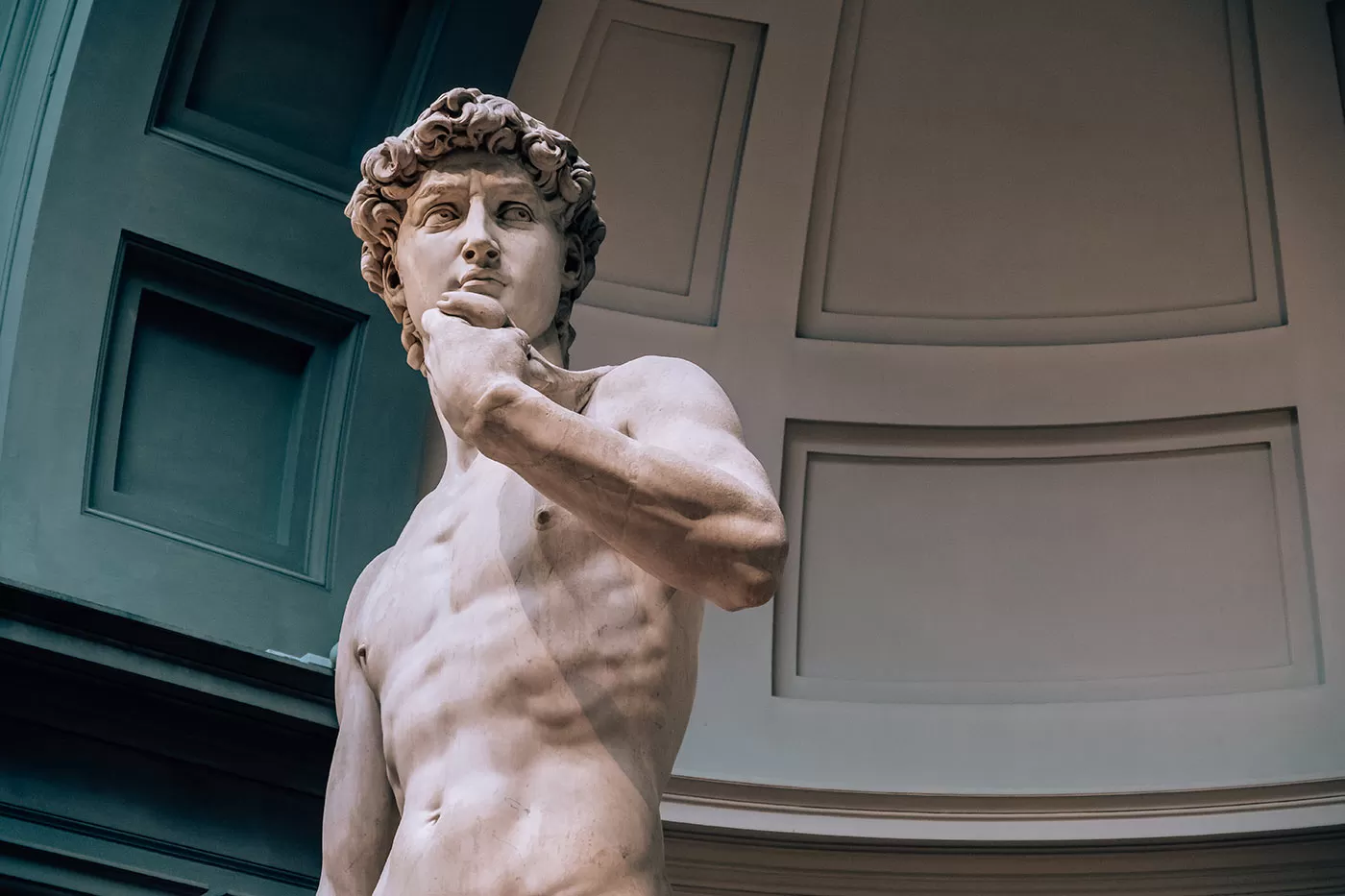
In 1784, Pietro Leopoldo founded the Accademia Gallery as part of his reorganization of the Academy of Fine Arts, which Cosimo I de’ Medici had opened in 1563. The Accademia quickly rose to fame when Michelangelo’s David was moved here from Piazza della Signoria in the summer of 1873 to protect it from the weather. While the David remains the main attraction at the Accademia Gallery, there is much more to discover. Besides Michelangelo’s four unfinished sculptures, you’ll find paintings by Perugino and Ghirlandaio, and a vast collection of musical instruments from the Medici’s private collection. It is also worth checking out the collection of plaster casts and models by Lorenzo Bartolini in the Gipsoteca, one of those unique things to do in Florence that often gets overlooked.
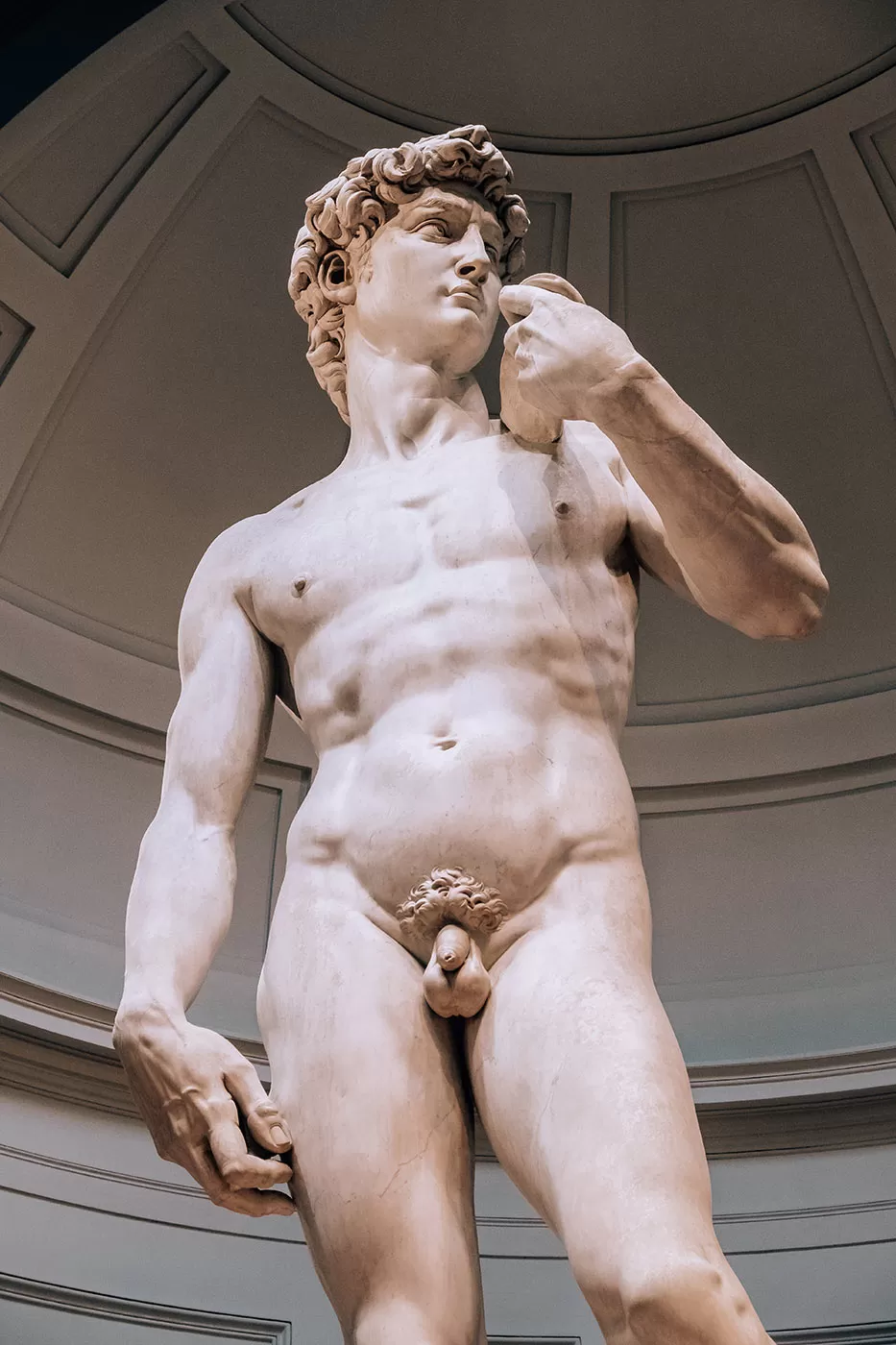
Getting tickets to see David is essential as they book out weeks (if not months) in advance on the official Museum website. If you miss out, then booking this private tour with an art historian or this small-group tour of Florence’s highlights with skip-the-line tickets to the Gallery is a great option as you’re guaranteed to get in but also learn a lot more than going on your own. I joined both tours and can’t recommend them enough. I learned something new and different during each one. Both are fantastic options and both allow you to stay in the museum for as long as you like at the end of the tour.
How to visit:
- Get your tickets here
- Guided tour ideas: With an expert art historian guide, you’ll see all the highlights of the museum on this small-group tour. If you’re pressed for time, you could combine your visit to the Galleria dell’Accademia with a tour t of the Uffizi with this half-day tour.
14. See the incredible view from Piazzale Michelangelo
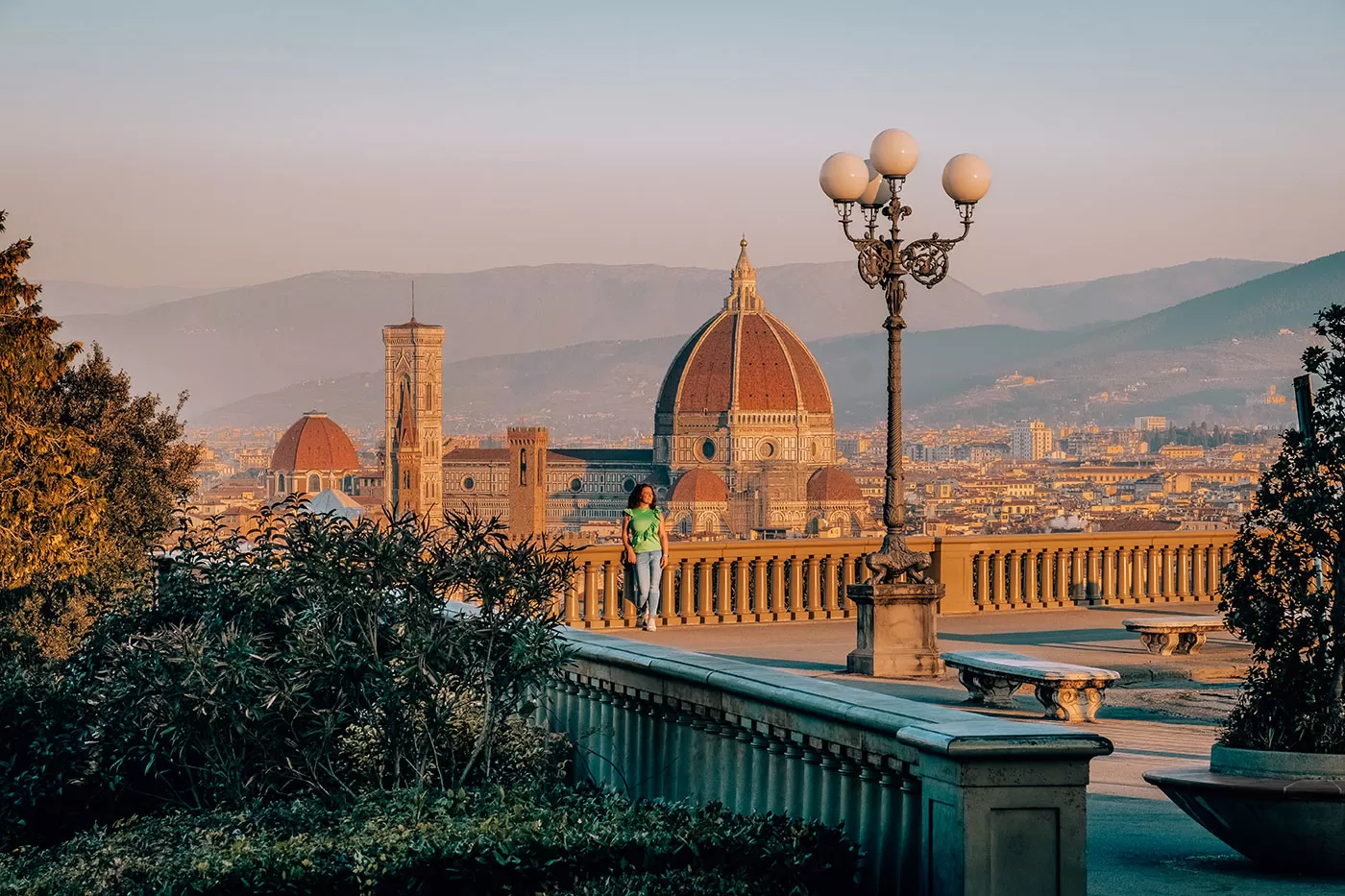
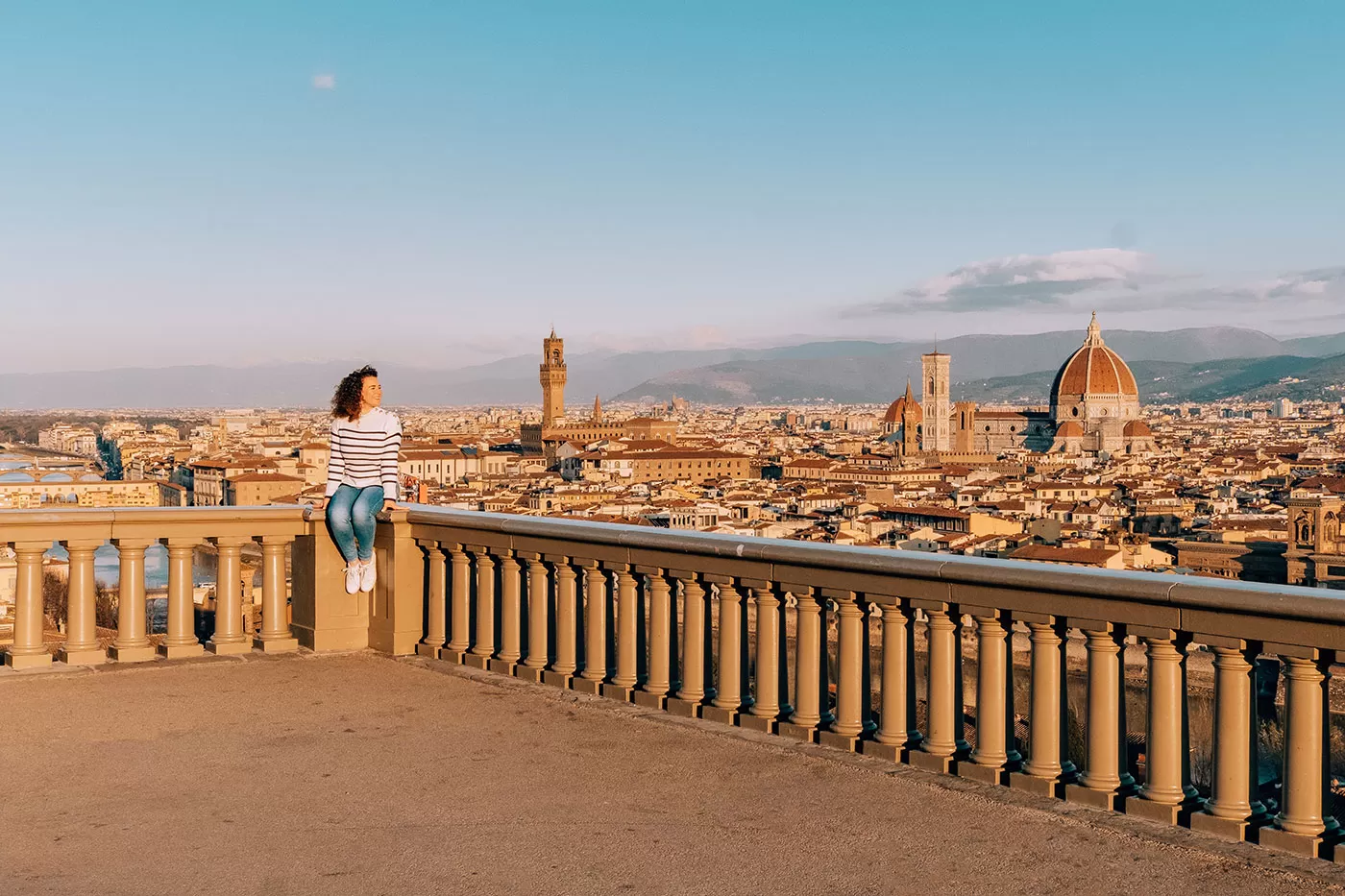 A short trip from the city centre on bus #12 (or a 30-minute walk) takes you to Piazzale Michelangelo, a favorite spot among locals and tourists alike for its striking views of Florence. This square sits on the hills on the southern side of the Arno River and is named after the Renaissance star Michelangelo (hence the beautiful bronze replica of his famous David). It was built in 1869 by architect Giuseppe Poggi as part of the urban redevelopment plan after Florence became the newly unified Italy capital in 1865. As the sun sets, people grab a drink from one of the little kiosks in the piazza and elbow their way to the best spot on the steps to take some shots of Florence in golden light. No need to worry about the crowds, though; Piazzale Michelangelo is big enough for everyone
A short trip from the city centre on bus #12 (or a 30-minute walk) takes you to Piazzale Michelangelo, a favorite spot among locals and tourists alike for its striking views of Florence. This square sits on the hills on the southern side of the Arno River and is named after the Renaissance star Michelangelo (hence the beautiful bronze replica of his famous David). It was built in 1869 by architect Giuseppe Poggi as part of the urban redevelopment plan after Florence became the newly unified Italy capital in 1865. As the sun sets, people grab a drink from one of the little kiosks in the piazza and elbow their way to the best spot on the steps to take some shots of Florence in golden light. No need to worry about the crowds, though; Piazzale Michelangelo is big enough for everyone
How to visit:
- Free entrance
- Guided tour ideas:
- This e-bike tour takes you around the historic center and Piazzale Michelangelo, too. A similar tour is available at night here
- For those who prefer four wheels or have limited mobility, this Florence by golf cart tour is ideal
15. Climb up to the San Miniato Church
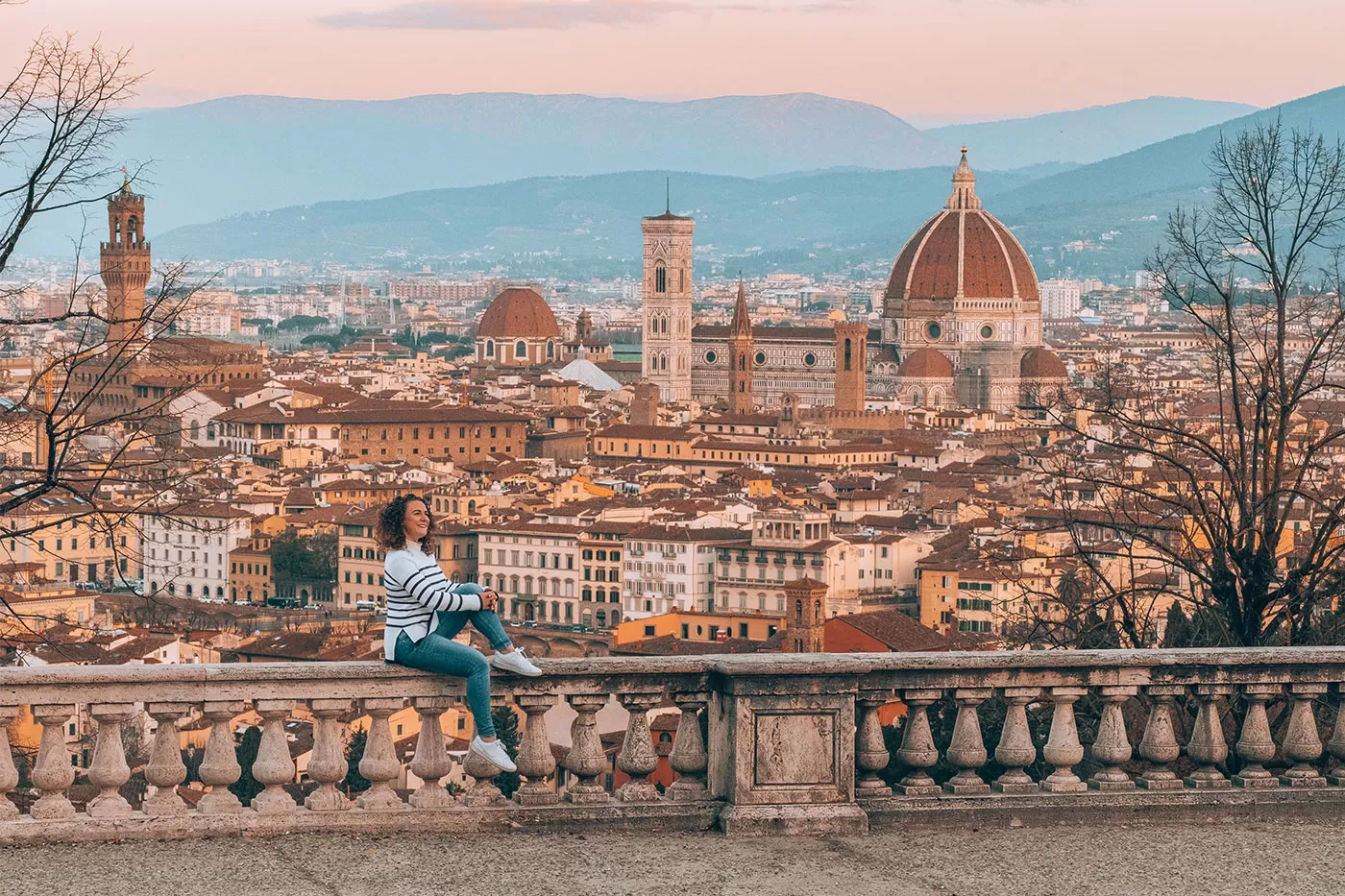
Located right above Piazzale Michelangelo, San Miniato offers even more beautiful views. Along with St John’s Baptistry, it’s one of the oldest religious buildings in Florence, over 1000 years old, and is a stunning example of Romanesque architecture. This building’s facade is a striking geometry of white and green marble, concealing beautiful frescoes, mosaics, and marble floors inside. There’s something profoundly spiritual and enigmatic about this place, amplified by the legend surrounding its name. It’s said it comes from Saint Minias, an Armenian hermit who refused to make sacrifices to Roman gods and was beheaded in Florence at the order of the Roman Emperor Decius. As the legend goes, he picked up his head and walked up to the church’s site where he died. One more reason to come here: the monks perform the Gregorian chants every day at 6:30 pm.
How to visit:
- Free entrance
- Guided tour idea: This private walking tour starts at Ponte Vecchio and takes you up into the Florentine hills for panoramic views and some artistic treasures, including Basilica San Miniato al Monte and Piazzale Michelangelo.
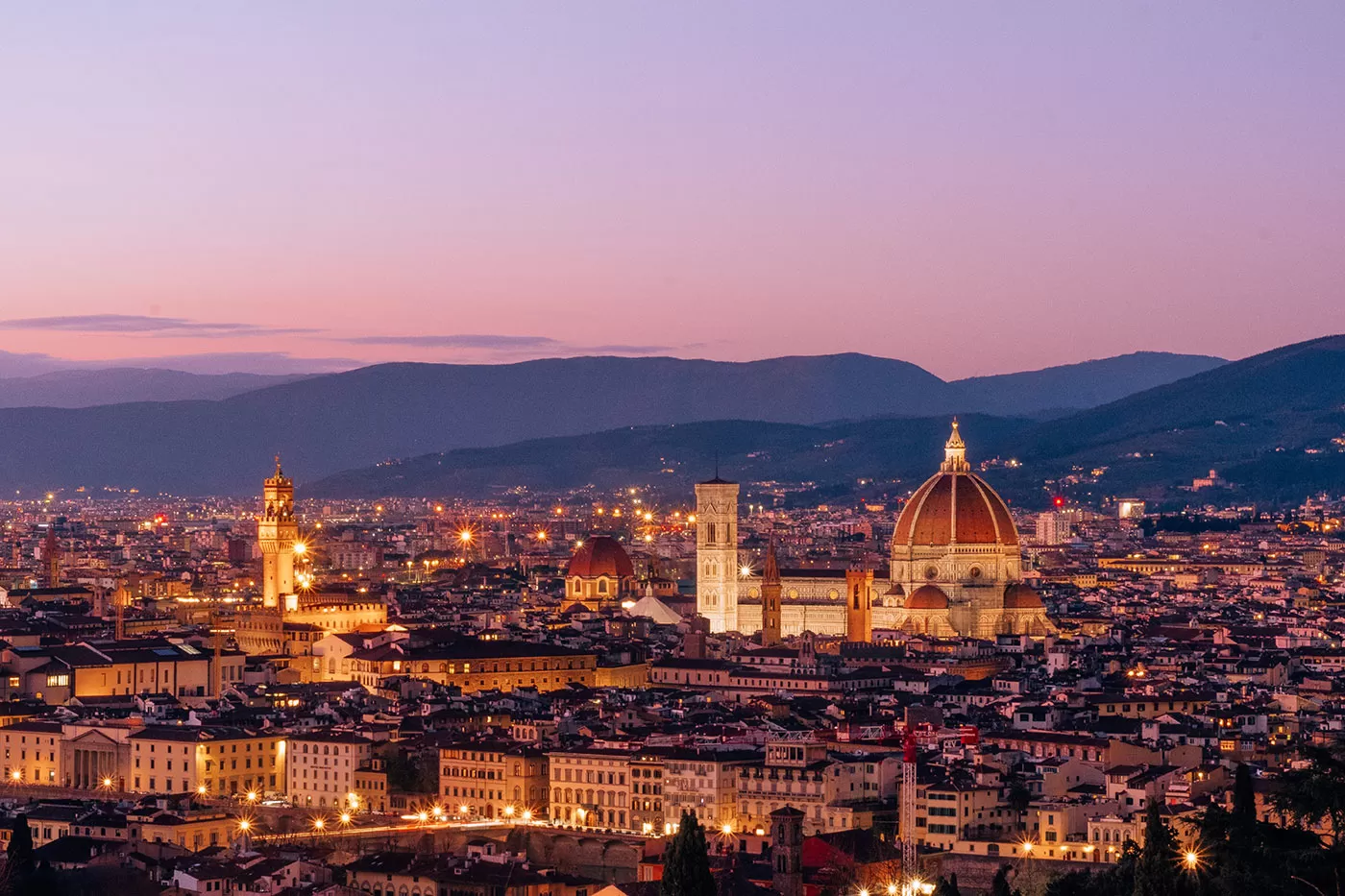
16. Delve into the art of Santa Maria Novella
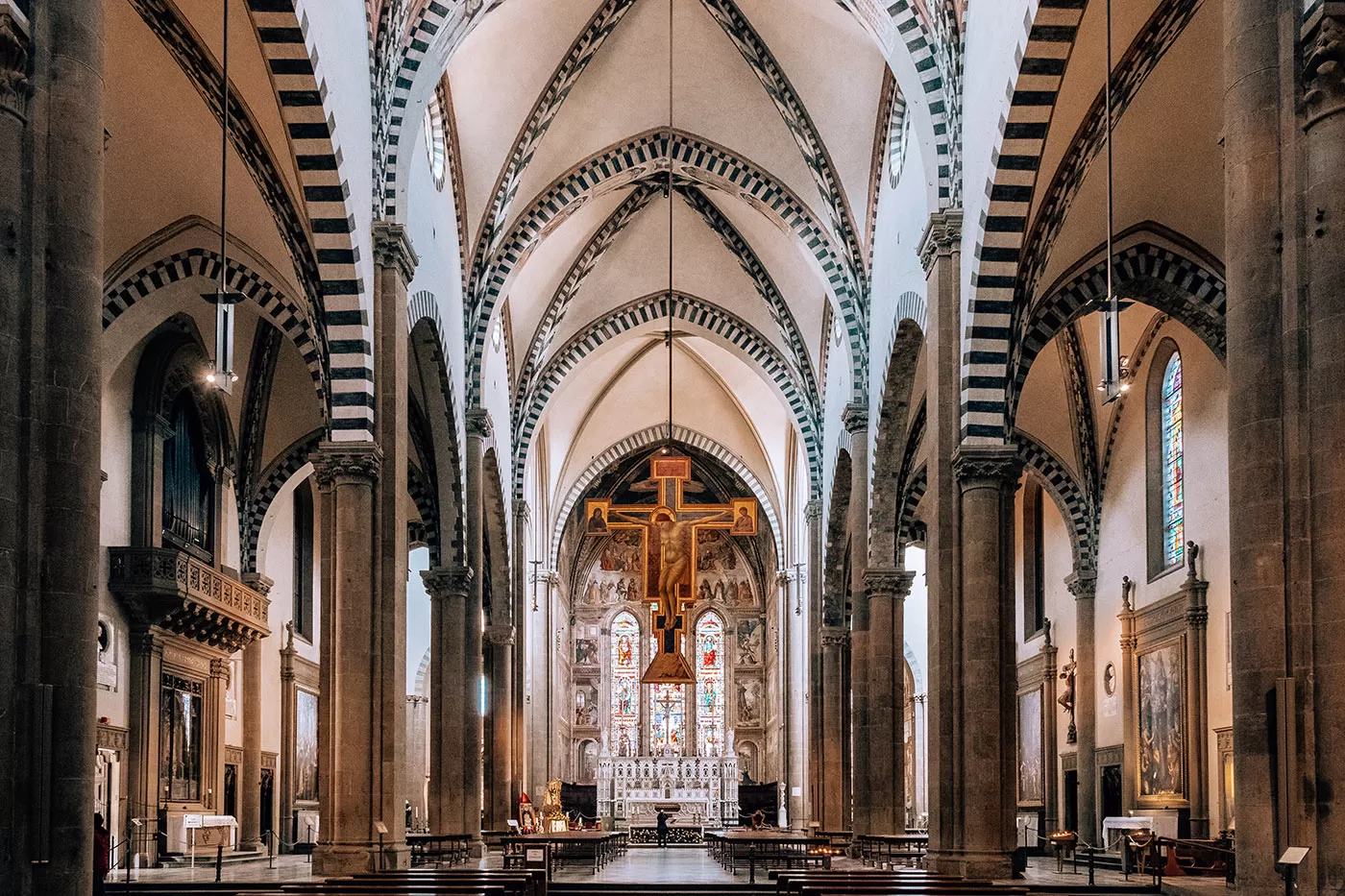 Ah, here’s another striking polychrome facade! And one that’s among the finest examples of Florentine Renaissance design. Located close to the train station, Santa Maria Novella is a beautiful church from the 13th century that played a significant role in the history of Italian art thanks to artists like Giotto, Brunelleschi, Botticelli, Masaccio, Ghirlandaio, Vasari, and Michelangelo, who have all contributed to its artistic legacy. The church is now part of a museum complex where you can see two cloisters, a chapel, and a refectory. Among the highlights are Masaccio’s Holy Trinity, a pioneering example of Renaissance perspective, and Ghirlandaio’s cycles in the Tornabuoni Chapel, which are represented with a sense of three-dimensionality.
Ah, here’s another striking polychrome facade! And one that’s among the finest examples of Florentine Renaissance design. Located close to the train station, Santa Maria Novella is a beautiful church from the 13th century that played a significant role in the history of Italian art thanks to artists like Giotto, Brunelleschi, Botticelli, Masaccio, Ghirlandaio, Vasari, and Michelangelo, who have all contributed to its artistic legacy. The church is now part of a museum complex where you can see two cloisters, a chapel, and a refectory. Among the highlights are Masaccio’s Holy Trinity, a pioneering example of Renaissance perspective, and Ghirlandaio’s cycles in the Tornabuoni Chapel, which are represented with a sense of three-dimensionality.
How to visit:
- Get your tickets here
- Guided tour idea: You’ll get a deep understanding of this church’s artistic significance on this 3-hour private tour
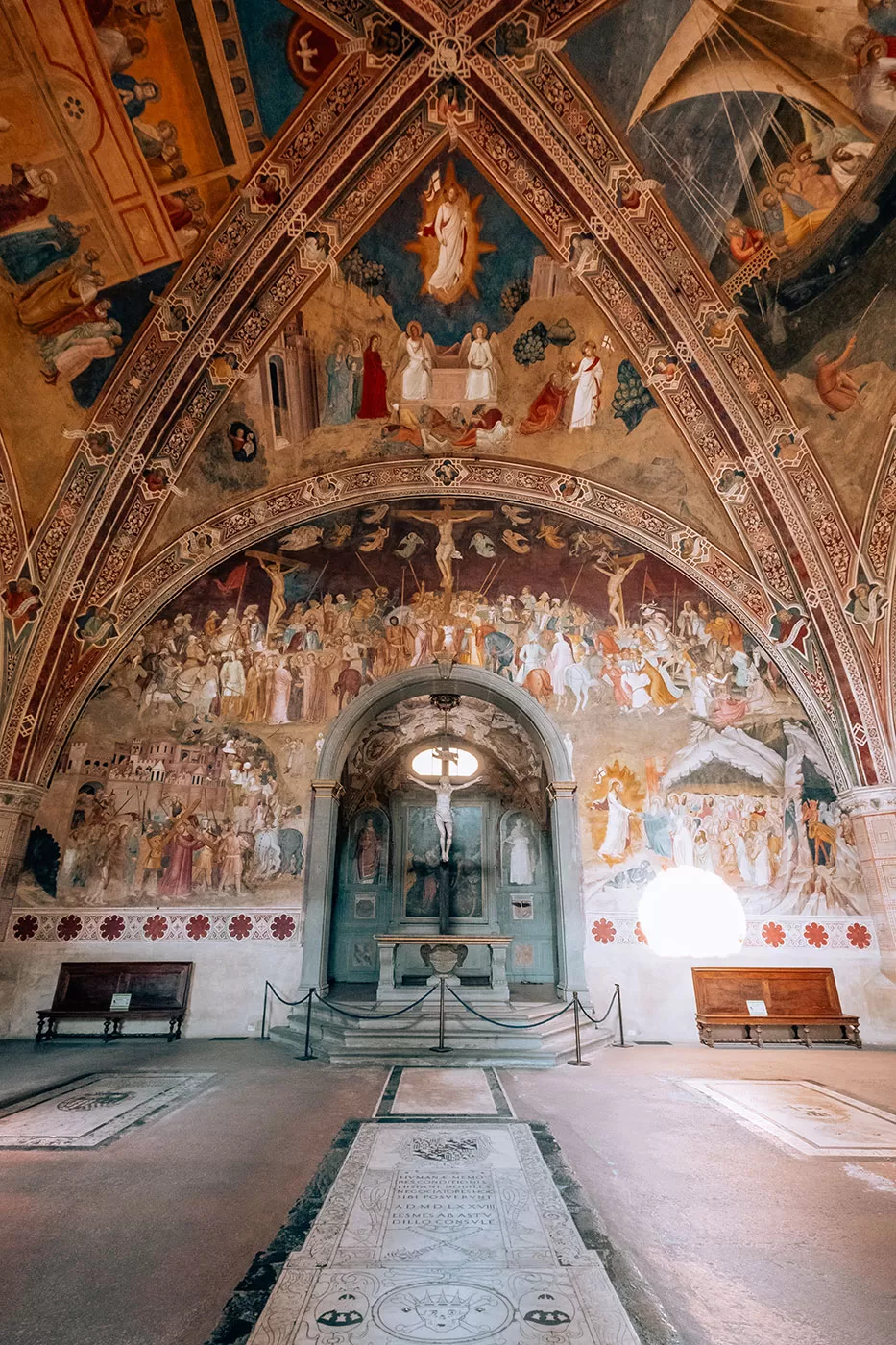
Tornabuoni Chapel
17. Visit the world’s oldest pharmacy
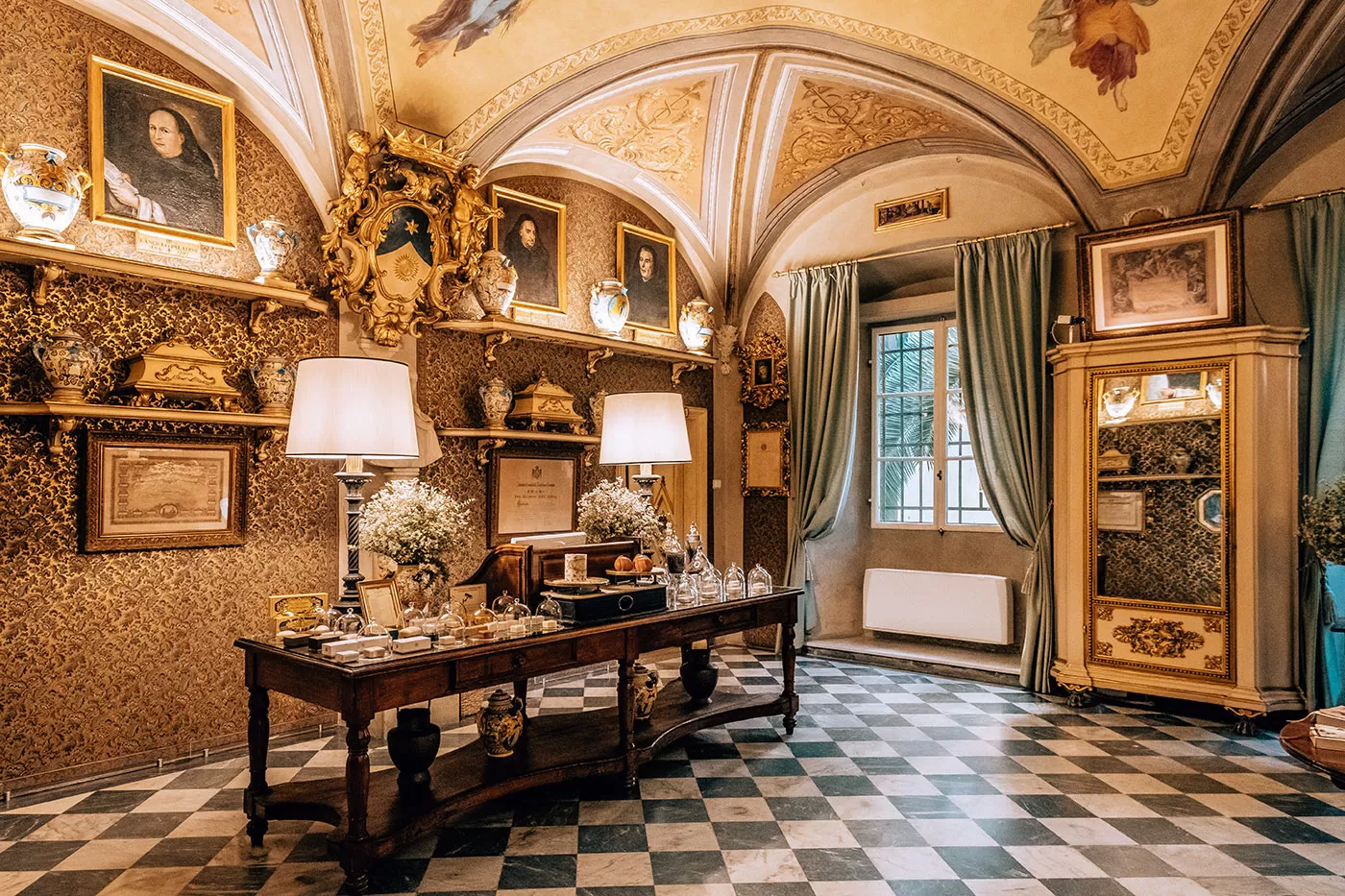
Back in the 13th century, the Dominican friars from the nearby church of Santa Maria Novella established a pharmacy to make remedies and balms from the herbs they cultivated. Fast forward eight centuries, Officina Profumo-Farmaceutica di Santa Maria Novella is still in business with products based on aromatic plants grown in its garden near Villa Petraia in Florence. The pharmacy is free to enter and you can have fun browsing unique displays of perfumes, creams and scented candles. Some must-try items include L’Iris perfume made with the flower symbol of Florence, Rose Water, which was invented in 1381, and Acqua della Regina, a citrus fragrance that was made for Catherine de Medici.
By 1381 the Dominican friars of Santa Maria Novella were selling rose water as a disinfectant, thought to be especially useful in times of plague. The friars grew their medicinal plants (simbles) in a kitchen garden nearby, distilled flowers and herbs, and prepared essences, elixirs, ointments, and balsams.
The present Pharmacy dates from 1612. It is famous all over Europe and was granted the warrant of suppliers to His Royal Highness by Grand Duke Ferdinando I. Despite suppression in the 19th century, it remained in business through the good offices of Fra Damiano Beni, and in 1866 it was rented by his nephew Cesare Augusto Stefani (whose descendants run it to this day). Attached to the Pharmacy is the 14th-century chapel of San Niccolo, with frescoes attributed to Mariotto di Nardo.
How to visit:
- Guided tour idea: This private tour shows you both the treasures of the Church of Santa Maria Novella and its ancient pharmacy
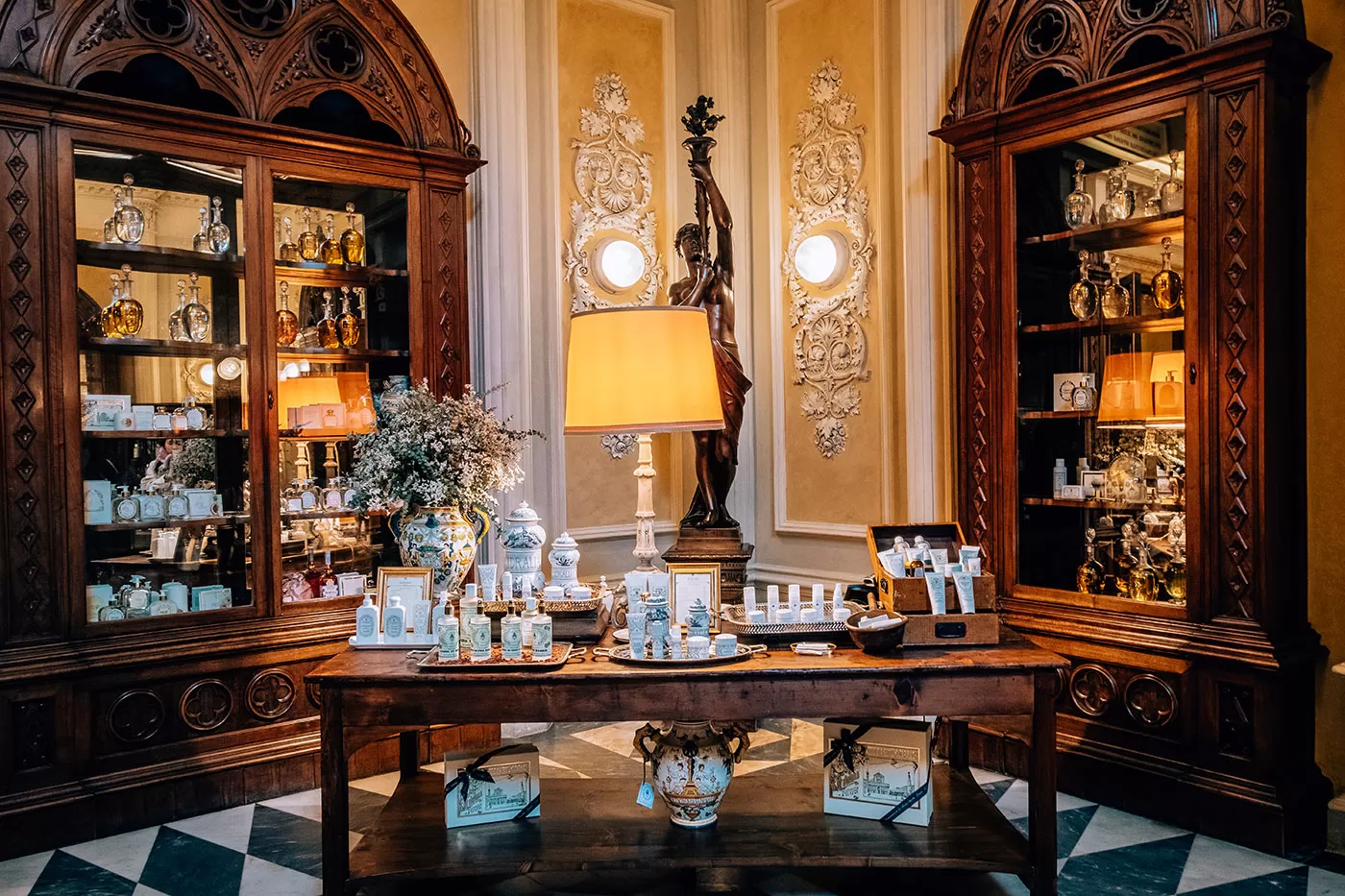
18. Explore the Santo Spirito neighborhood and its Basilica
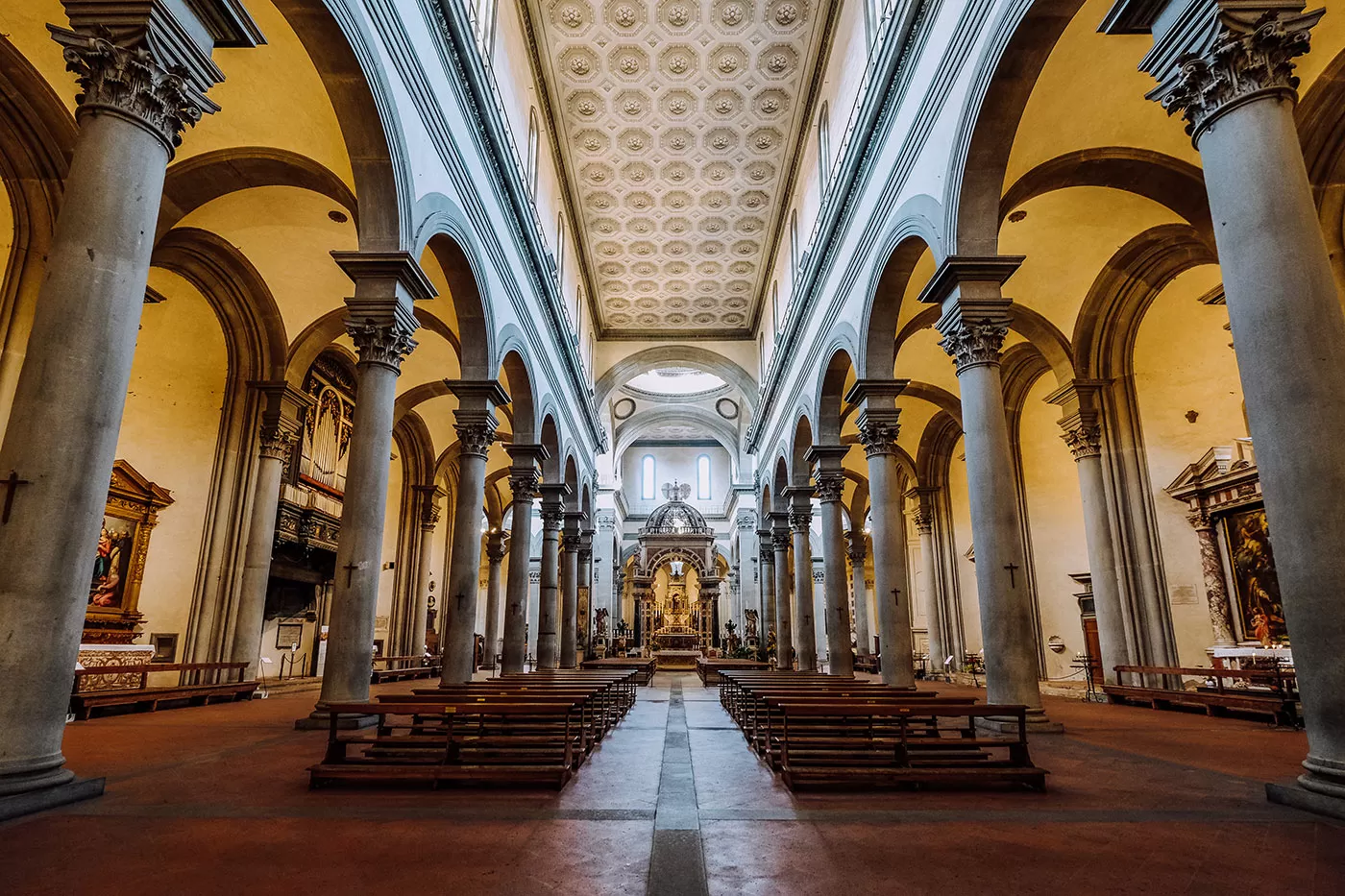
On the other side of the Arno, explore the Santo Spirito neighborhood for a taste of the real Florence. You won’t find a chain store in this charming area, which is known for its unique artisan shops and bohemian atmosphere. The heart of the neighborhood is Piazza Santo Spirito, a leafy square surrounded by quaint cafes and home to a lively daily market featuring vendors that sell everything from fresh produce to vintage clothing. A grand basilica overlooks the square, with a facade that may not grab your attention right away, but don’t be fooled – it houses the crucifix Michelangelo created when he was just 17, along with significant works by Perugino and Lippi. Plus, it was designed by Brunelleschi.
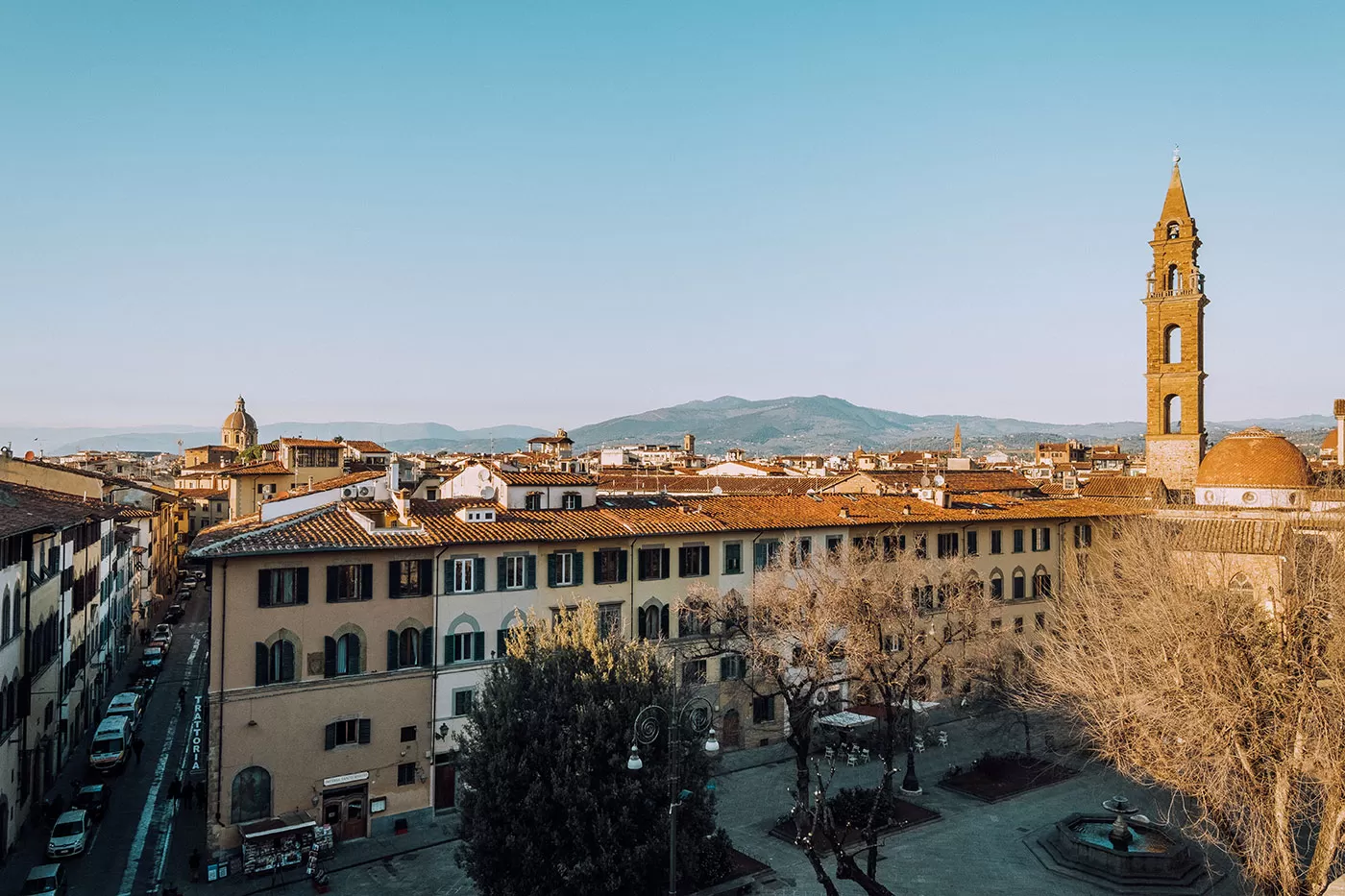
19. Take a cruise aboard a Florentine Gondola
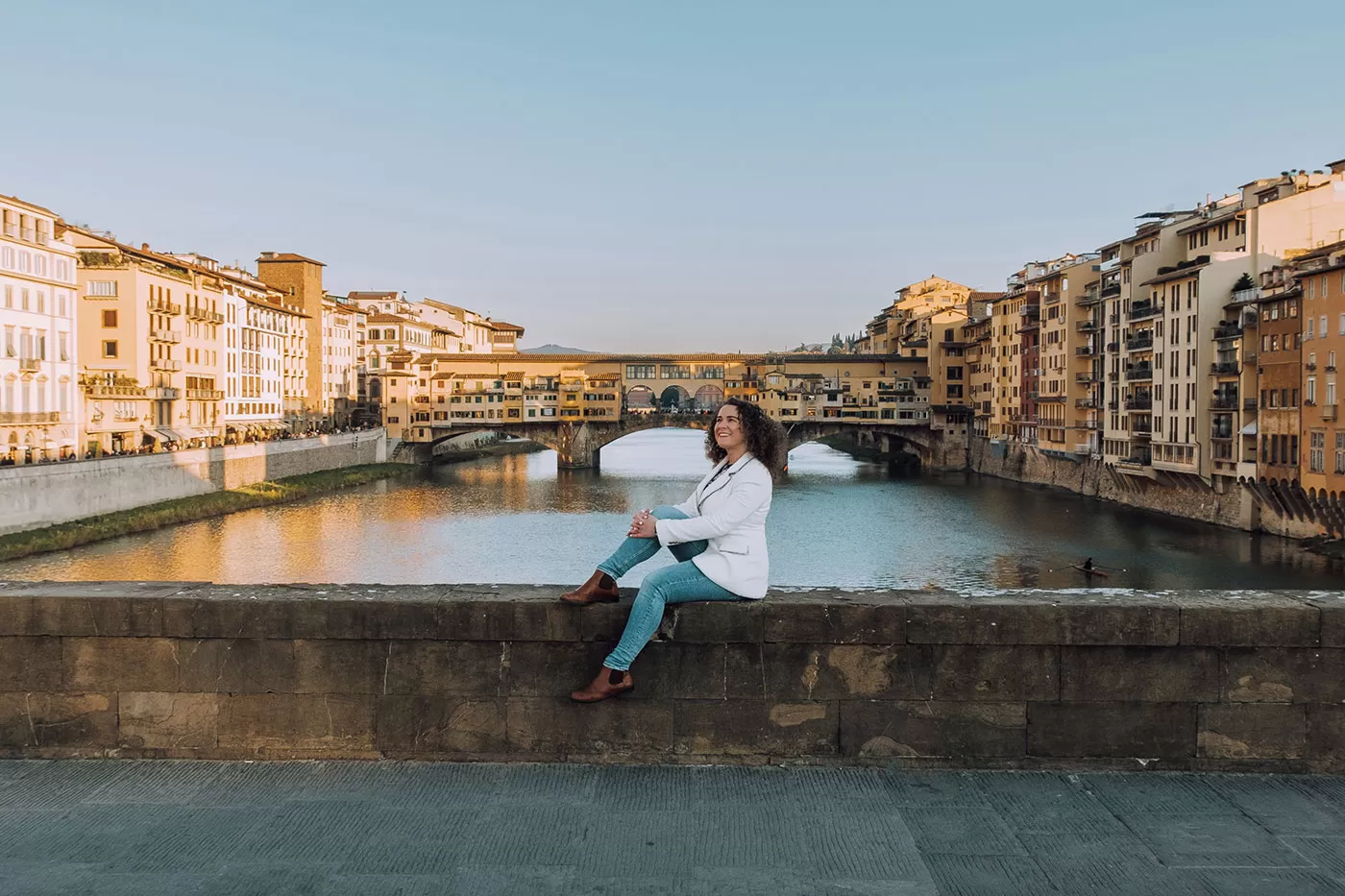 Did you know that Florence, too, has its own gondolas? From May to September, you can cruise the Arno aboard a barchetto, the traditional flat-bottomed boat operated by the Renaioli. These used to be sand diggers that extracted sand and gravel from the Arno river bed for construction use. Having lost their jobs after World War II, they refitted their boats and started offering river cruises to eager travellers. The excursion lasts about 45 minutes and offers privileged views of the magnificent palaces lining both sides of the Arno and a unique perspective on the city’s famous bridge – Ponte Vecchio. This is just one of the many unique things to do in Florence.
Did you know that Florence, too, has its own gondolas? From May to September, you can cruise the Arno aboard a barchetto, the traditional flat-bottomed boat operated by the Renaioli. These used to be sand diggers that extracted sand and gravel from the Arno river bed for construction use. Having lost their jobs after World War II, they refitted their boats and started offering river cruises to eager travellers. The excursion lasts about 45 minutes and offers privileged views of the magnificent palaces lining both sides of the Arno and a unique perspective on the city’s famous bridge – Ponte Vecchio. This is just one of the many unique things to do in Florence.
How to take a cruise:
- Book your spot on the boat here
- Guided tour idea: This 2-hour tour allows for a more private experience and you’ll get a tasty schiacciata and some Tuscan wine
20. Visit Palazzo Medici Riccardi – the Medici’s first family home
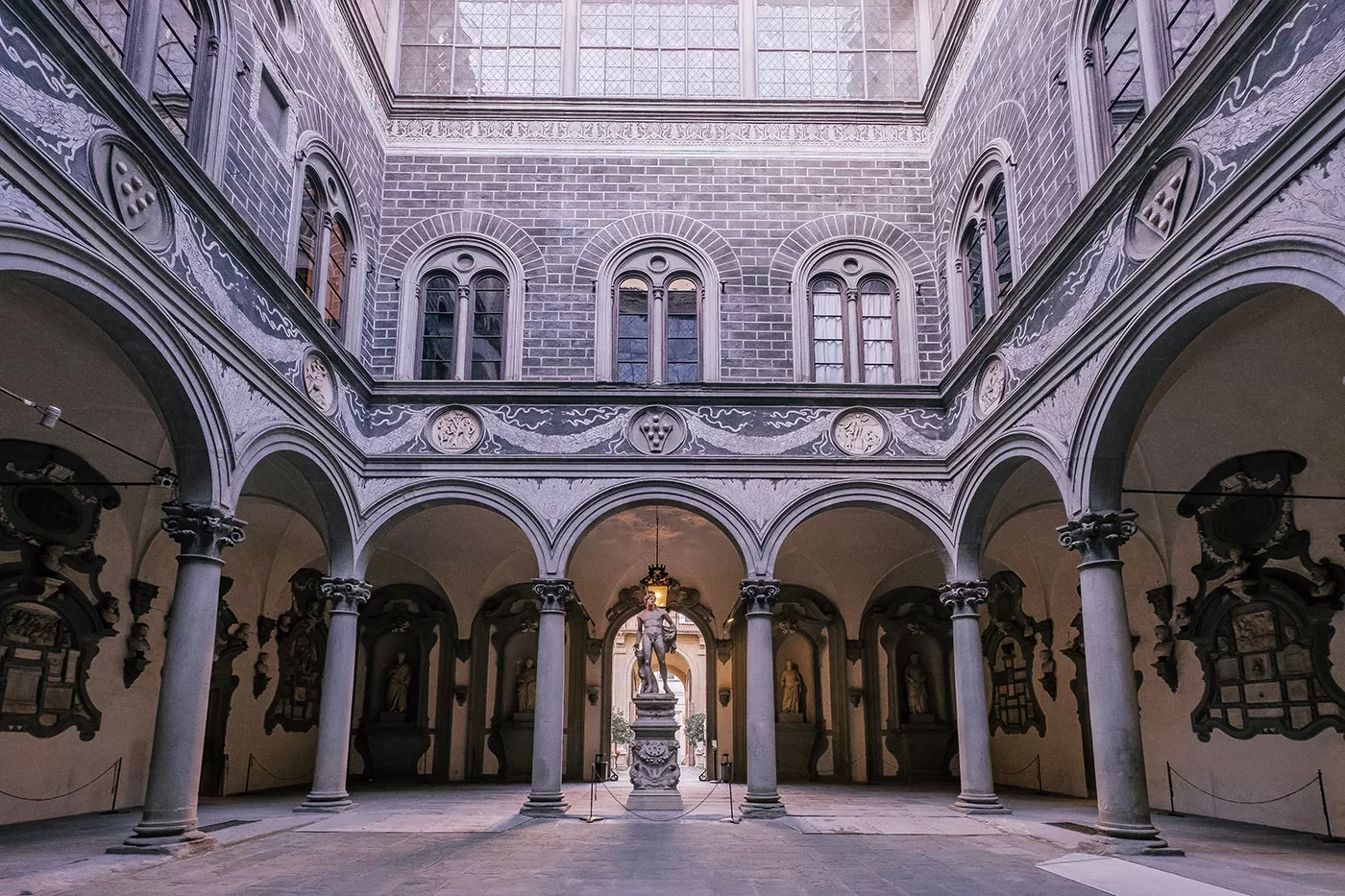
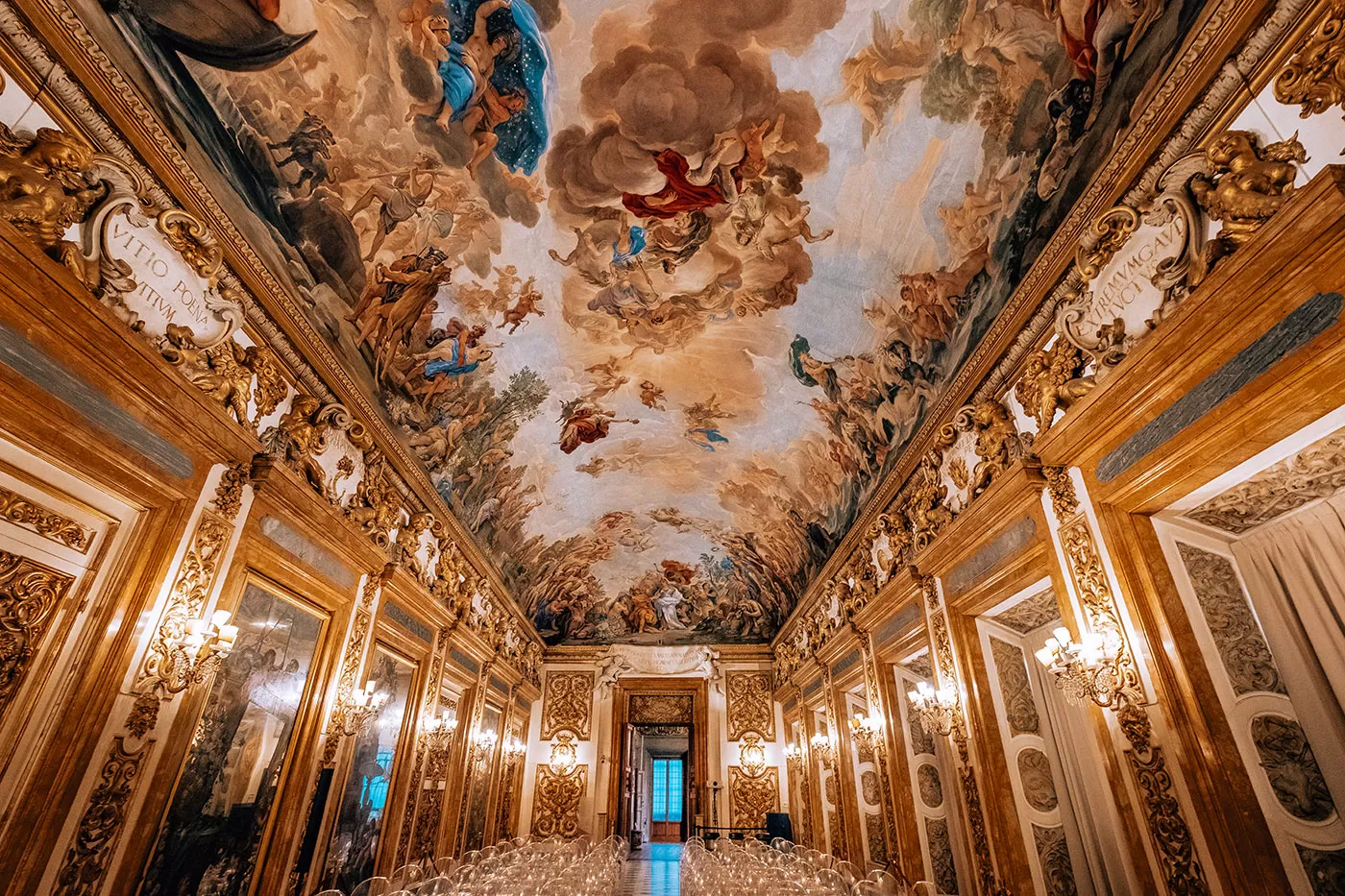 It’s no secret that the Medici family lived in a few different homes in Florence, including Palazzo Vecchio and Pitti Palace. But there’s another Medici home that’s just as interesting but often remains unnoticed. This is the Palazzo Medici Riccardi, near the Basilica of San Lorenzo, Cosimo the Elder, and Lorenzo the Magnificent’s first home. Built in 1444, it set the model for Renaissance civil architecture. Inside, you can find two spectacular treasures: the Procession of the Magi by Benozzo Gozzoli in the family’s private chapel, which depicts the Medici family and other prominent figures of the time, and the Luca Giordano Gallery, a Baroque jewel that was added at a later stage and pays tribute to the accomplishments of the Medici clan during their rule.
It’s no secret that the Medici family lived in a few different homes in Florence, including Palazzo Vecchio and Pitti Palace. But there’s another Medici home that’s just as interesting but often remains unnoticed. This is the Palazzo Medici Riccardi, near the Basilica of San Lorenzo, Cosimo the Elder, and Lorenzo the Magnificent’s first home. Built in 1444, it set the model for Renaissance civil architecture. Inside, you can find two spectacular treasures: the Procession of the Magi by Benozzo Gozzoli in the family’s private chapel, which depicts the Medici family and other prominent figures of the time, and the Luca Giordano Gallery, a Baroque jewel that was added at a later stage and pays tribute to the accomplishments of the Medici clan during their rule.
How to visit: Tickets must be purchased on-site.
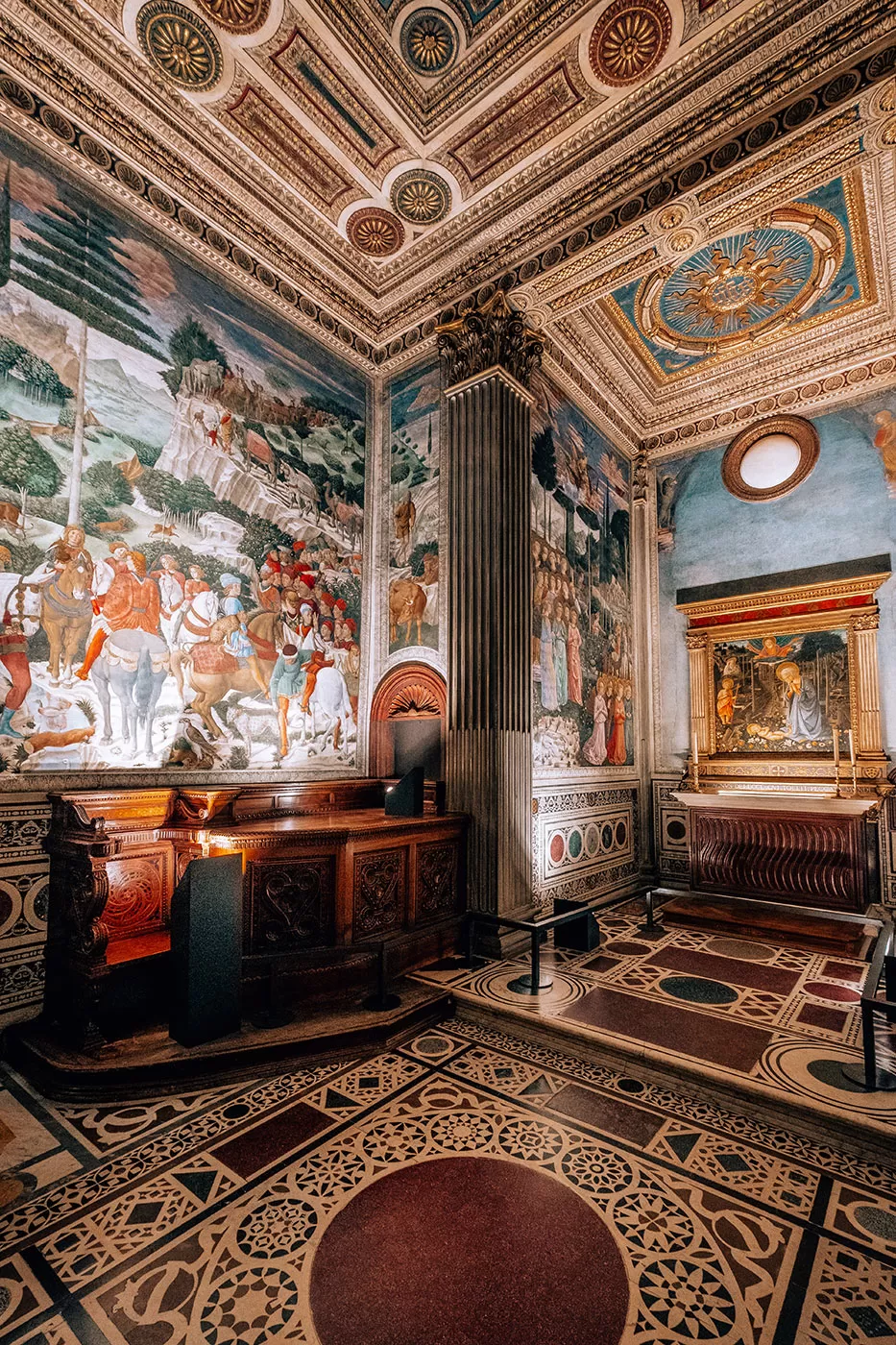
Cappella dei Magi
21. Visit Basilica of San Lorenzo – Florence’s oldest cathedral
Within the busy city center of Florence lies a remarkable religious building with a rustic look that stands out among the other churches. It’s the Basilica of San Lorenzo, the city’s oldest cathedral dating back 1600 years. Saint Ambrose consecrated it in Easter 393 and it served as the main church for three centuries before the current one took over. The Medici family also used it as their parish church, commissioning art pieces that can still be seen inside and includes works by Bronzino, Donatello, and Michelangelo. The church is part of a larger monastic complex that includes Michelangelo’s Laurentian Library and the Medici Chapels (which require a separate ticket. Booking in advance is essential).
How to visit: Tickets to the cathedral must be purchased on-site.
22. See the breathtaking Medici Chapels (Cappelle Medicee)
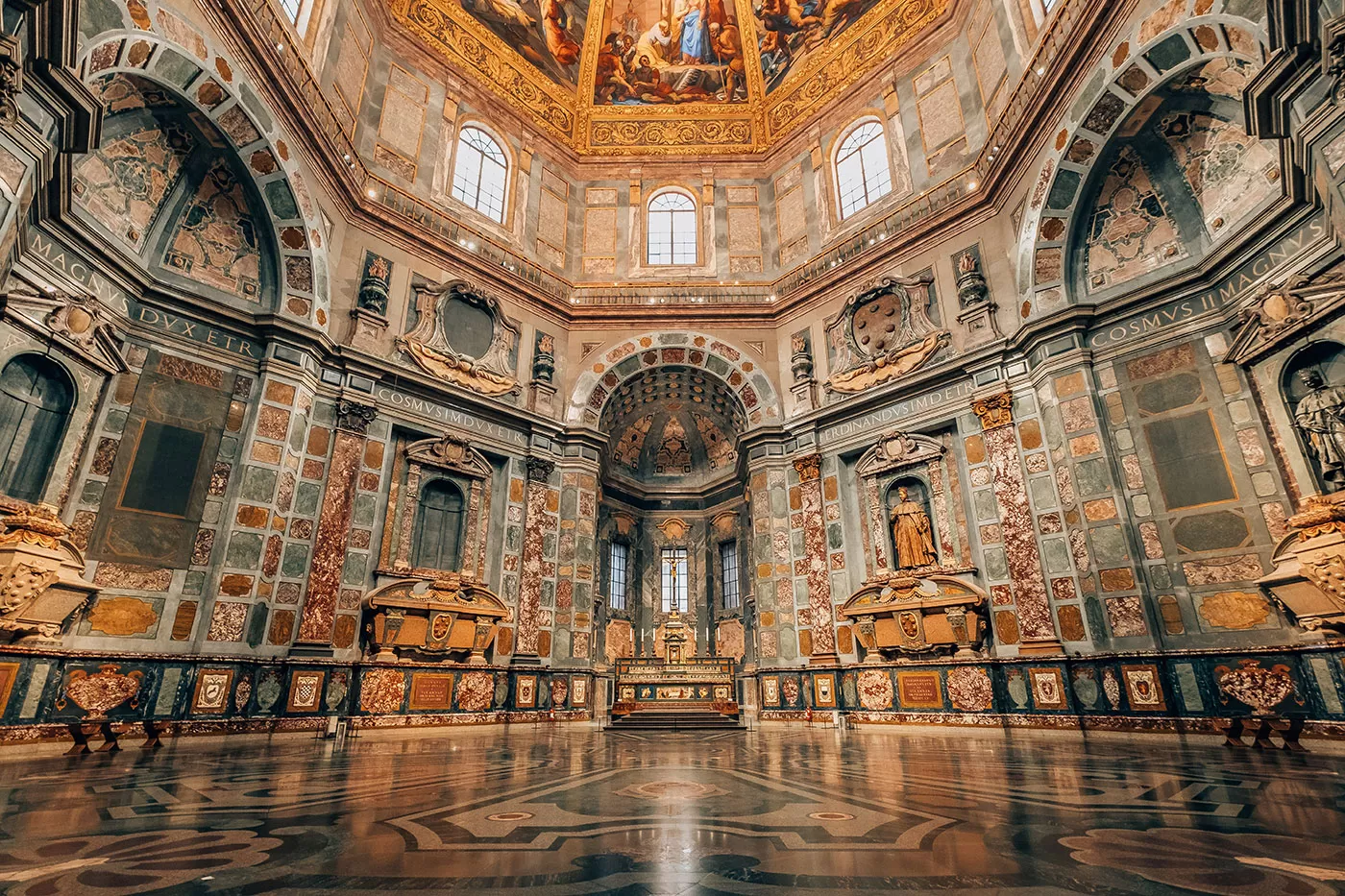 What should we expect from the final resting place of an art-loving family? A sight to behold, of course! The Basilica of San Lorenzo is the home of the Medici Chapels, designed by none other than Michelangelo and Brunelleschi. The crypt houses the remains and tombs of the grand dukes and exhibits precious reliquaries commissioned by the Medicis between the 15th and 18th centuries. A flight of stairs then leads you to the Chapel of the Princes, a stunning mausoleum with polychrome marble and a beautiful frescoed dome that’s a testament to the Medici’s wealth and power. The last stop is the New Sacristy designed by Michelangelo, with a unique study of lighting and breathtaking sculptures.
What should we expect from the final resting place of an art-loving family? A sight to behold, of course! The Basilica of San Lorenzo is the home of the Medici Chapels, designed by none other than Michelangelo and Brunelleschi. The crypt houses the remains and tombs of the grand dukes and exhibits precious reliquaries commissioned by the Medicis between the 15th and 18th centuries. A flight of stairs then leads you to the Chapel of the Princes, a stunning mausoleum with polychrome marble and a beautiful frescoed dome that’s a testament to the Medici’s wealth and power. The last stop is the New Sacristy designed by Michelangelo, with a unique study of lighting and breathtaking sculptures.
Guided tour idea: This 2-hour private tour takes you inside the fascinating chapels and then around the San Lorenzo neighborhood.
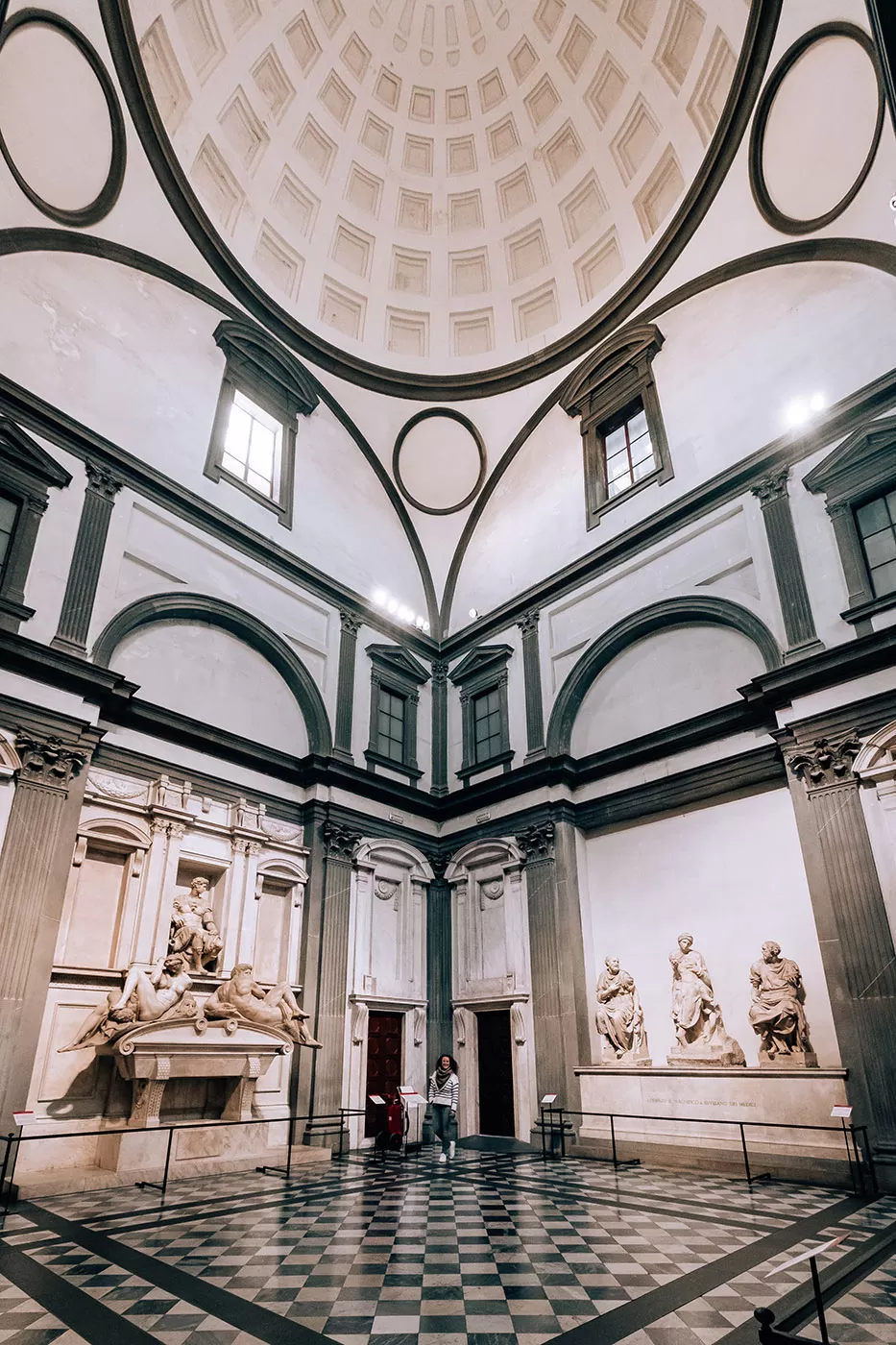
23. Visit Piazza della Repubblica – the centre of Florence
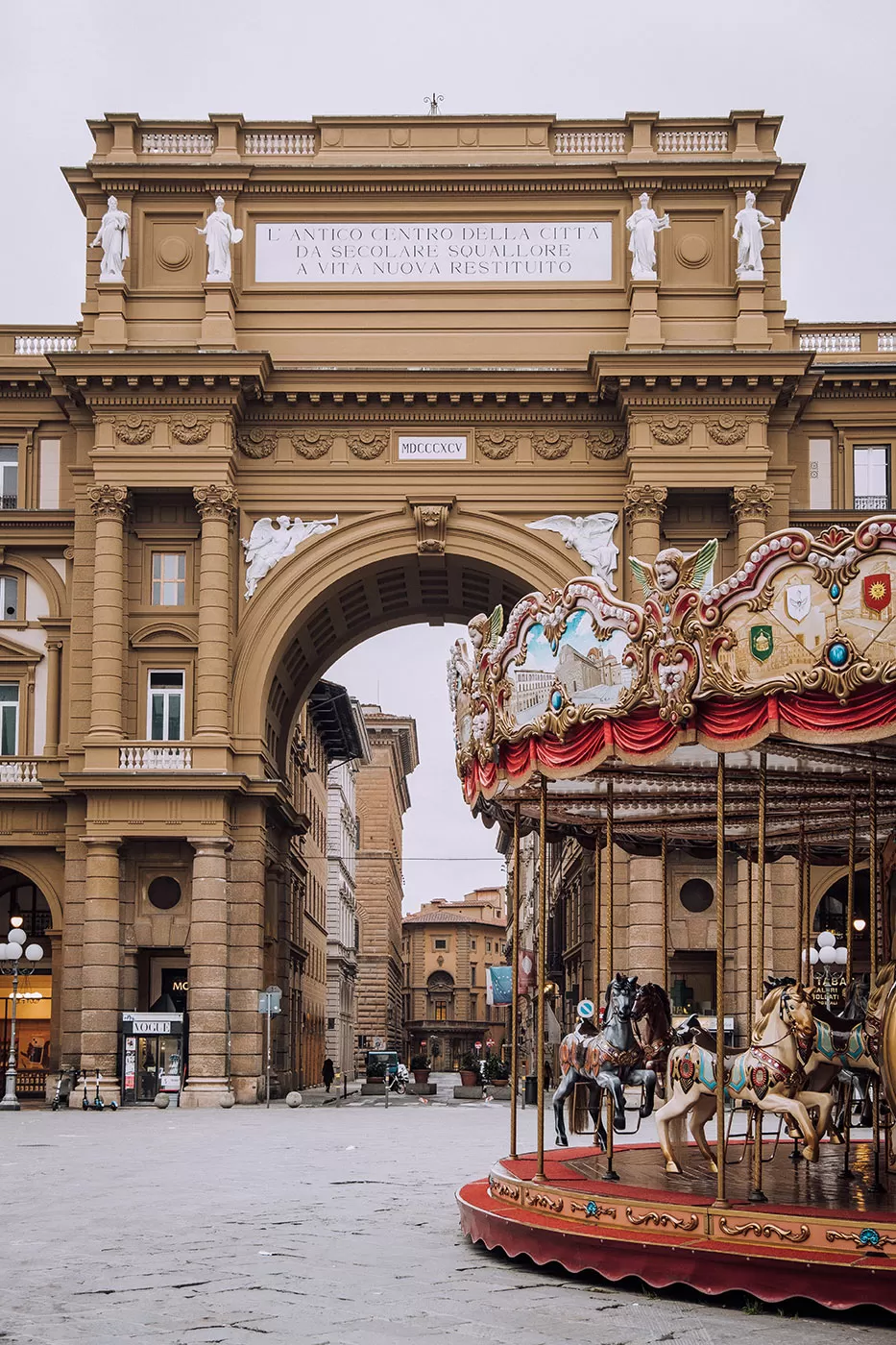
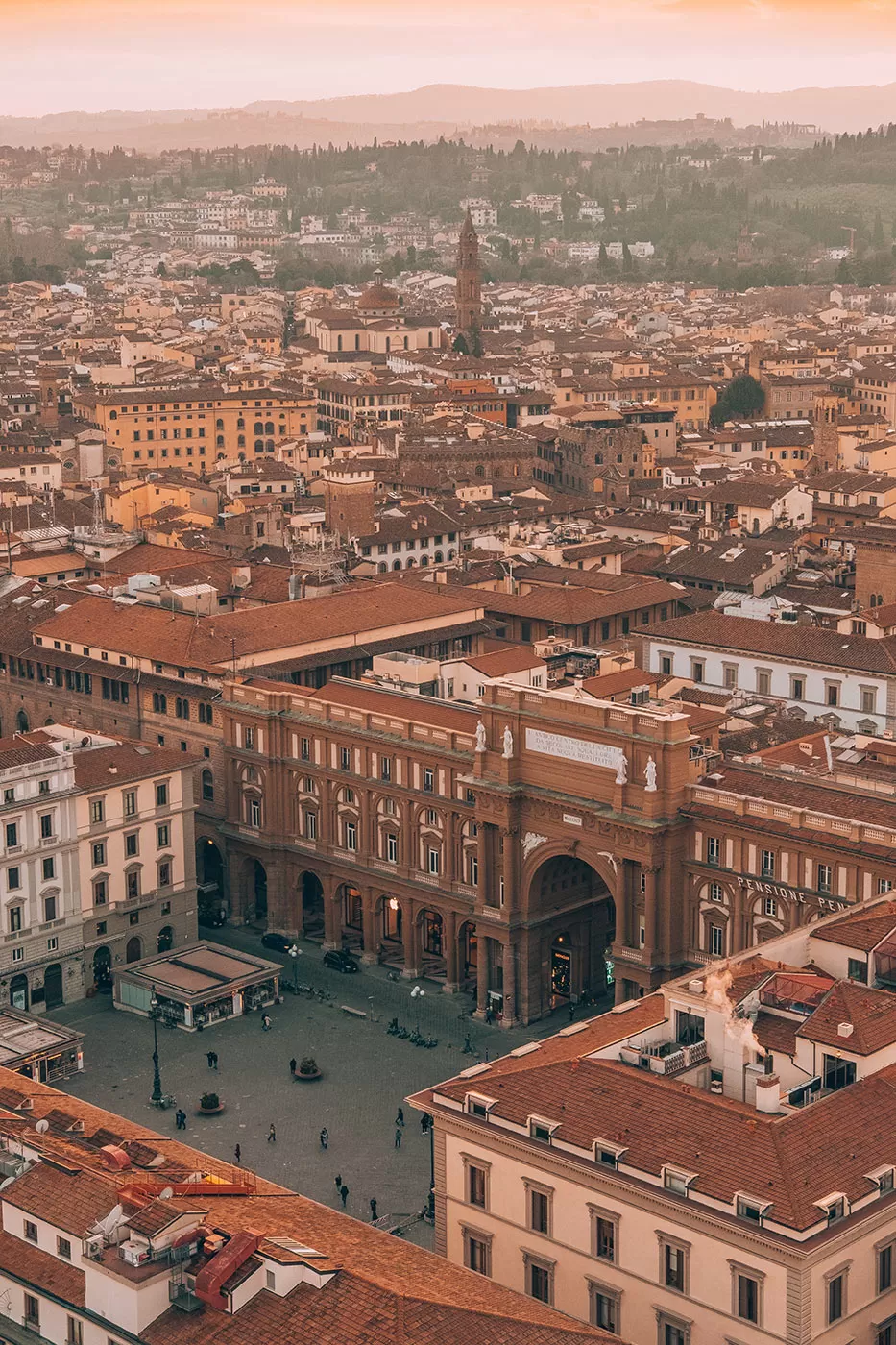 Piazza della Repubblica was where Florence was founded by the Romans as a military camp in 59 BC, marking the site of the Roman forum and centre of the Roman city.
Piazza della Repubblica was where Florence was founded by the Romans as a military camp in 59 BC, marking the site of the Roman forum and centre of the Roman city.
As with all Roman military camps, they built two roads, one running north to south, the other east to west. The Colonna dell’Abbondanza in the piazza marks the eaxct intersection of these two roads. A cardo was a north–south street (now via Roma and via Calimala) and a decumanus was an east–west-oriented road (now via degli Strozzi, via degli Speziali, and via del Corso).
From here the Romans would build additional roads perpendicular to the original two roads, creating a perfect grid system. If you look at a map of Florence today, you will see what was built by the Romans and what was built in the Middle Ages where all the roads ran in various directions.
In the Middle Ages, this area was a food market and by the 18th century a ghetto was established nearby by Cosimo I de’ Medici in 1750. In an attempt to clean up this Medieval-looking city, the city walls were taken down and all traces of history in this area were swept away during improvement works when Florence was the capital of a reunited Italy.
While many disapproved of the demolition of such history, there is a large inscription that reads, the antique city centre, after centuries of squalor, has regained a new life. (l’antico centro della città da secolare squallore a vita nuova restituito).
Today, this lively piazza is home to talented street performers and musicians as well as a local meeting point for Florentines who meet at the central column.
24. Spot the Medieval Towers – hidden in plain sight
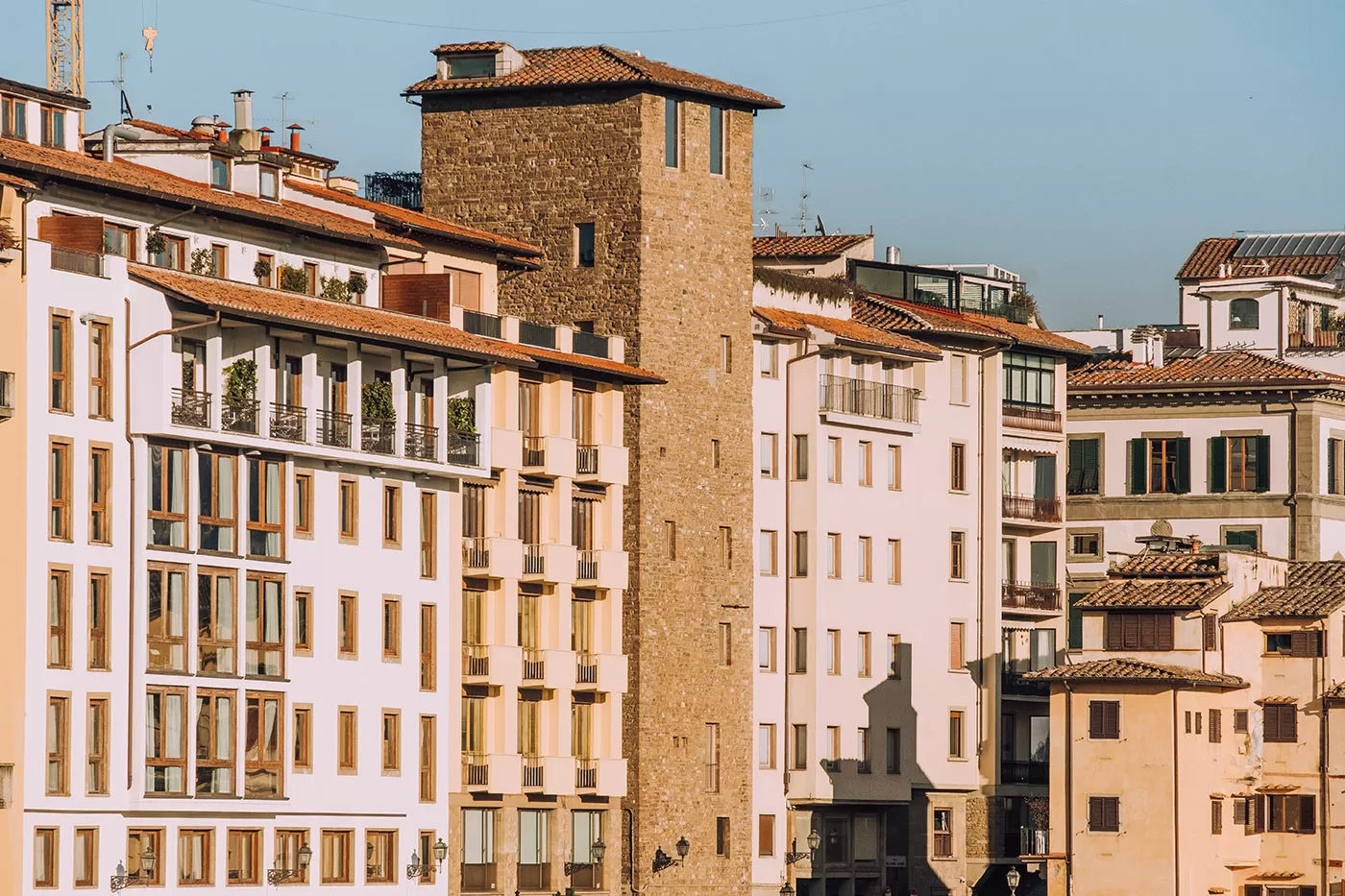 As you explore Florence don’t forget to look up and spot the remains of numerous towers. Originally, most of these were much taller than they are today. They belonged to Noble families who had their palaces in the countryside but who bought houses in Florence between the 1100-1200s when the city started to experience its economic boom. These houses were like fortresses with towers that also acted like status symbols – the taller the tower, the more powerful and important the family.
As you explore Florence don’t forget to look up and spot the remains of numerous towers. Originally, most of these were much taller than they are today. They belonged to Noble families who had their palaces in the countryside but who bought houses in Florence between the 1100-1200s when the city started to experience its economic boom. These houses were like fortresses with towers that also acted like status symbols – the taller the tower, the more powerful and important the family.
By the early 1200s, there is a real civil war between the two factions: Guelphs (who supported the Pope) and the Ghibellines (who supported the Holy Roman Emperor) which lasts for an entire century. The towers were used for protection when families were fighting each other for power.
While real battles were happening on the street, you used your tower for protection. There was no street access to your tower, entrance was only via your residence. On these towers, you’ll notice that there are small openings with a stone shelf. These were used to create wooden balconies where soldiers could protect the tower with crossbows, lances, or pots of boiling oil on the enemy.
In addition, they could also use these openings to build bridges to link towers with those of their allies who lived closed and avoid the dangers at street level.
Over time, your allies might become your enemies which is how we get the idiomatic expression ‘to burn bridges’ or ‘cut ties’ which in Italian is ‘tagliare i ponti‘ (cut bridges). There are said to have been around 150 towers in the city, standing up to 200ft high – a completely different skyline from what we see today.
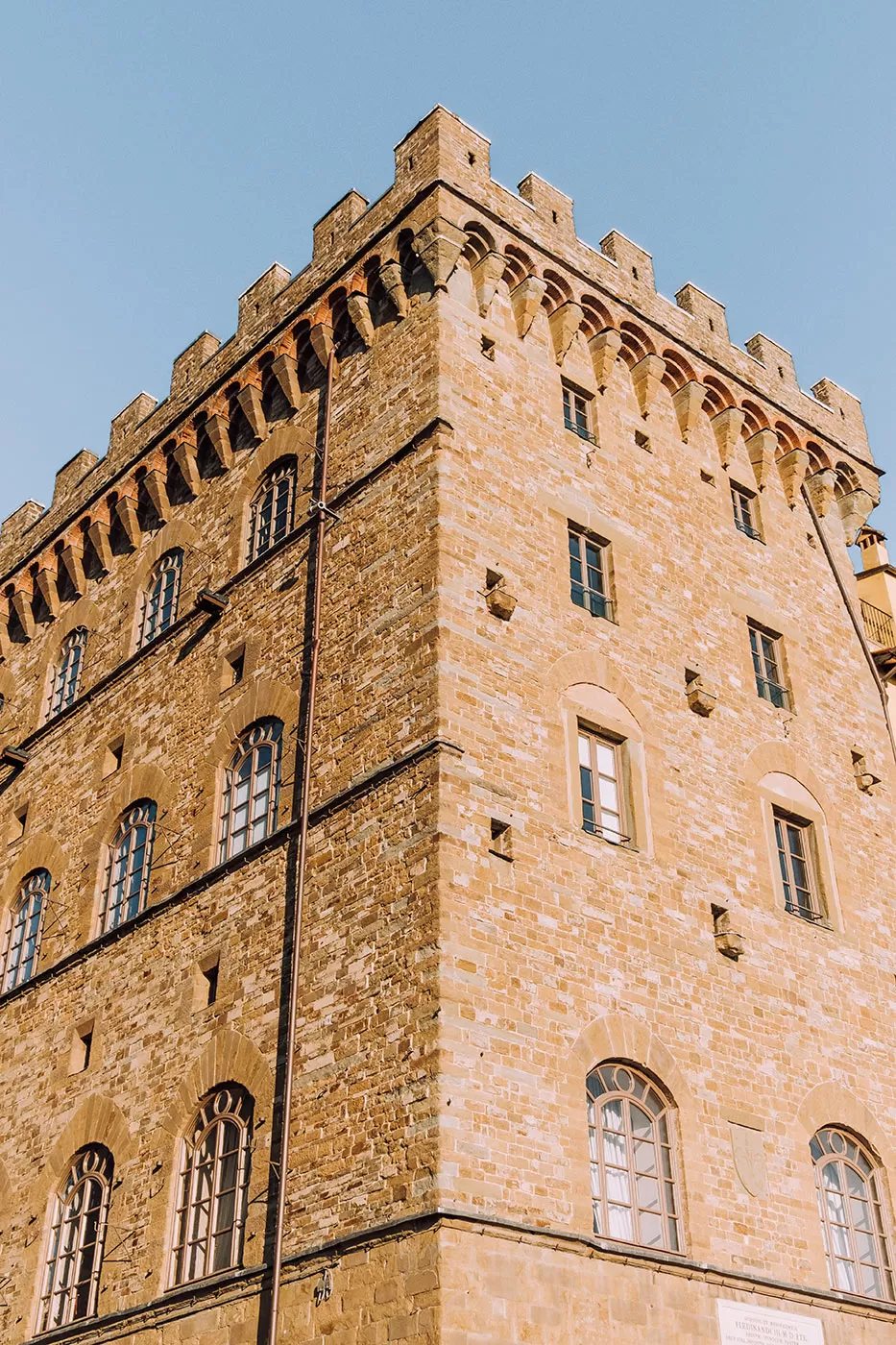
25. Grab a refreshing gelato in the city that invented it!
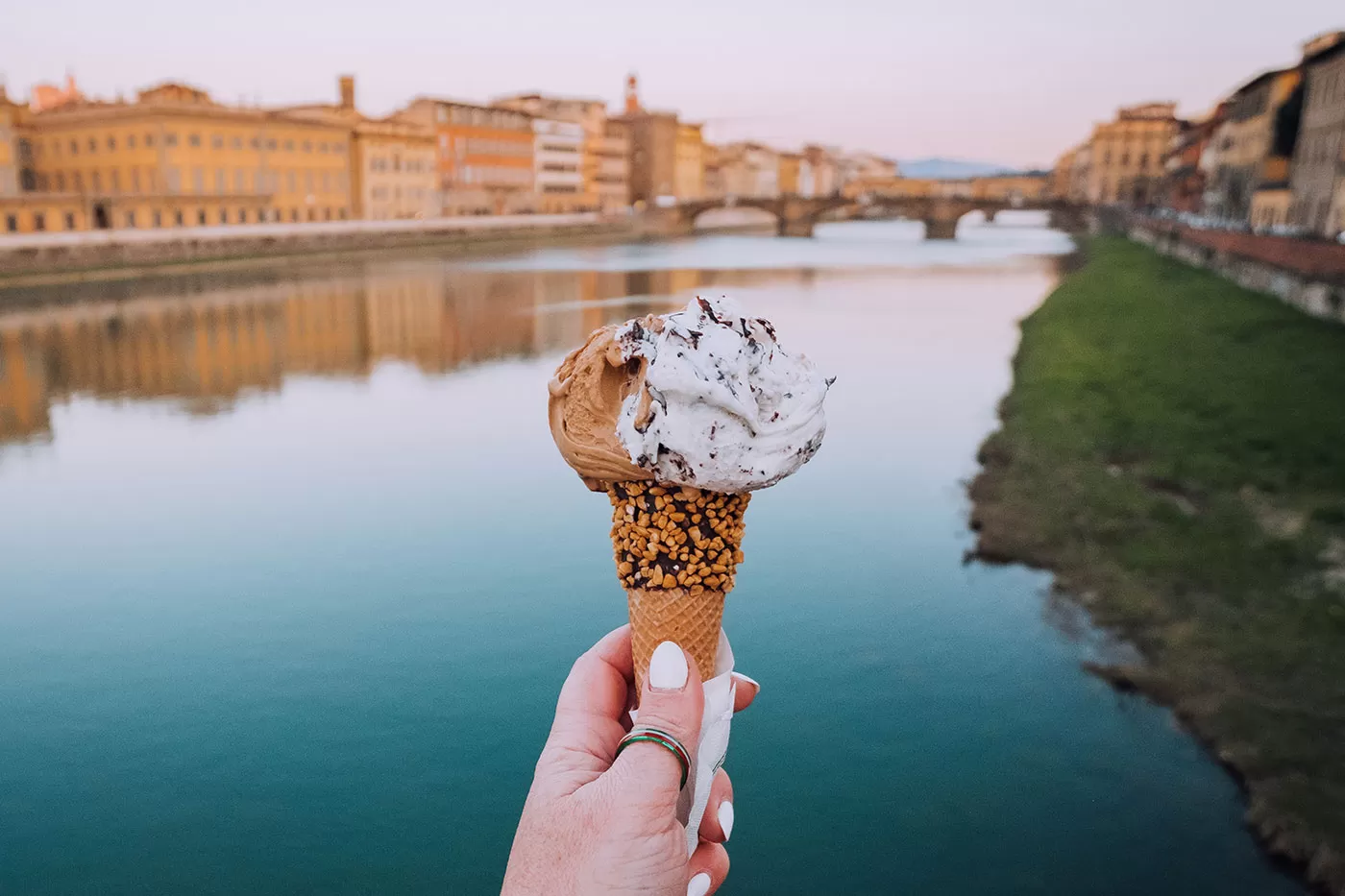 In Italy, gelato is more than just a summer cooler, it’s a favorite sweet treat year-round. And guess what? Florence might have invented it! The story goes that two Florentines brought gelato to our tables: Cosimo Ruggieri and Bernardo Buontalenti. Cosimo won a competition organized by the Medici with his frozen dessert and later accompanied Catherine de’ Medici to Paris when she married the future King of France to showcase Italian culinary superiority. Buontalenti, on the other hand, came up with the idea of a dessert very similar to the gelato we eat today while preparing celebrations for Spanish guests at the Florentine court. No matter its origin, eating gelato in Florence is a must and the city boasts numerous excellent gelaterias. One of the best is La Carraia, a family-run shop offering a wide range of flavors, from classic chocolate and pistachio to creative options like cream with orange sauce and dark chocolate or ricotta cheese with pear.
In Italy, gelato is more than just a summer cooler, it’s a favorite sweet treat year-round. And guess what? Florence might have invented it! The story goes that two Florentines brought gelato to our tables: Cosimo Ruggieri and Bernardo Buontalenti. Cosimo won a competition organized by the Medici with his frozen dessert and later accompanied Catherine de’ Medici to Paris when she married the future King of France to showcase Italian culinary superiority. Buontalenti, on the other hand, came up with the idea of a dessert very similar to the gelato we eat today while preparing celebrations for Spanish guests at the Florentine court. No matter its origin, eating gelato in Florence is a must and the city boasts numerous excellent gelaterias. One of the best is La Carraia, a family-run shop offering a wide range of flavors, from classic chocolate and pistachio to creative options like cream with orange sauce and dark chocolate or ricotta cheese with pear.
If you’re on a sweet mission to taste all the great gelato in town, don’t miss my complete guide to the best gelato in Florence.
26. Go shopping for leather goods
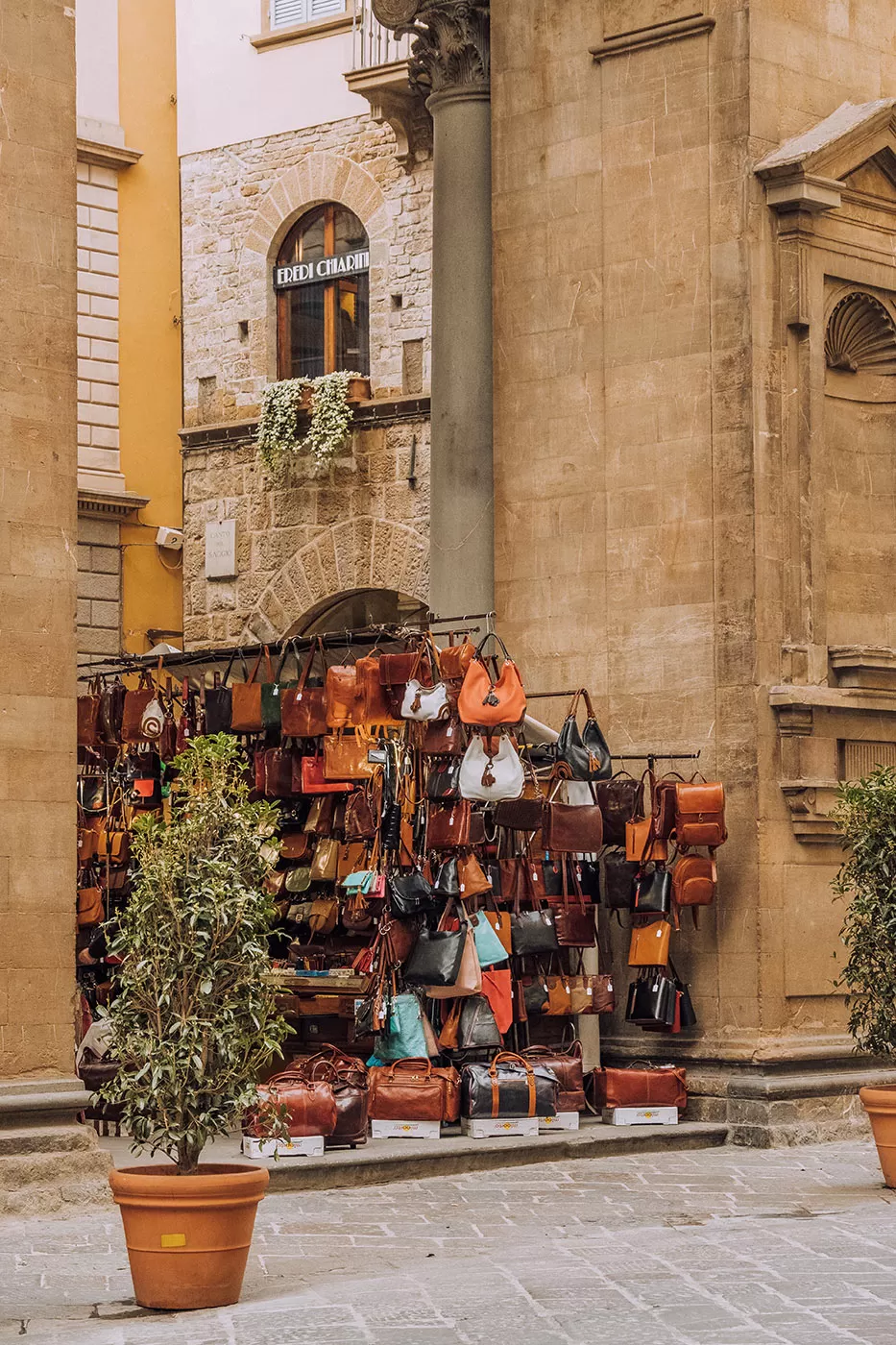 Florence is renowned for the high quality of its leather products, a centuries-old trade. Back in Medieval times, leather production was carried out near the Arno river, which was crucial for providing water for the tanning process and transporting the finished products. Throughout the centuries, the leather industry remained a key sector for the local economy and, in the early 20th century, was boosted thanks to Guccio Gucci (yep, that Gucci…), who opened his first shop of suitcases and leather accessories made by local artisans – the rest is history. Today there are numerous places to buy leather in Florence, from high-end boutiques to lively markets like that of San Lorenzo, with bags and jackets swaying in the breeze. The leather school (Scuola del Cuoio) in Santa Croce is a must-visit for something truly traditional.
Florence is renowned for the high quality of its leather products, a centuries-old trade. Back in Medieval times, leather production was carried out near the Arno river, which was crucial for providing water for the tanning process and transporting the finished products. Throughout the centuries, the leather industry remained a key sector for the local economy and, in the early 20th century, was boosted thanks to Guccio Gucci (yep, that Gucci…), who opened his first shop of suitcases and leather accessories made by local artisans – the rest is history. Today there are numerous places to buy leather in Florence, from high-end boutiques to lively markets like that of San Lorenzo, with bags and jackets swaying in the breeze. The leather school (Scuola del Cuoio) in Santa Croce is a must-visit for something truly traditional.
Become a craftsman for a day and make your own leather accessory with this hands-on workshop. Eugenio will guide you step-by-step as you make either a belt, a purse, or a small coin purse. Check availability and book your leather workshop here.
27. Visit Basilica of Santa Croce in Florence
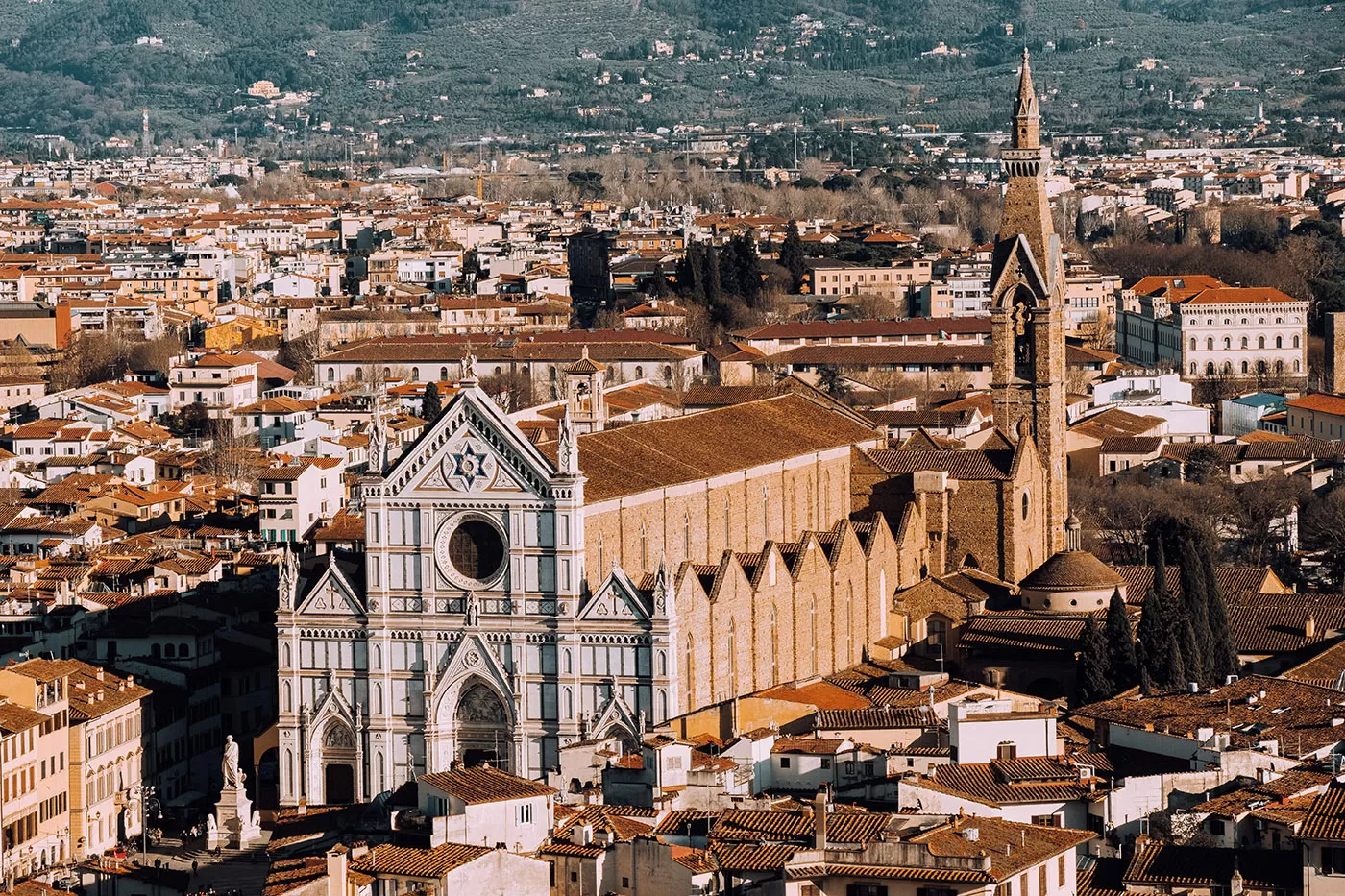 The Santa Croce Church has a rich history that dates back to the early 13th century when the Franciscan order made its way to Florence. Today, it stands as one of the largest Franciscan churches in the world. Despite being relatively under the radar when it comes to the best things to do in Florence, it truly is a gem. Byron himself was enchanted by the beauty of this church and proclaimed to be “drunk with beauty” after visiting. The interior of Santa Croce is a treasure trove of art and history. The Bardi Chapel boasts stunning frescoes depicting the Stories of St. Francis by Giotto, and there’s a wooden crucifix crafted by Donatello. Many notable Florentines, such as Michelangelo, Machiavelli, and Galileo, are buried in Santa Croce. Make sure you don’t miss the cloister and the friars’ refectory, where you will find the magnificent Tree of Life painted by Taddeo Taddei.
The Santa Croce Church has a rich history that dates back to the early 13th century when the Franciscan order made its way to Florence. Today, it stands as one of the largest Franciscan churches in the world. Despite being relatively under the radar when it comes to the best things to do in Florence, it truly is a gem. Byron himself was enchanted by the beauty of this church and proclaimed to be “drunk with beauty” after visiting. The interior of Santa Croce is a treasure trove of art and history. The Bardi Chapel boasts stunning frescoes depicting the Stories of St. Francis by Giotto, and there’s a wooden crucifix crafted by Donatello. Many notable Florentines, such as Michelangelo, Machiavelli, and Galileo, are buried in Santa Croce. Make sure you don’t miss the cloister and the friars’ refectory, where you will find the magnificent Tree of Life painted by Taddeo Taddei.
In keeping with the spirit of St. Francis, the convent of Santa Croce was founded in the 13th century in a poor neighbourhood that was lower than the bed of the Arno. It was thus inevitably exposed to the danger of flooding and not a century (occasionally not even a decade) went by without a terrible flood. The most destructive floods were in 1333, 1557, 1844 and 1966, the latter being the most destructive of all. Water mixed with oil and mud reached a height of five metres in the museum rooms, and the works of art on display were engulfed and badly damaged. Cimabue’s Crucifix is the symbol of the tragedy along with frescoes, panel paintings and canvases. Working with Soprintendenza staff, servicemen, volunteers and students, the friars shovelled away the mud and then helped to lay the panel paintings flat in order to prevent the paint from flaking because they lacked the materials required to fix it. The paintings were then moved elsewhere by whatever means came to hand, pending restoration which sometimes took decades – or even half a century in the case of Vasari’s Last Supper.
Taddeo Gaddi, Giotto’s pupil and assistant for twenty-four years, depicted the Last Supper beneath the Crucifixion, St. Francis receiving the stigmata and various other religious scenes associated with food, appropriate for what was then the friars’ refectory. The cross is portrayed as the “Tree of Life”, its twelve branches forming medallions with prophets. The fresco had to be detached and rehung after the flood of 1966.
How to visit:
- Get your tickets here
- Guided tour ideas:
- This tour of Santa Croce Basilica provides a comprehensive overview of the church and its art treasures
- During this tour, you’ll explore Santa Croce as well as visit the ancient leather school in the area
28. Relax in Florence’s gardens and parks
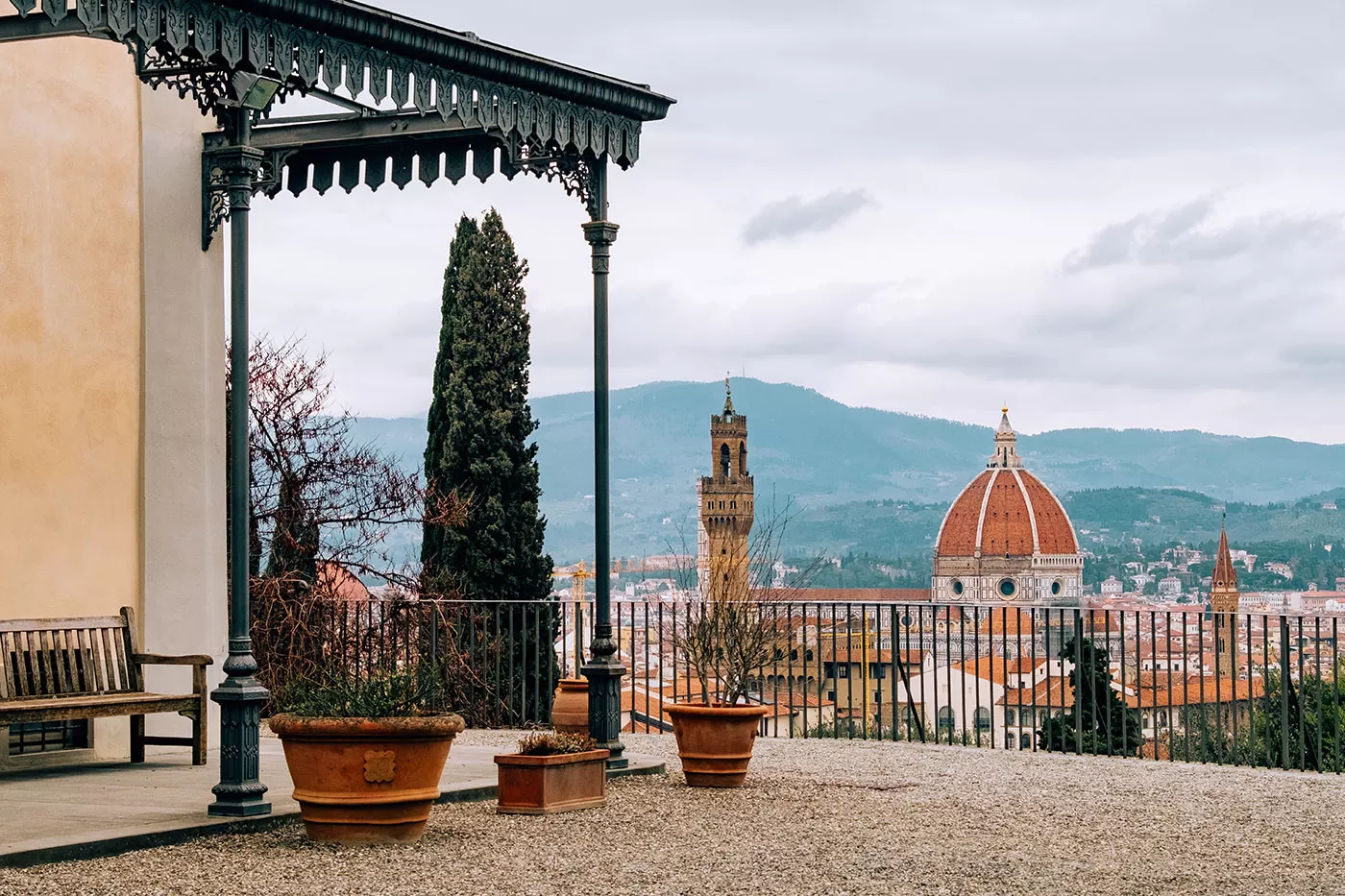
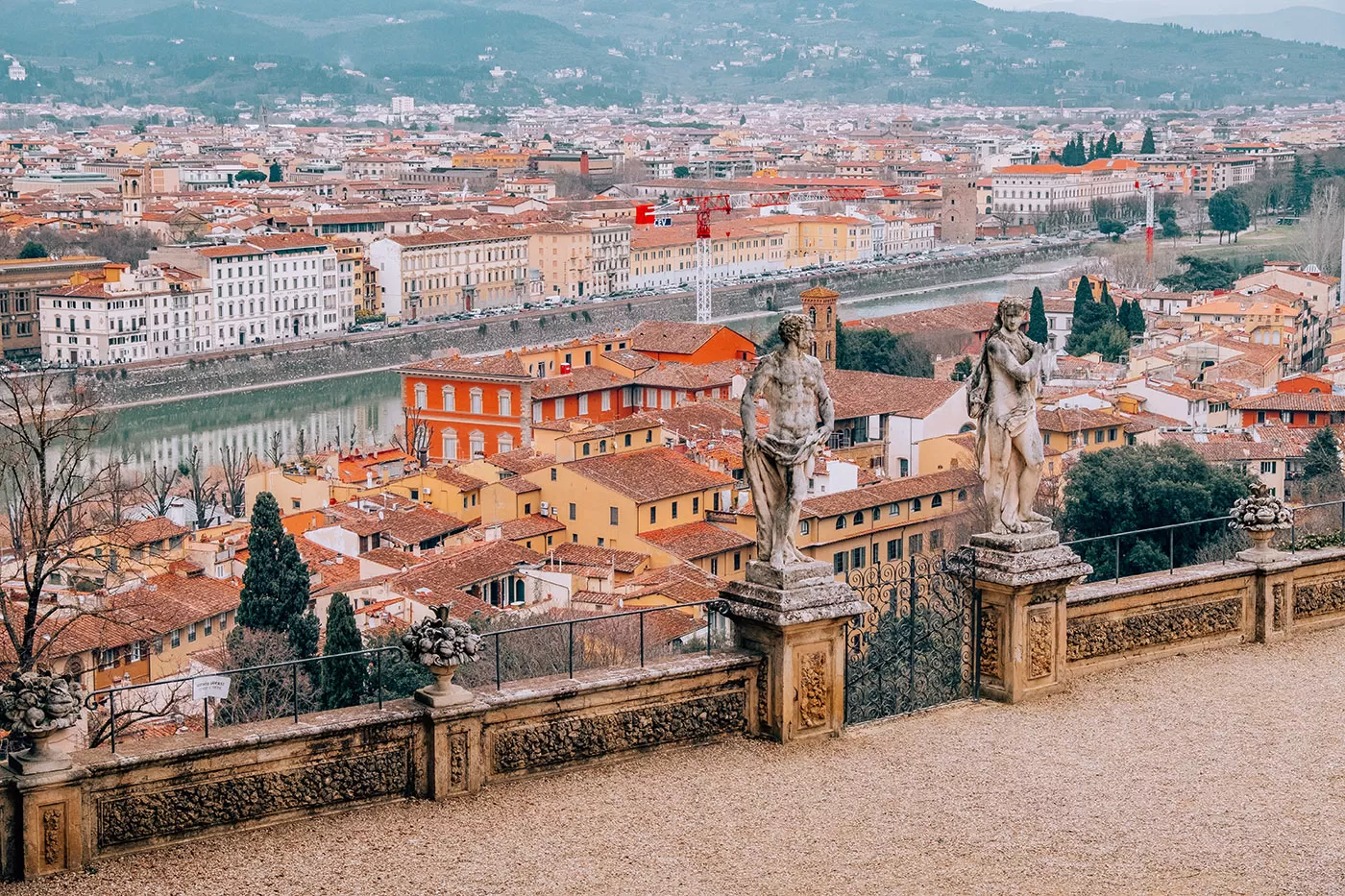 Taking a stroll in nature is an excellent way to de-stress and rejuvenate. Luckily, Florence has its fair share of green spaces beyond its famous architectural and artistic masterpieces. Many cozy gardens open to visitors, allowing you to unwind and see Florence outside the crowded tourist attractions. For instance, the Rose Garden and the Iris Garden located near Piazzale Michelangelo provide a serene atmosphere and stunning views of the city (and are among the best free things to do in Florence). Villa Bardini’s garden, near Ponte Vecchio, boasts a picturesque archway adorned with wisteria. And if you need a break from the heat during the summer months, visit Parco delle Cascine, the largest park in Florence, where you’ll find a cool pool just a short distance from the city center.
Taking a stroll in nature is an excellent way to de-stress and rejuvenate. Luckily, Florence has its fair share of green spaces beyond its famous architectural and artistic masterpieces. Many cozy gardens open to visitors, allowing you to unwind and see Florence outside the crowded tourist attractions. For instance, the Rose Garden and the Iris Garden located near Piazzale Michelangelo provide a serene atmosphere and stunning views of the city (and are among the best free things to do in Florence). Villa Bardini’s garden, near Ponte Vecchio, boasts a picturesque archway adorned with wisteria. And if you need a break from the heat during the summer months, visit Parco delle Cascine, the largest park in Florence, where you’ll find a cool pool just a short distance from the city center.
29. Enjoy an espresso with a view
In Florence, you’ll come across countless beautiful cafés. Still, sometimes, it’s just nice to escape the bustling crowds and noisy street vendors. If you’re seeking a peaceful retreat, look no further than Biblioteca delle Oblate. This public library is housed in a 14th-century former convent and boasts a delightful café that’s one of Florence’s best-kept secrets. Think glass walls, stunning views of the Cathedral from the terrace, affordable snacks, and a relaxed ambiance – the perfect place to unwind. Plus, if you’re traveling with kids, the library’s large children’s section is filled with books and games – a lovely treat for the little ones.
30. Aperitivo time – Home of the Negroni cocktail
Italians love their aperitivo, and no trip would be complete without partaking in this beloved pre-dinner ritual. One of the most popular drinks during this aperitivo is the Negroni cocktail, which originated in Florence at the Giacosa Café. It’s said that a gentleman called Count Camillo Negroni, a frequent visitor of the bar, asked the bartender Fosco Scarselli to add gin to his usual mix of Campari and vermouth instead of soda water. Scarselli garnished the drink with an orange instead of a lemon; thus, the Negroni cocktail was created. It was the early 1920s and since then Negroni has become a classic. Sadly, the café is closed now, but Florence has plenty of interesting locations for a pre-dinner drink and bite. Discover the best aperitivo in Florence with this guide to the best spots in town.
31. Go on a food tour
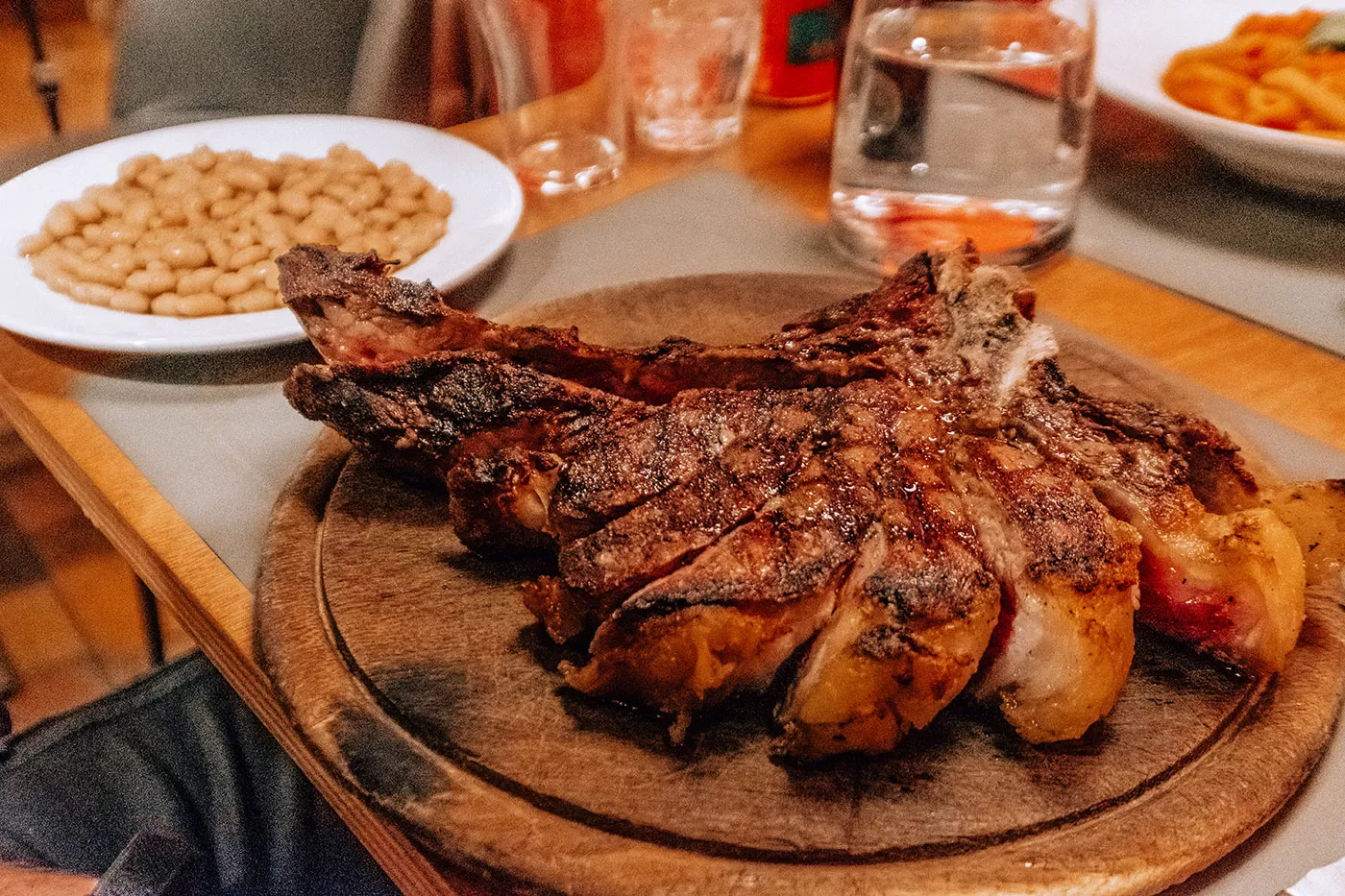
Florentine steak
Florence has a dish to satisfy every palate from handmade pasta and bruschette to succulent steaks and rustic lampredotto paninis. While finding good restaurants is relatively easy, taking part in a food tour will truly immerse you in the local cuisine, offering a glimpse into the traditions and customs that have shaped the cuisine and the stories behind the famous dishes the city is known for. Plus, the tours are conducted by passionate locals who share their passion for the city’s cuisine and offer insider tips on the best places to eat. This top-rated small-group food walking tour is a great introduction to the local specialties. This fantastic evening food tour includes the iconic Fiorentina steak. For a more private, off-the-beaten-path food experience, consider this private tour of Sant’Ambrogio’s market.
32. Explore Florence by bike
Whizzing through the city on two wheels is a fun way to see the sights. Not only does it cover a lot of ground, but it also gives you the opportunity to venture down back allies and see what the city looks like beyond the well-trodden tourist paths. You can either rent a bike or join a guided tour led by a professional guide. For instance, this bike tour of Florence takes you to the city’s main attractions and includes a gelato tasting, while this one leads up to the belvedere of Piazzale Michelangelo. If you’re concerned about the physical demand, an e-bike version of the same tour is also available, making it easy to tackle the Florentine hills with a battery-powered assist. And for a truly unique experience, there’s even this e-bike night tour that sets off at 8:00 PM, allowing you to enjoy the mesmerizing atmosphere of Florence after dark.
- This e-bike tour takes you around the historic center and Piazzale Michelangelo, too. A similar tour is available at night here
33. Take a day trip from Florence
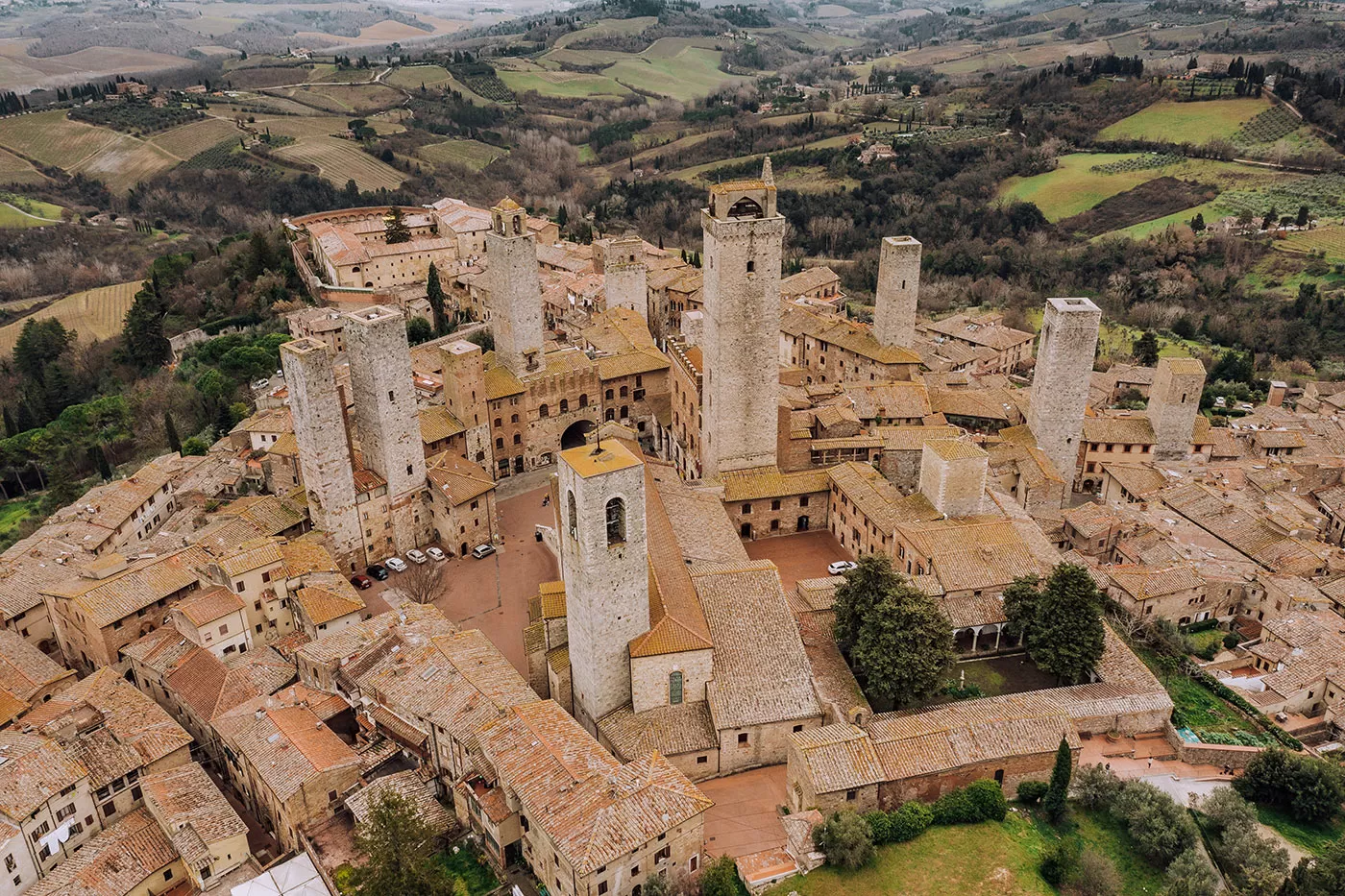
Day trip to San Gimignano
If you have a little more time while in Florence, consider taking a day trip to experience more of the region. From enchanting medieval villages to UNESCO treasures and lush vineyards, there’s so much to discover within a short distance from Florence. If you are short on time, consider joining a guided tour to maximize your experience, so you don’t have to depend on public transport or worry about driving. One option is this hugely popular Tuscany day trip which takes you to Siena, San Gimignano, and Pisa and includes lunch at a Chianti winery. Wine enthusiasts can opt for this Chianti wine tour which delves deeper into the world of Tuscan vineyards. If you love the sea, a day trip to the picturesque seaside villages of Cinque Terre and Portovenere with this tour is ideal.
Don’t miss my guide to the BEST things to do in San Gimignano
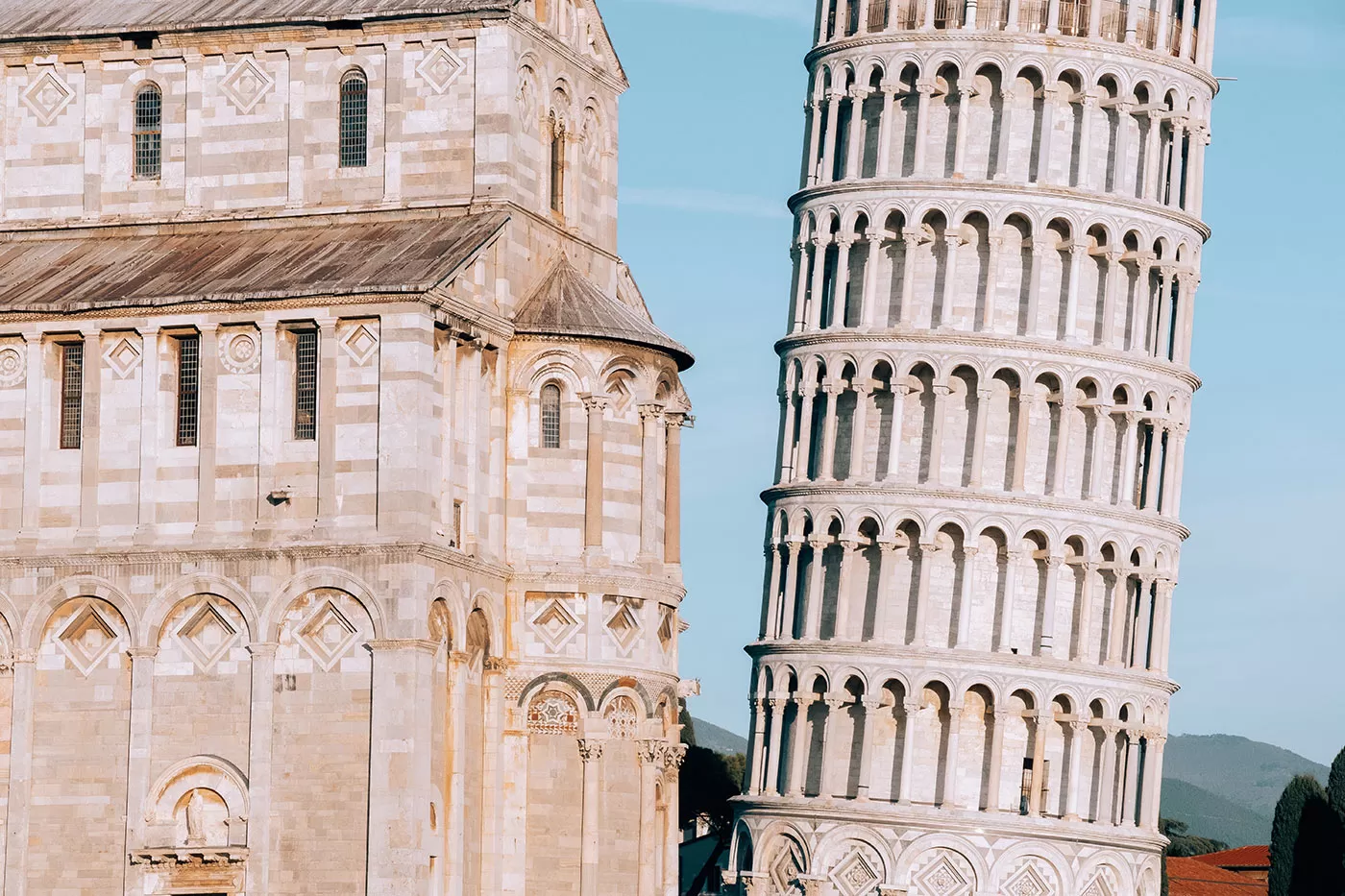
Don’t be treated like a tourist. Learn Italian with my 80/20 method
Travelling to Italy? Don’t be treated like a tourist! Live your best travel experiences and learn Italian for less than the cost of eating at a tourist trap restaurant or a taxi driver who has “taken you for a ride”. I’ve made it easy for you to master the Italian language so you can create lifelong memories as you mingle with locals, get local tips, avoid tourist traps, and make new friends. Who knows, you might even be invited over for afternoon tea by a lovely Sicilian family like I was! Read all about how speaking Italian changed my life and check out my online Italian video course here.
Here’s what my students are saying:

I really enjoyed the Intrepid Italian course, it certainly exceeded my expectations. The learning methodology is great, and easy to follow and found that I progressed much faster in the last 4 weeks than I ever did on my own or using other language apps. Grazie mille Michele, I can’t wait until I can put my new skills into action! – Roma Small
Join now and learn anywhere, anytime
Planning a trip and need travel insurance? Get a free quote from World Nomads here.
Don’t miss these guides to Florence and Tuscany
- 20+ Fabulous Free Things to do in Florence
- 21 Unique Things to Do in Florence: Hidden Gems, Unusual Attractions & Quirky Tours
- 27 Florence Tips: AVOID These Mistakes When Visiting Florence, Italy
- Where to Stay in Florence: Best Areas, Hotels, and Apartments
- Where to Find the Best Gelato in Florence: 16 Top Gelaterie (Map Included)
- Where to Have the Best Aperitivo in Florence
- 9 Beautiful Wine Windows in Florence and Where to Find Them (Map Included)
- 19 BEST Things to do in Pisa, Italy (Includes Map and 1-DAY Itinerary)
- 13 BEST Things to do in San Gimignano, Italy // The Manhattan of the 14th-Century
Like it? Pin it for later!
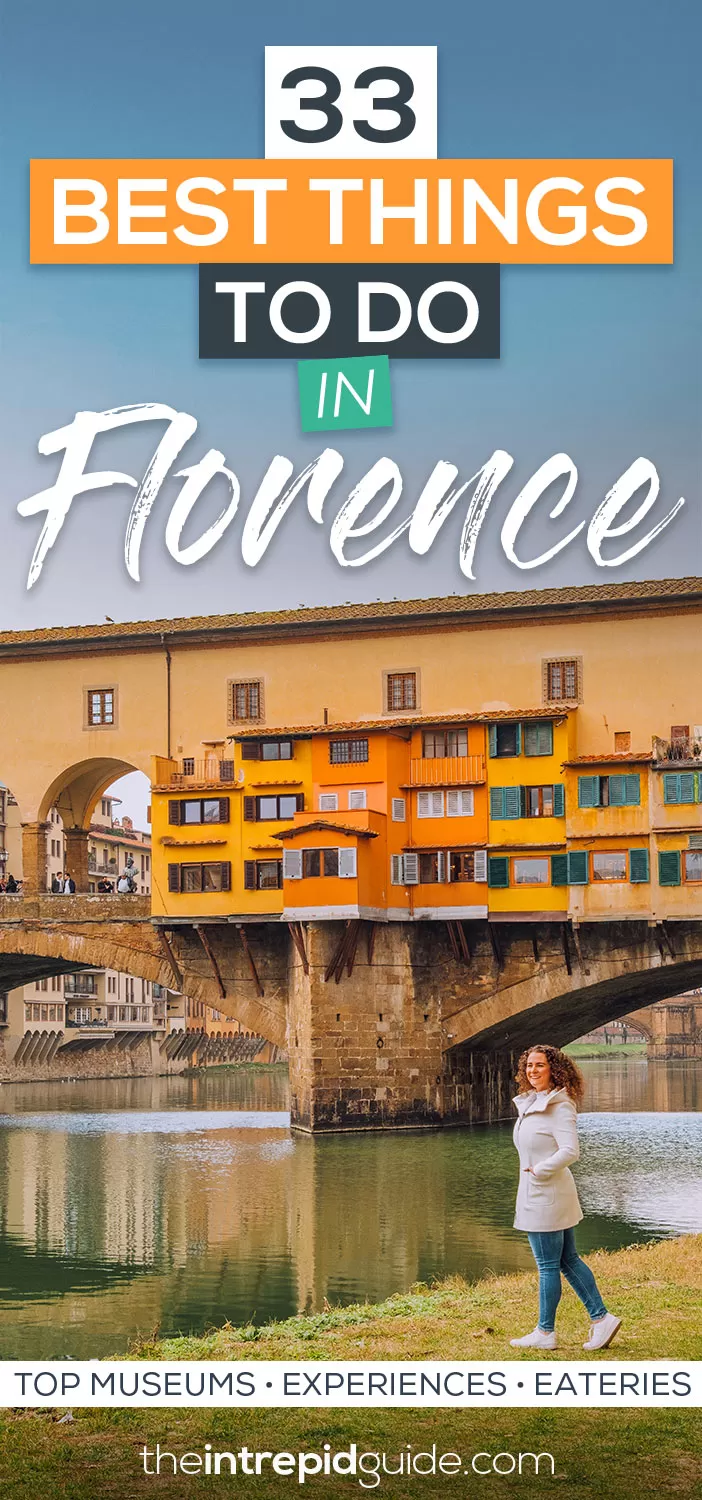
Over to you!
Did you enjoy this guide? Let me know using the comments section below or join me on social media to start a conversation.
Thanks for reading and I hope you enjoyed this post.
Like what you see? Subscribe using the form below to have all of my posts delivered directly to your email.

